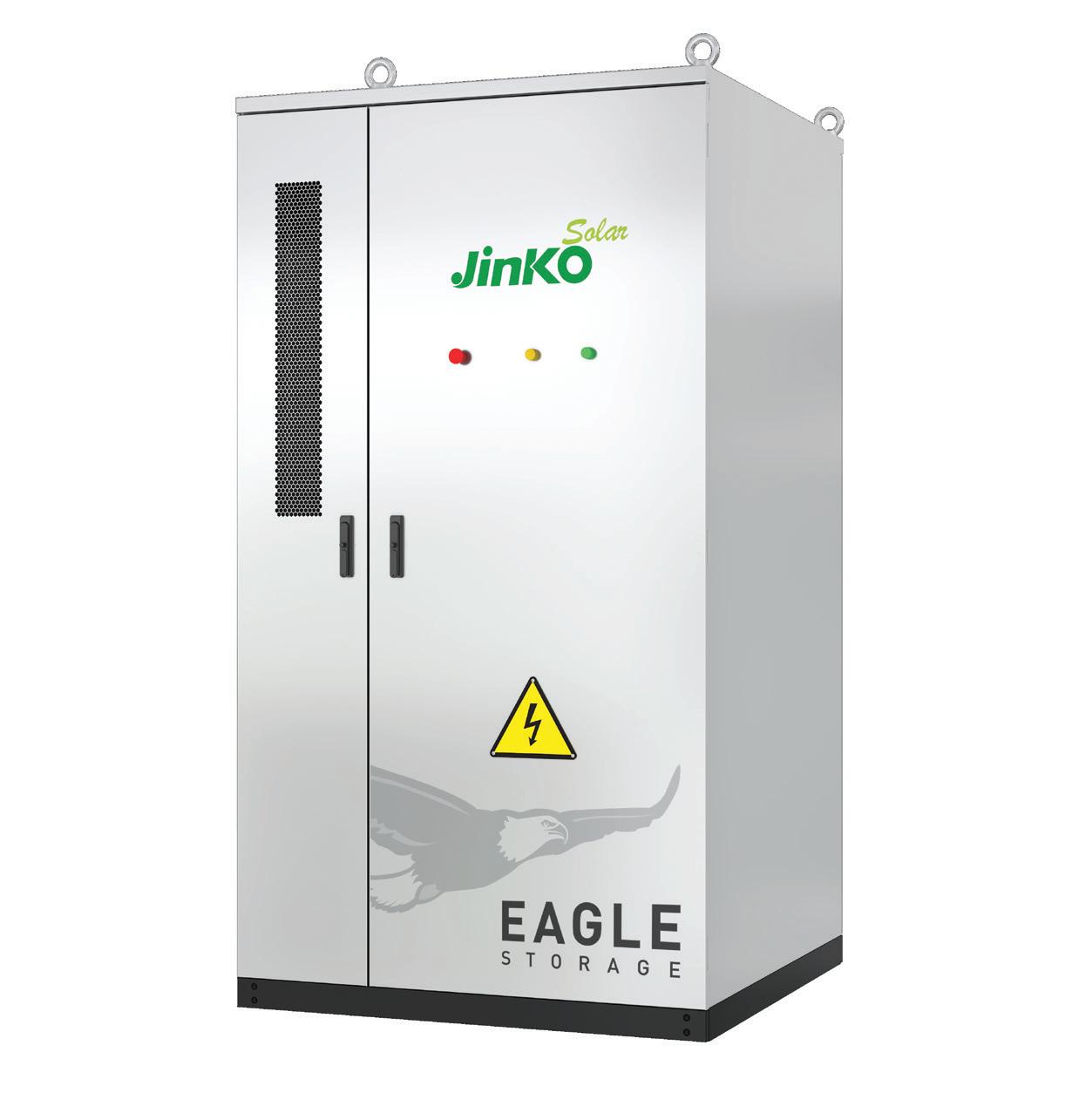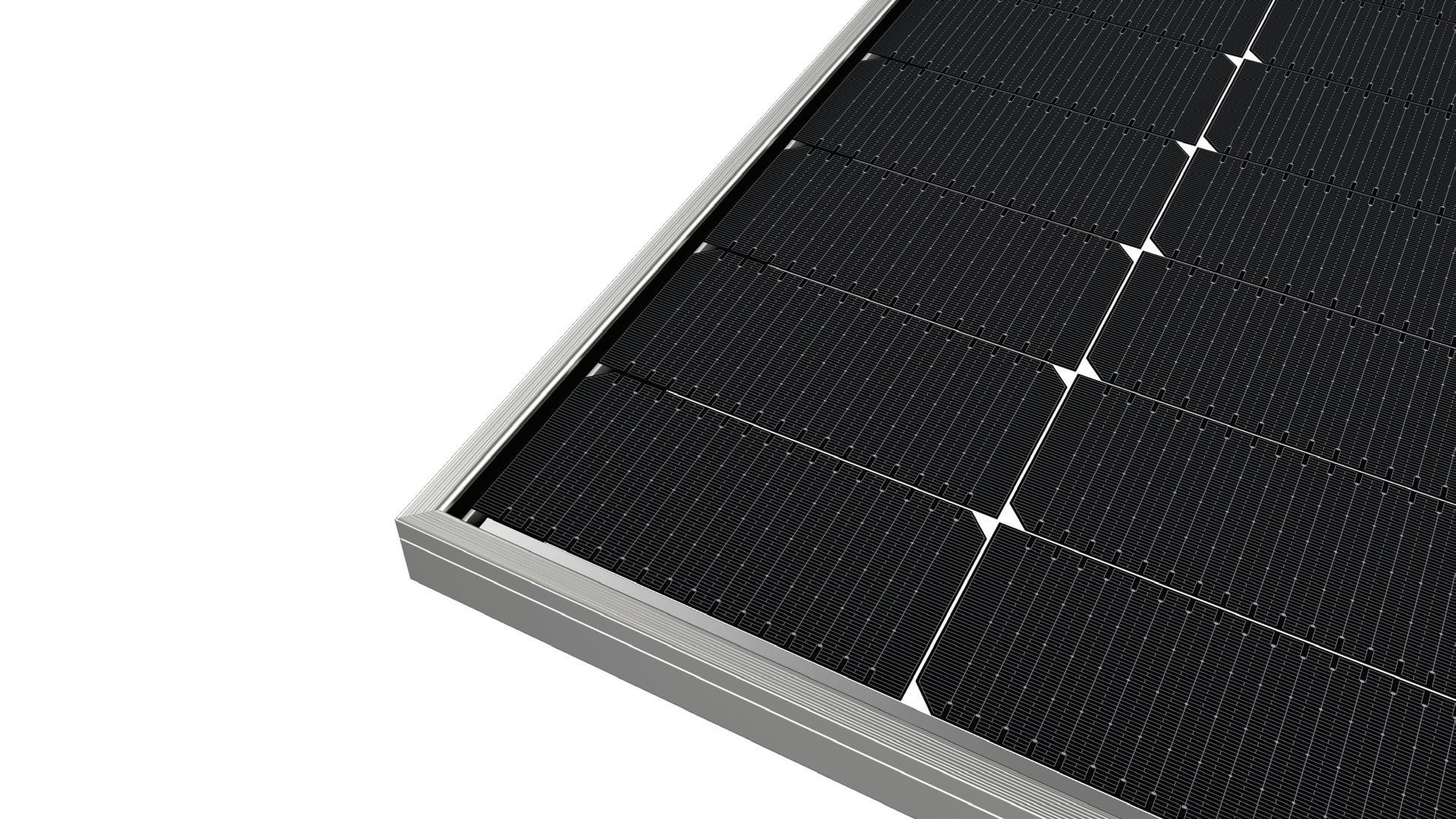MANUFACTURING BOOM SOLAR AMERICA’S
SOLAR TRACKERS AND EXTREME WEATHER
TACKLING SOLAR STORMWATER MITIGATION
MODULE SHIPPING AND HANDLING IMPROVEMENTS
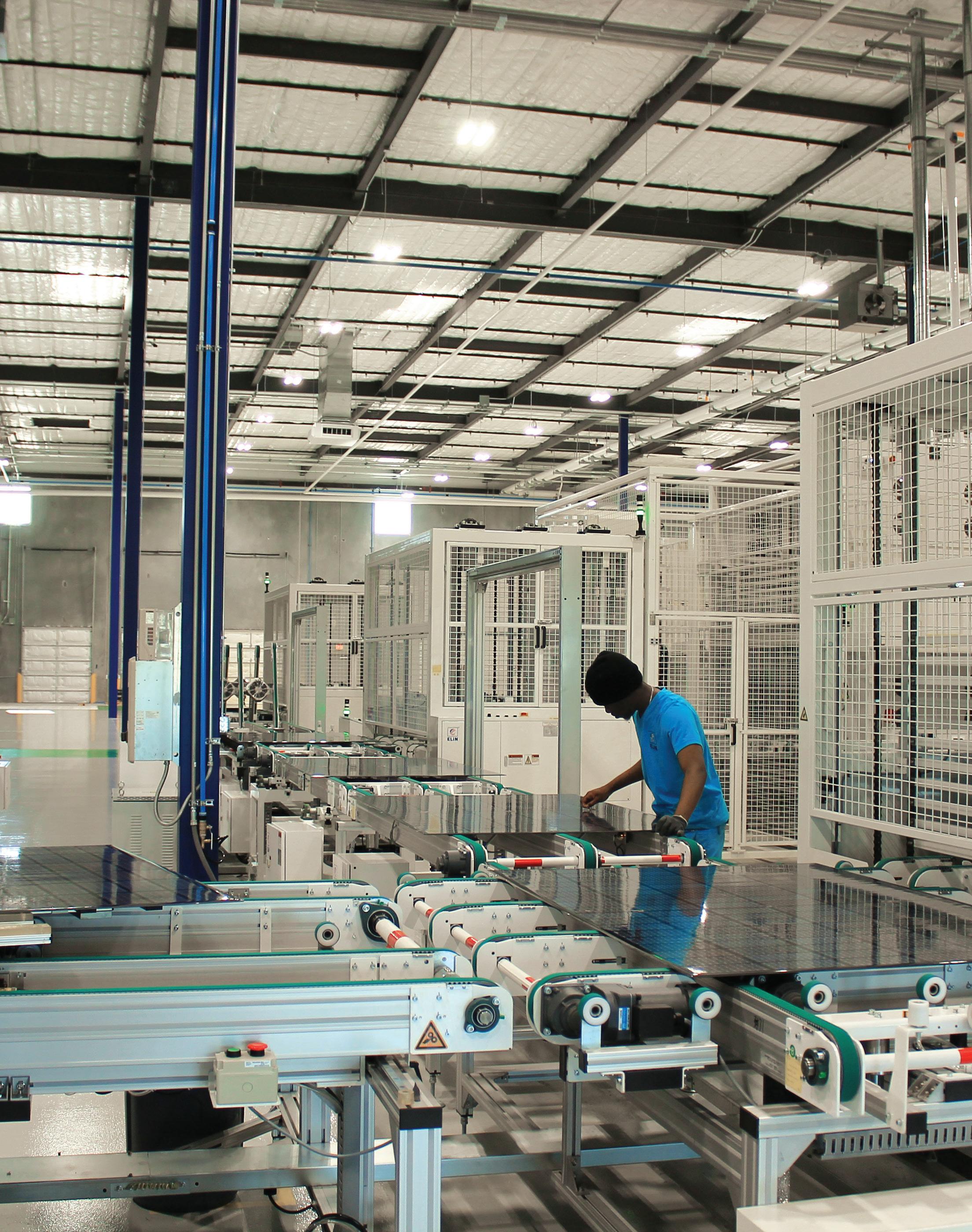




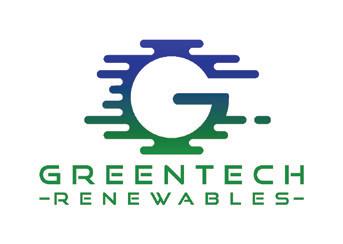
SOLAR PV SYSTEM EQUIPPED WITH RAPID SHUTDOWN TURN RAPID SHUTDOWN SWITCH TO THE “OFF” POSITION TO SHUT DOWN PV SYSTEM AND REDUCE SHOCK HAZARD IN THE ARRAY SOLAR ELECTRIC PV PANELS #05-112 - 2023 NEC 690.12(D) #05-379 - 2023 NEC 690.31(B)(1) INVERTER OUTPUT CIRCUIT #05-383 - 2023 NEC 690.31(B)(1) #05-324 - 2023 NEC 110.22(A) #05-323 - 2023 NEC 110.22(A) AC DISCONNECT AMPS VOLTS PHOTOVOLTAIC SYSTEM POWER SOURCE RATED AC OUTPUT CURRENT NOMINAL OPERATING AC VOLTAGE #03-306 - 2023 NEC 690.31(D)(2)(c) #05-346 - 2023 NEC POPULAR ITEM SOURCES UTILITY GRID AND PV SOLAR ELECTRIC SYSTEM #05-411 - 2023 NEC POPULAR ITEM AC JUNCTION BOX DO NOT TOUCH TERMINALS TERMINALS ON BOTH THE LINE AND LOAD SIDES MAY BE ENERGIZED ELECTRIC SHOCK HAZARD CAUTION SOLAR CIRCUIT #05-219 - 2023 NEC 690.13(B) DC JUNCTION BOX ELECTRIC SHOCK HAZARD DO NOT DISCONNECT UNDER LOAD PHOTOVOLTAIC POWER SOURCE DC JUNCTION BOX ELECTRIC SHOCK HAZARD DO NOT DISCONNECT UNDER LOAD PHOTOVOLTAIC POWER SOURCE #05-232 - 2023 NEC 690.15(B) PV SYSTEM DISCONNECT ELECTRIC SHOCK HAZARD TERMINALS ON THE LINE AND LOAD SIDES MAY BE ENERGIZED IN THE OPEN POSITION PV SYSTEM DISCONNECT ELECTRIC SHOCK HAZARD TERMINALS ON THE LINE AND LOAD SIDES MAY BE ENERGIZED IN THE OPEN POSITION #05-109 - 2023 NEC 690.13(B) TERMINALS ON THE LINE AND LOAD SIDES MAY BE ENERGIZED IN THE OPEN POSITION ELECTRIC SHOCK HAZARD TERMINALS ON THE LINE AND LOAD SIDES MAY BE ENERGIZED IN THE OPEN POSITION ELECTRIC SHOCK HAZARD #05-215 - 2023 NEC 690.13(B)THIS EQUIPMENT FED BY MULTIPLE SOURCES. TOTAL RATING OF ALL OVERCURRENT DEVICES, EXCLUDING MAIN SUPPLY OVERCURRENT DEVICE, SHALL NOT EXCEED AMPACITY OF BUSBAR. #05-108 - 2023 NEC 705.12(B)(3) POWER SOURCE OUTPUT CONNECTION DO NOT RELOCATE THIS OVERCURRENT DEVICE #05-216 - 2023 NEC 705.12 B)(2 #05-355 - 2023 NEC 690.4(B) #05-326 - 2023 NEC 690.15(B) DC DISCONNECT MAXIMUM DC VOLTAGE OF PV SYSTEM: VOLTS #05-234 - 2023 NEC 690.7(D) MAXIMUM VOLTAGE MAX CIRCUIT CURRENT VDC AMPS DIRECT CURRENT PHOTOVOLTAIC POWER SOURCE #05-208 - 2023 NEC 690.7(D) TURN OFF PHOTOVOLTAIC AC DISCONNECT PRIOR TO WORKING INSIDE PANEL pvlabels.com WARNING #05-372 - 2023 NEC 110.27(C) PV SYSTEM kWh METER #05-341 - 2023 NEC 690.4(B) MAXIMUM DC VOLTAGE OF PV SYSTEM MAXIMUM DC VOLTAGE OF PV SYSTEM #03-303 - 2023 NEC 690.7(D) #05-330 - 2023 NEC POPULAR ITEM #05-327 - 2023 NEC 690.13(B) DO NOT CONNECT MULTIWIRE BRANCH CIRCUITS SINGLE 120-VOLT SUPPLY WARNING #05-213 - 2023 NEC 705.82 THE DISCONNECTION OF THE GROUNDED CONDUCTOR (S) MAY RESULT IN OVERVOLTAGE ON THE EQUIPMENT #05-217 - 2023 NEC 690.31(E) #05-803 - 2023 NEC 690.31(B)(2) #05-322 - 2023 NEC 690.4(B) NOT FOR CURRENT INTERRUPTING #05-406 - 2023 NEC 690.15(B) PHOTOVOLTAIC POWER SOURCE PHOTOVOLTAIC POWER SOURCE PHOTOVOLTAIC POWER SOURCE PHOTOVOLTAIC POWER SOURCE #03-315 - 2023 NEC 690.31 pvlabels.com SOLAR PV DC CIRCUIT SOLAR PV DC CIRCUIT SOLAR PV DC CIRCUIT #03-313 - 2023 NEC 690.31(D)(2) MULTIPLE SOURCES OF POWER MULTIPLE SOURCES OF POWER #05-307 - 2023 NEC 705.10(3) RAPID SHUTDOWN SWITCH FOR SOLAR PV SYSTEM #02-316 - 2023 NEC 690.12(D)(2) #03-308 - 2023 NEC 690.7 D & 690.8(A)(1) NOMINAL OPERATING AC VOLTAGE NOMINAL OPERATING AC FREQUENCY V Hz MAXIMUM AC POWER VA #03-309 - 2023 NEC 690.7(D) #03-326 - 2023 NEC 690.15(B) #03-396 - 2023 NEC 225.41(C) #03-327 - 2023 NEC 690.13(B) #03-305 - 2023 NEC 706.15(C) DC COMBINER BOX MAXIMUM DC VOLTAGE OF PV SYSTEM VOLTS #05-233 - 2023 NEC 690.7(D) SOLAR INVERTER MAXIMUM DC VOLTAGE OF PV SYSTEM VOLTS #05-235 - 2023 NEC 690.7(D) pvlabels.com 2023 NEC #05-347 #05-342 #05-345 #05-343 690.31(D)(2 690.4(B) #05-809 2023 NEC 690.13(B) NEGATIVE NEGATIVE NEGATIVE NEGATIVE NEGATIVE POSITIVE POSITIVE POSITIVE POSITIVE POSITIVE 2023 NEC 690.31(B)(2) UV Film Lamination Same Day Service Code Compliance Largest Selection MADE IN USA Custom Items Plastic Placards Vinyl Labels Metal Signs Reflective NEC 2014 PACKS NEC 2011 PACKS IN STOCK - NOW NEC 2023 PACKS NEC 2020 PACKS NEC 2017 PACKS THIS IS BUILDING IS SUPPLIED BY MULTIPLE SOURCES OF POWER WITH DISCONNECTS LOCATED AS SHOWN: CAUTION SALE $39.00 Special Price Includes 2023 Placement Guide 2023 Pack - 88 Pieces EMERGENCY DISCONNECT PHOTOVOLTAIC SYSTEM DISCONNECT ENERGY STORAGE SYSTEM DISCONNECT DO NOT DISCONNECT UNDER LOAD

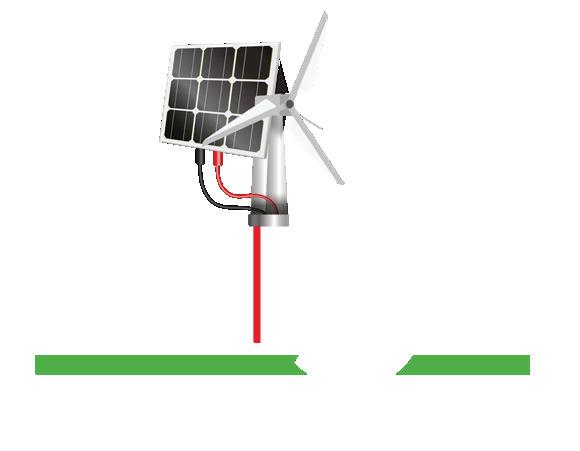

If you can dream it, we can do it.
Our focus is utility-scale solar power, wind power, and battery storage applications, but our mission is providing you with valuable engineering resources and substantial savings.
With Paige, it’s possible.
Value engineering From early project stages through completion

PnP solutions For a simpler installation



In-stock inventory >$20M of 35kV, 2kV, fiber and more
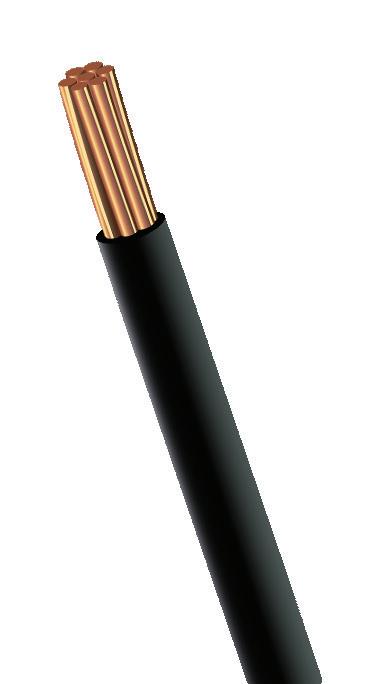
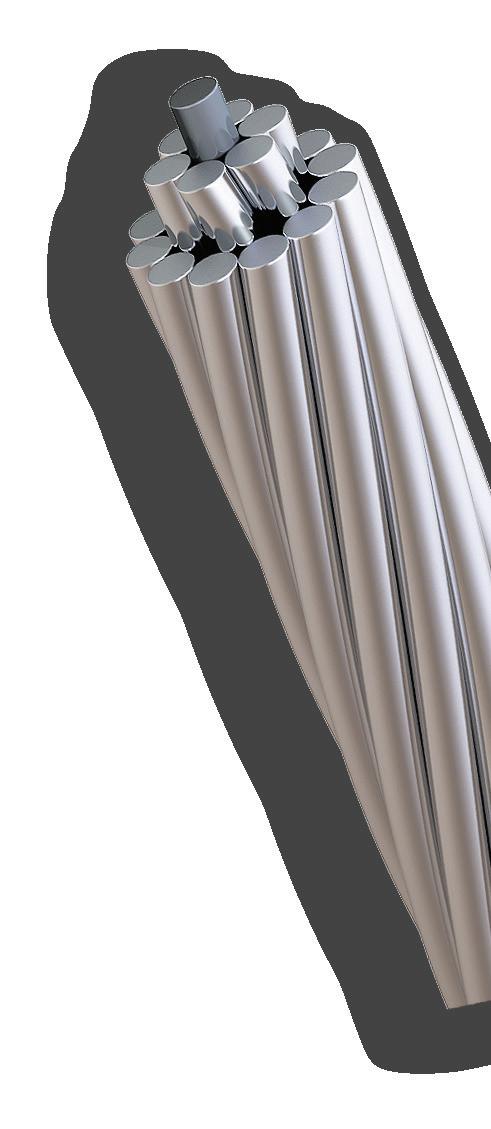
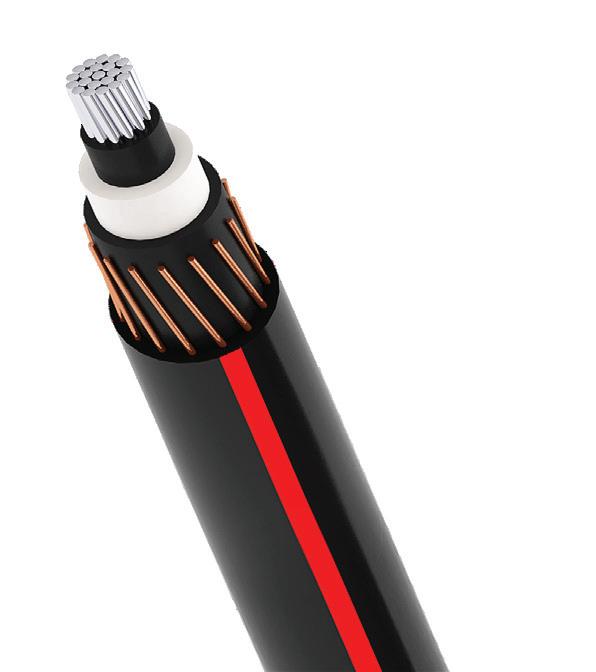
Increase
capabilities.
bottom line.
your
Reduce your
paigerenewableenergy.com | (908) 837-0322
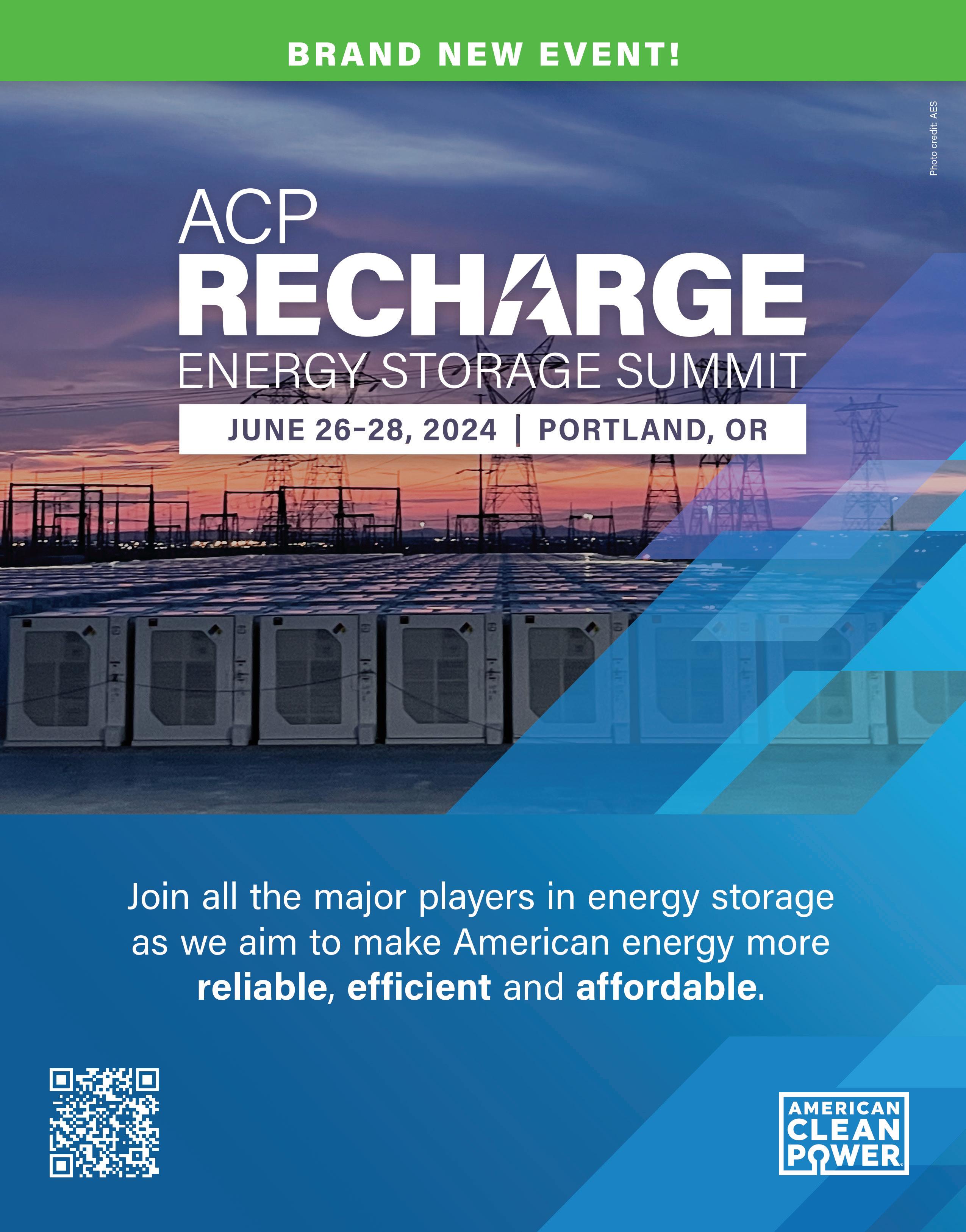
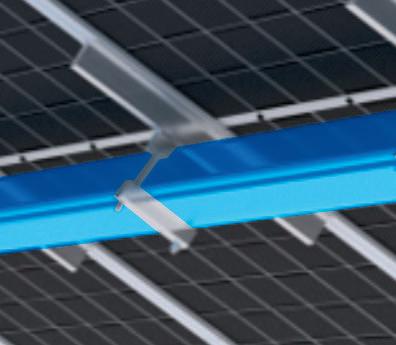
Optimized Torque Tube improves the torsional resistance by 29.6%, and the bending resistance by 12.4%.
Patented Spherical Bearing dissipates the extra stress, reducing each component’s load and failure rate.
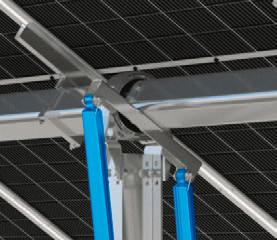
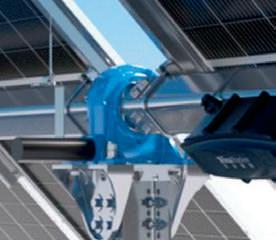
Bilateral Damper System prevents oscillation and improves wind resistance by 20%.











As part of the newly enhanced Smart Control System, which includes Smart Controller and SuperTrack algorithm, Trina Smart Cloud (SCADA) delivers smarter O&M management:
• Remotely monitors and gathers real-time weather information and installation performance
• Rapidly analyzes data and operating states online
• Forecasts and reports real-time fault diagnosis and takes corrective measures
• Provides preventive O&M recommendations
• Enhances safety with more reliable “Active Stow Protection”
• Optimizes components, control, and command
• Minimizes energy production loss
Just another reason Trina Solar is your trusted partner for complete solar solutions.
Up to 620W Output Vanguard TM 1P
TOPCon PV Module
Patented
COMPLETE
Learn More • Contact Us trinasolar.com/us/contact-us
Elementa 2
SOLAR SOLUTIONS
PUBLISHER
Courtney Nagle cseel@wtwhmedia.com 440.523.1685
EDITORIAL
Editor in Chief
Kelly Pickerel kpickerel@wtwhmedia.com @SolarKellyP
Managing Editor
Kelsey Misbrener kmisbrener@wtwhmedia.com @SolarKelseyM
Senior Editor
Billy Ludt bludt@wtwhmedia.com @SolarBillyL
CREATIVE SERVICES & PRINT PRODUCTION
Senior Graphic Designer
Mariel Evans mevans@wtwhmedia.com
FINANCE
Controller
Brian Korsberg bkorsberg@wtwhmedia.com
Accounts Receivable Specialist
Jamila Milton jmilton@wtwhmedia.com
MARKETING
VP of Operations
Virginia Goulding vgoulding@wtwhmedia.com
Webinar Manager
Matt Boblett mboblett@wtwhmedia.com
ONLINE DEVELOPMENT & PRODUCTION
Web Development Manager
B. David Miyares dmiyares@wtwhmedia.com
Digital Media Manager Patrick Curran pcurran@wtwhmedia.com
CUSTOMER SERVICE
Customer Service Manager
Stephanie Hulett shulett@wtwhmedia.com
Customer Service Representative
JoAnn Martin jmartin@wtwhmedia.com
Customer Service Representative Tracy Powers tpowers@wtwhmedia.com
Customer Service Representative
Renee Massey-Linston renee@wtwhmedia.com
Customer Service Representative
Trinidy Longgood tlonggood@wtwhmedia.com
O&M advancements keep large-scale solar + storage
projects humming
While the residential solar market has taken a hit from new incentive regimes in the largest solar state, the large-scale solar sector is still on the upswing. IRA incentives for medium and large projects have spurred new proposals — a Berkeley Labs study found developers submitted over 1,100 GW of solar, storage and wind project interconnection requests since the IRA’s passage.
“The IRA supercharged the already-vigorous market for clean energy and storage development,” said Nick Manderlink, a co-author of the new Berkeley Labs report, in a press release.
Another study by the SUN DAY Campaign found utility-scale solar was the largest source of U.S. electrical generating capacity for six months straight.
“Without question, solar is on a roll as it surpasses FERC’s expectations and leads all other energy sources in providing new generating capacity,” said SUN DAY Campaign executive director Ken Bossong in a press release. “Including distributed solar, the mix of all renewables is poised to surpass natural gas capacity within the next few years.”
This growth will be further boosted by new federal rules for renewable energy projects on public lands that reduce fees and simplify development on these tracts.
While new project announcements and developments may be the most exciting part, keeping these renewable energy projects running at their full potential for their long lifespans is an important piece of the story too. That’s why we dedicate this issue each year to solar + storage operations and maintenance — exploring the ways developers can make sure projects are protected from the elements, monitored for abnormalities and set up for success.
In this issue, we also explore the latest in U.S. solar manufacturing developments spurred by the IRA, with a special focus on the new Solar Valley — Texas. One city in the Lone Star State will soon be the most concentrated area in the United States for solar panel manufacturing.
Utility-scale solar is booming, along with new technologies and techniques to ensure projects meet all their performance metrics and keep producing power for many years. SPW


FIRST WORD STAFF 4 SOLAR POWER WORLD MAY 2024 www. solarpowerworldonline .com
kmisbrener@wtwhmedia.com
Managing Editor
Kelsey Misbrener
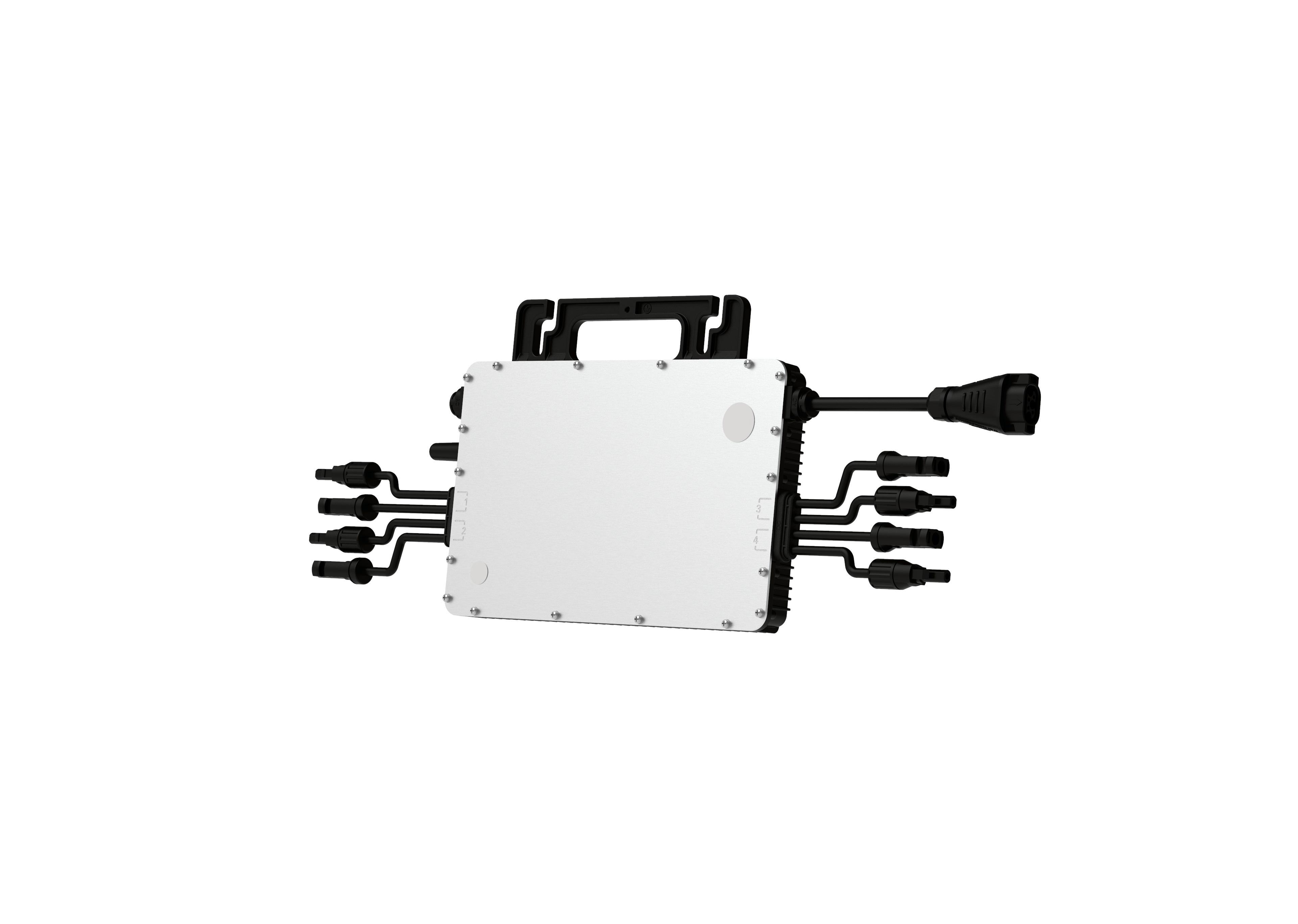
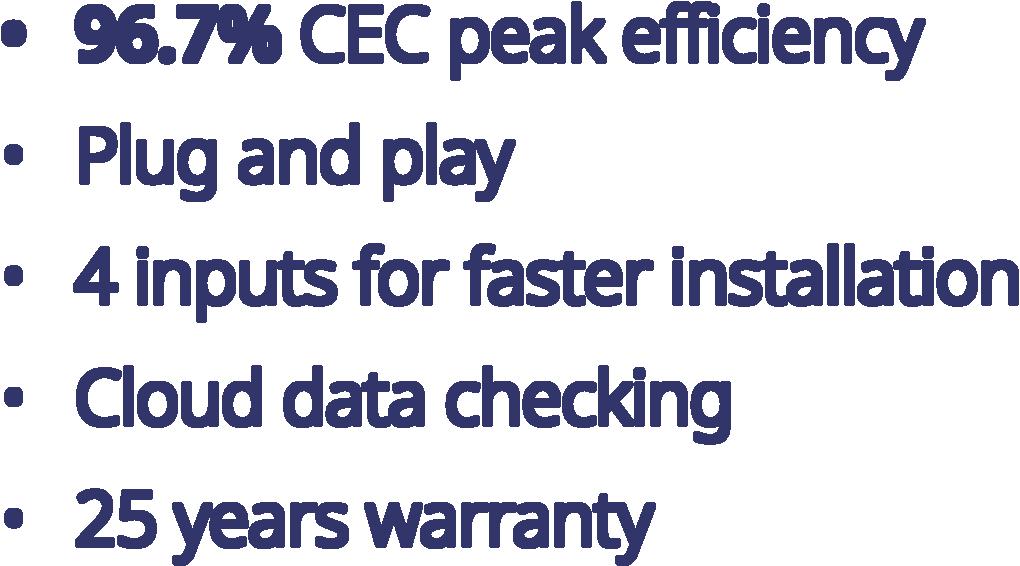
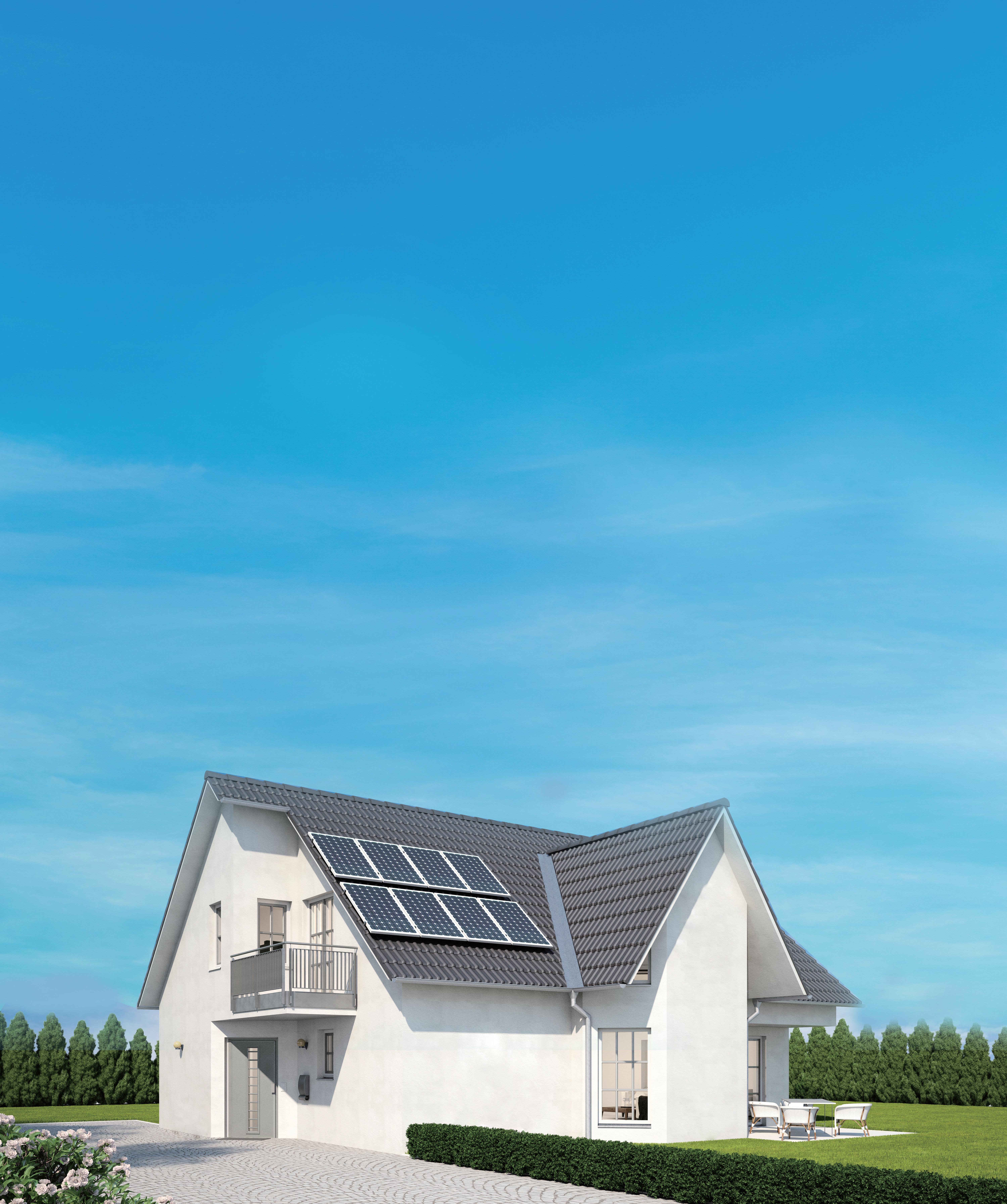
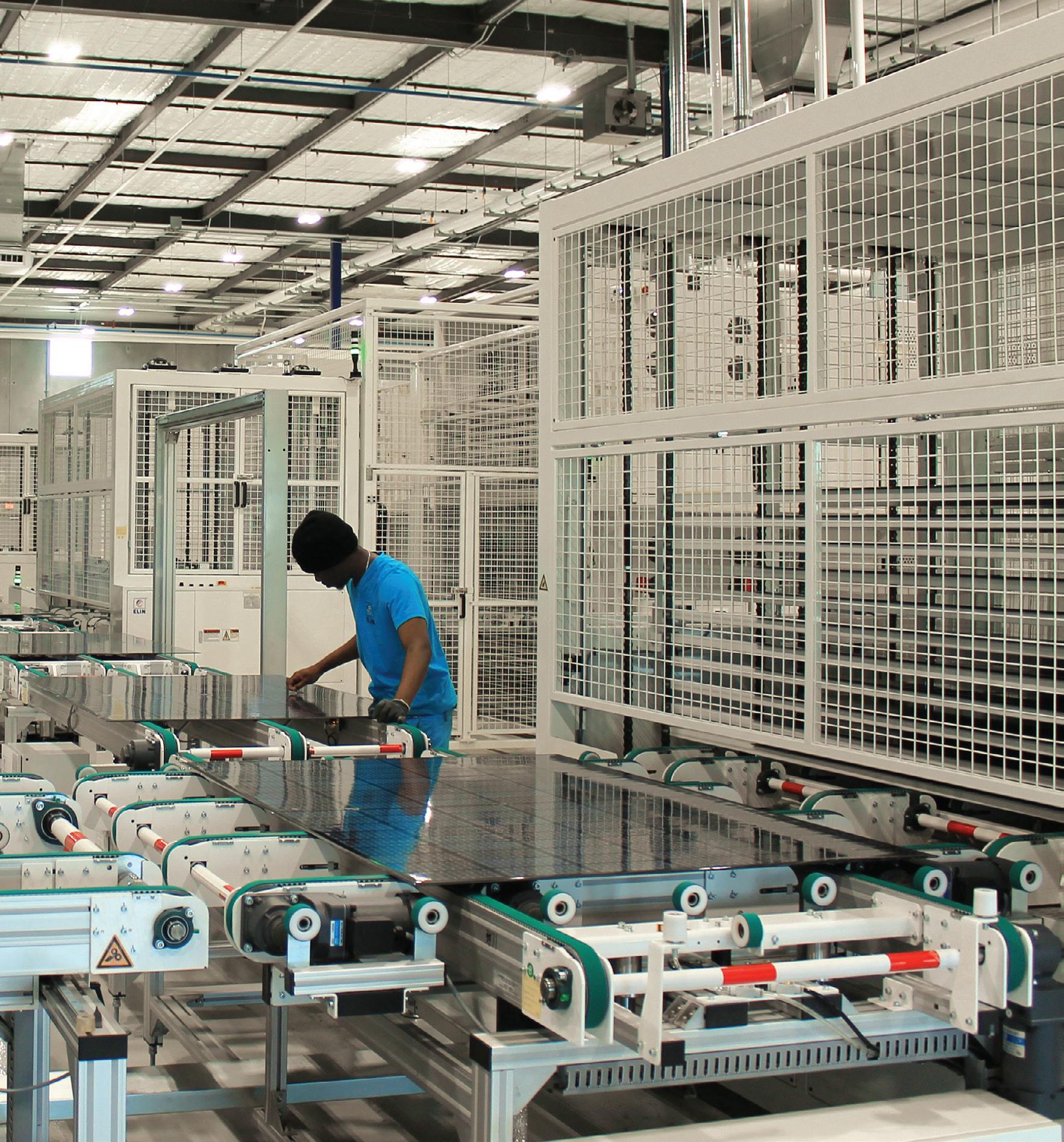
Domestic solar manufacturing is here thanks to IRA credits and other incentives to buy American. One state in particular is becoming the epicenter for new solar factories — oil-rich Texas. Credit: Sirius PV
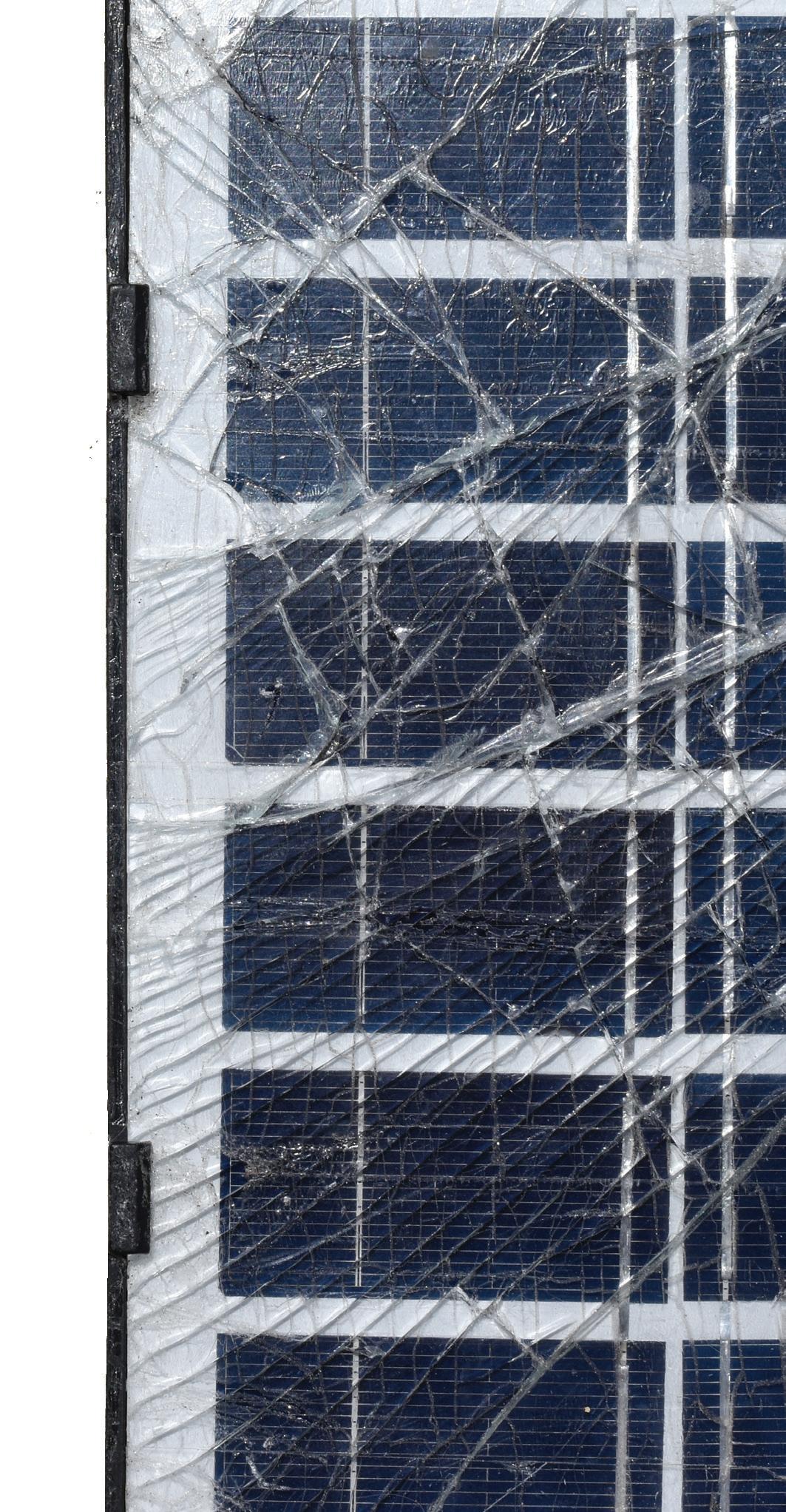
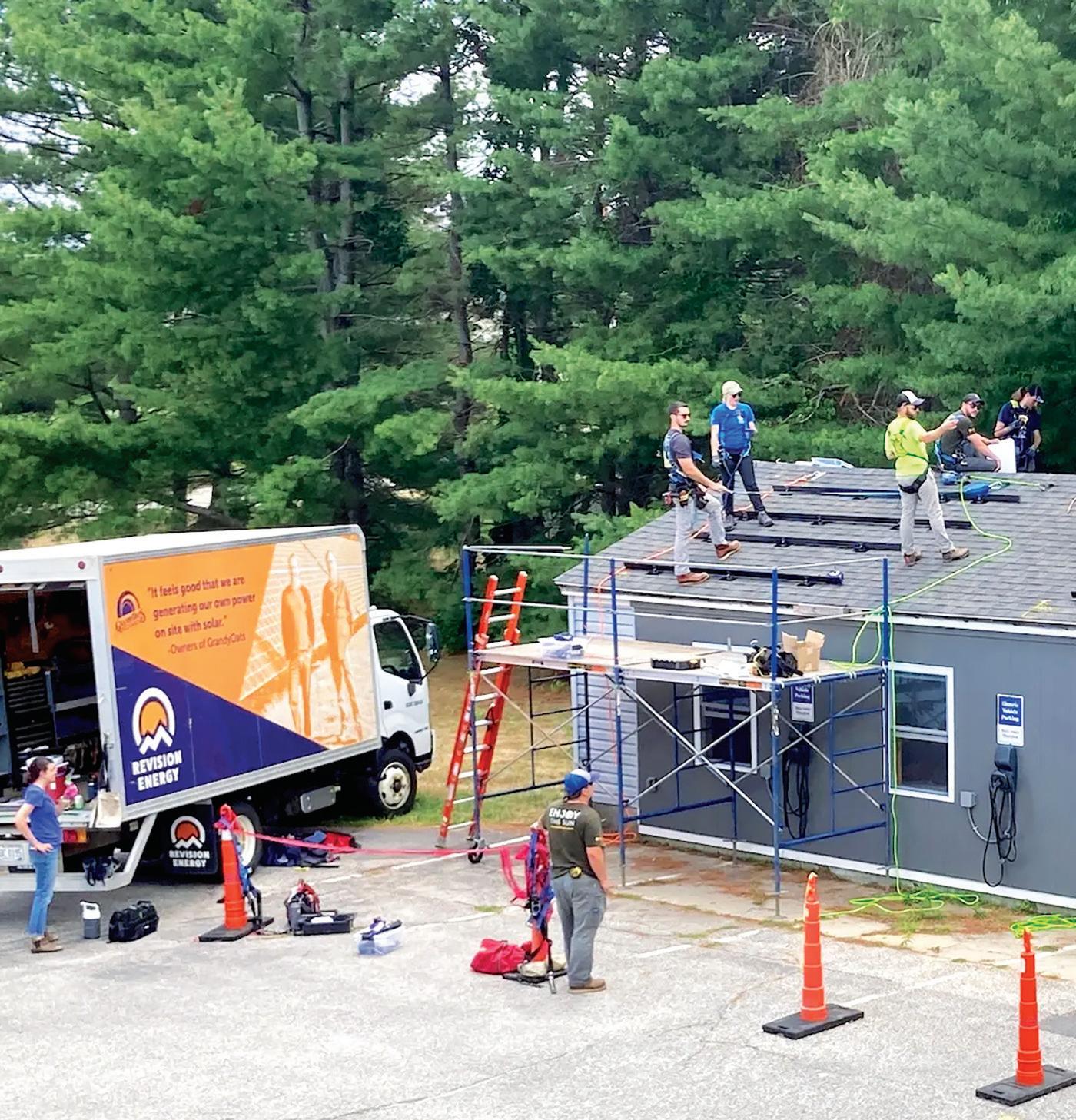
stormwater on solar sites
surrounding land
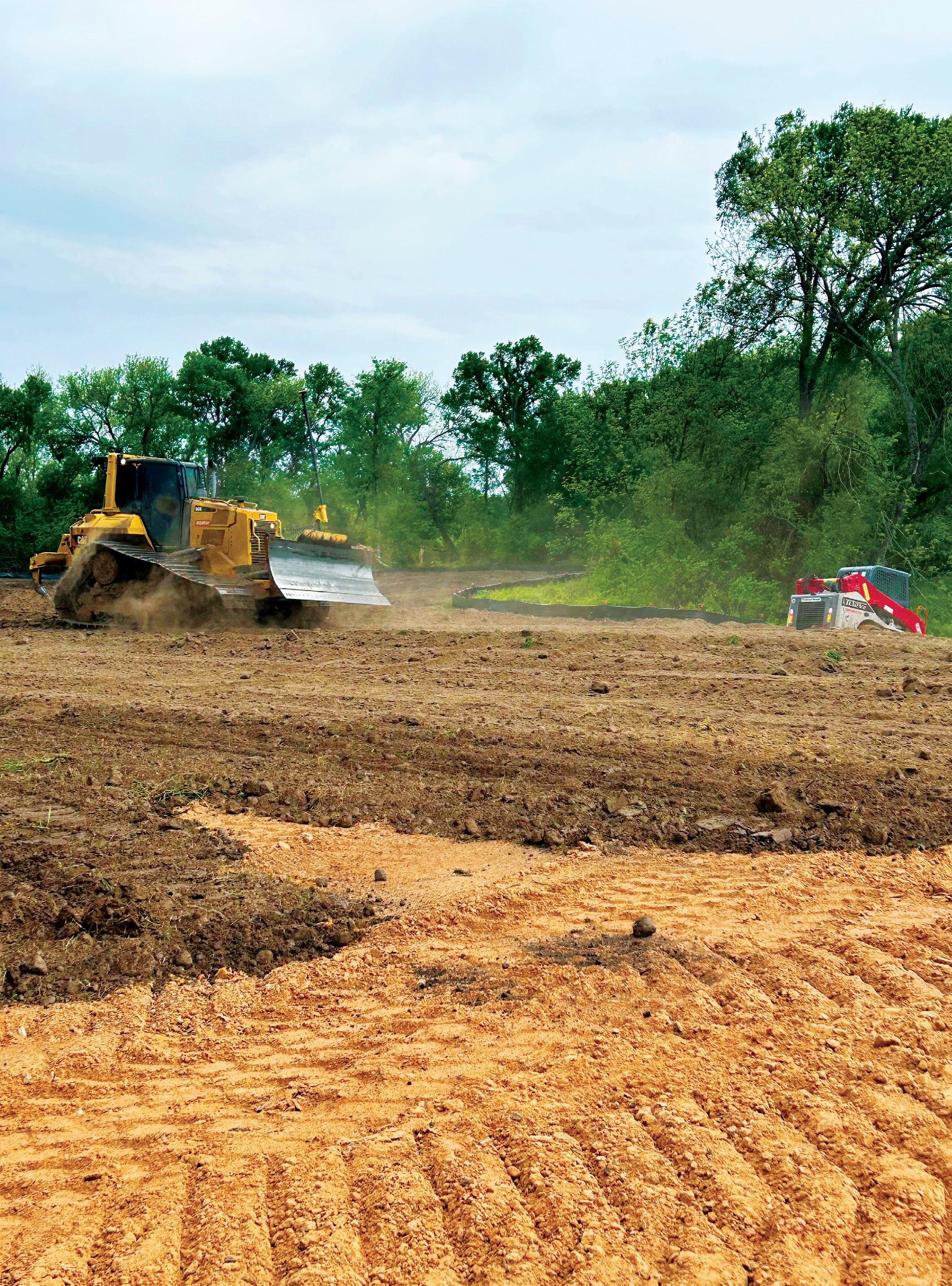
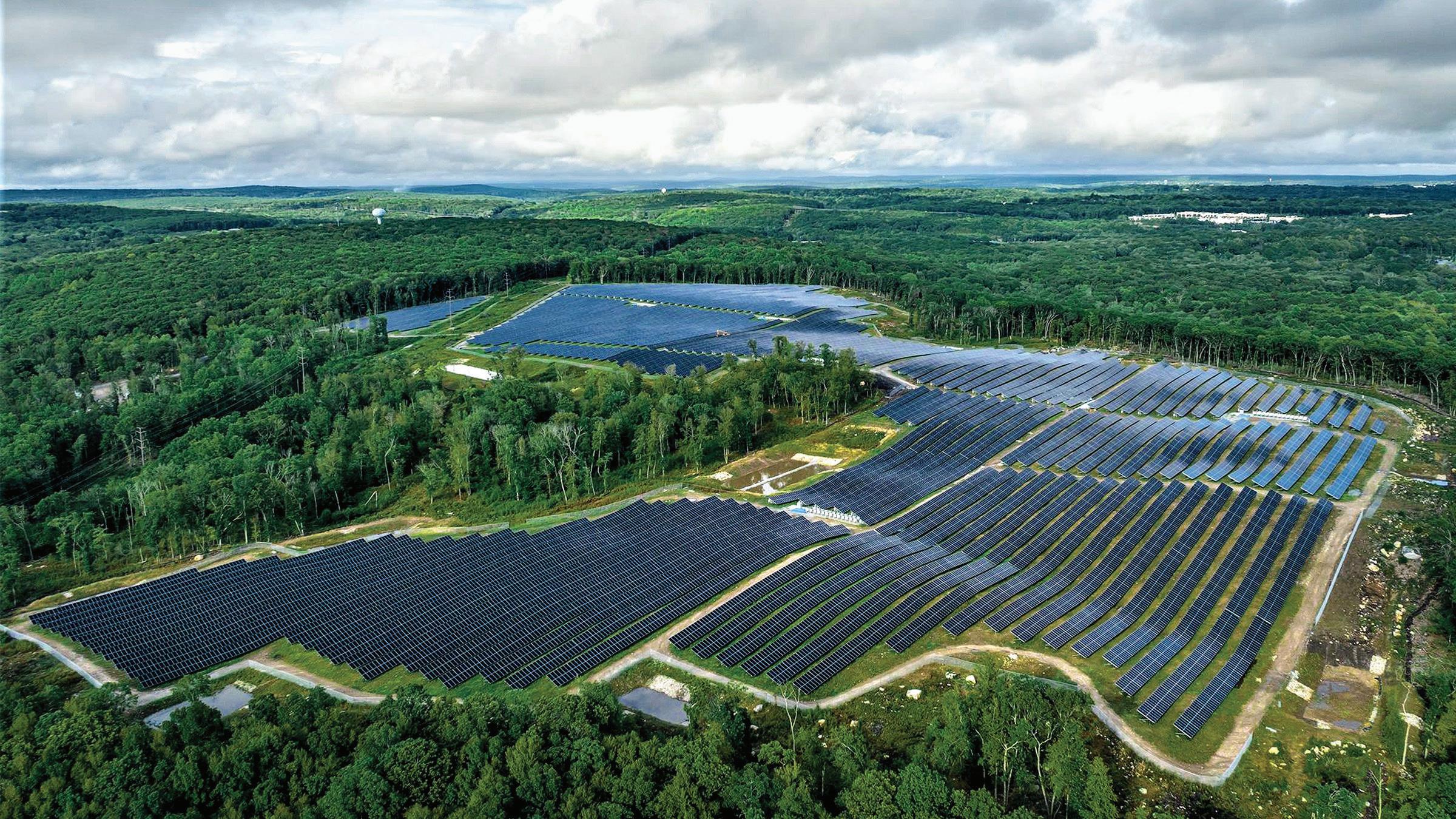
SPECIAL SECTION: U.S. SOLAR MANUFACTURING
The IRA spurred dozens of solar manufacturing announcements from inverters to panels. Now, SPW is looking into the progress of these hopeful companies, with a spotlight on a manufacturing hotspot in an unsuspecting state. | PAGE 37
OPERATIONS STORMWATER STRATEGY Managing
keeps
healthy STORAGE Using data to optimize large-scale energy storage O&M 32 TECHNOLOGY PANELS Shipping and handling improvements can ensure more modules make it intact 22 INVERTERS String inverters can repower and breathe new life into aging solar projects 26 INSTALLATION PREVENTATIVE O&M Advanced maintenance planning on big projects limits downtime and stress 13 POLICY APPRENTICESHIPS In-house programs help contractors build the skilled workforce 17 08 FIRST WORD CONTRACTOR’S CORNER AD INDEX 04 46 48 CONTENTS ON THE COVER 8 13 17 22 MOUNTING Tracker technology stands ready to react to extreme weather conditions 28
6 SOLAR POWER WORLD MAY 2024 www. solarpowerworldonline .com

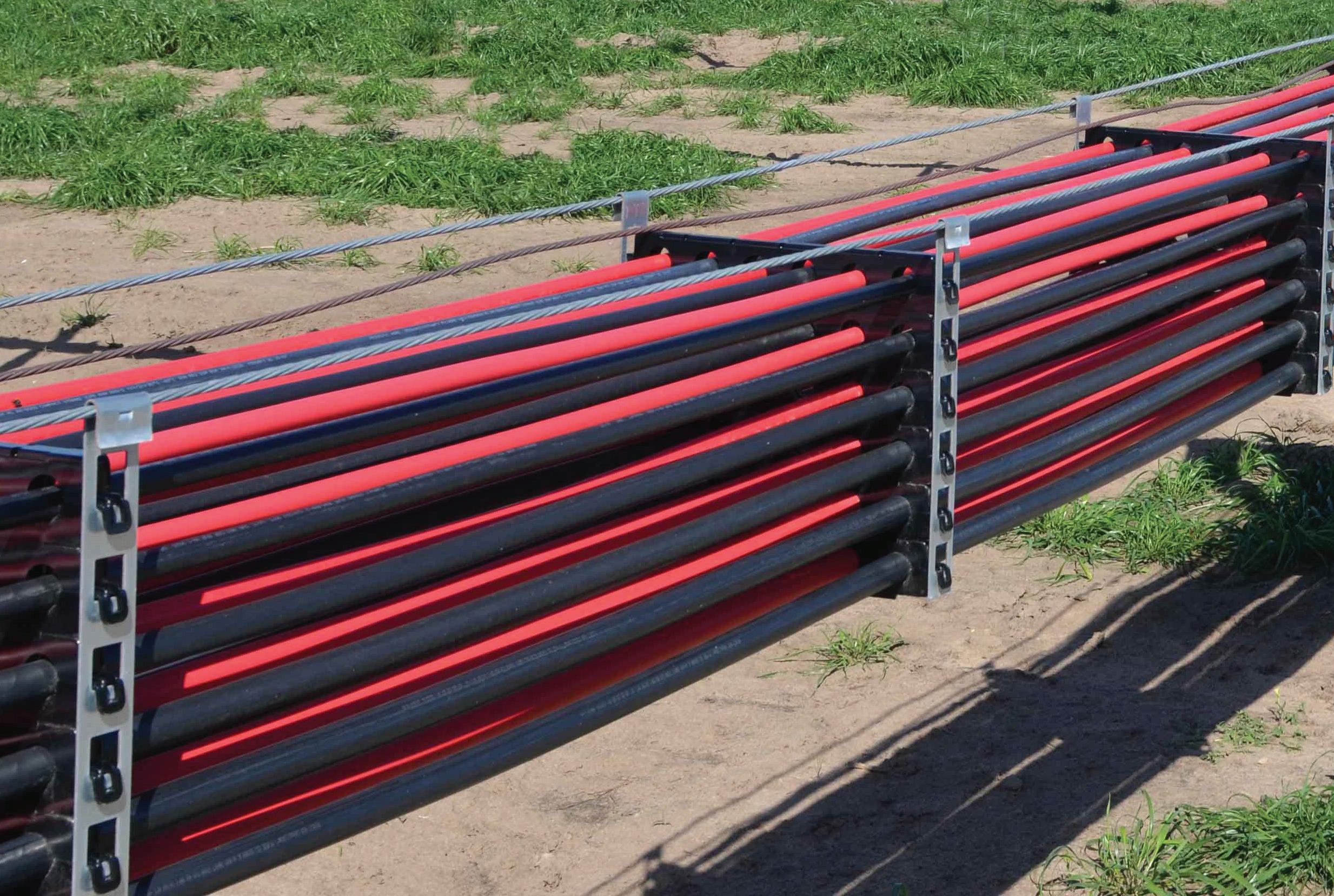
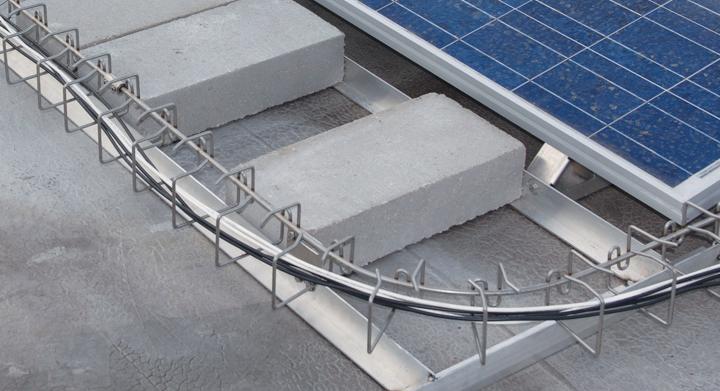
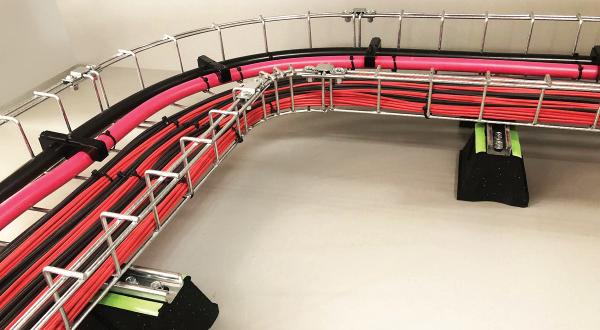
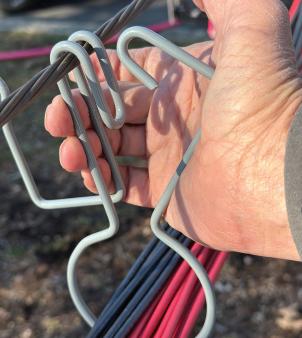
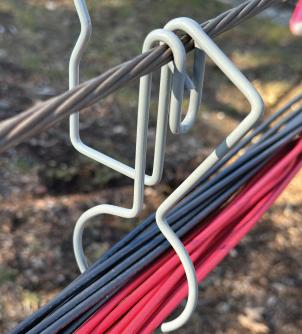
407 Hand Bendable Solar Snake Tray® Roof Top, Ground Mount and Car Park Installations 801 Solar Mega Snake® Ground Mount, Brown Field and Roof Top Installations Snake-Loc String and Feeder Cable Hanger Messenger Wire Installations Cable Management for Solar Solar Snake Max XL™ - Utility Ground Mount, Battery Storage and EV Installations YEARS www.snaketray.com |Made in the USA Snake Tray® products are covered by one or more of the following patents:#5839702, #5953870, #6019323, #6347493, #6361000, #6449912, #6460812, #6463704, #6637165, #6637704, #6926236, #7168212, #7959019, #8622679, #8783628, #8985530, #8985530 B2, #9074707, #10225947, #10225947 B2, #10666029, #10666029 B2, #10944355 B2, #11271519 B2, #20180313469 A1, #20180317336 A1, #20190229507, #2020030461, #20200403390, #20210126445 A1, #20210194419 A1, #20210336430 A1, #20220112969, #20220221174. Foreign Patents: Australia #737813, #748160, #749488, #776643, #776644. Canada #2251732, #2319624, #2303081, #2396792. Japan #3723224. Mexico #204995, #229386, #220889. Europe #1012938, #1012937. Other Patents Pending. CALL 800-308-6788 TO DISCUSS YOUR NEXT PROJECT LET THE PHYSICS OF SOLAR SNAKE MAX XL™ HELP YOU HARNESS MORE ENERGY AND MONEY FROM THE SUN! Maintains NEC 310.15 code compliant cable separation which can yield up to 30-watt hours per meter more energy than bundled or trenched cables. No trenching or derating of cables. Accommodates cables ranging from 350 - 1250 Kcmil.
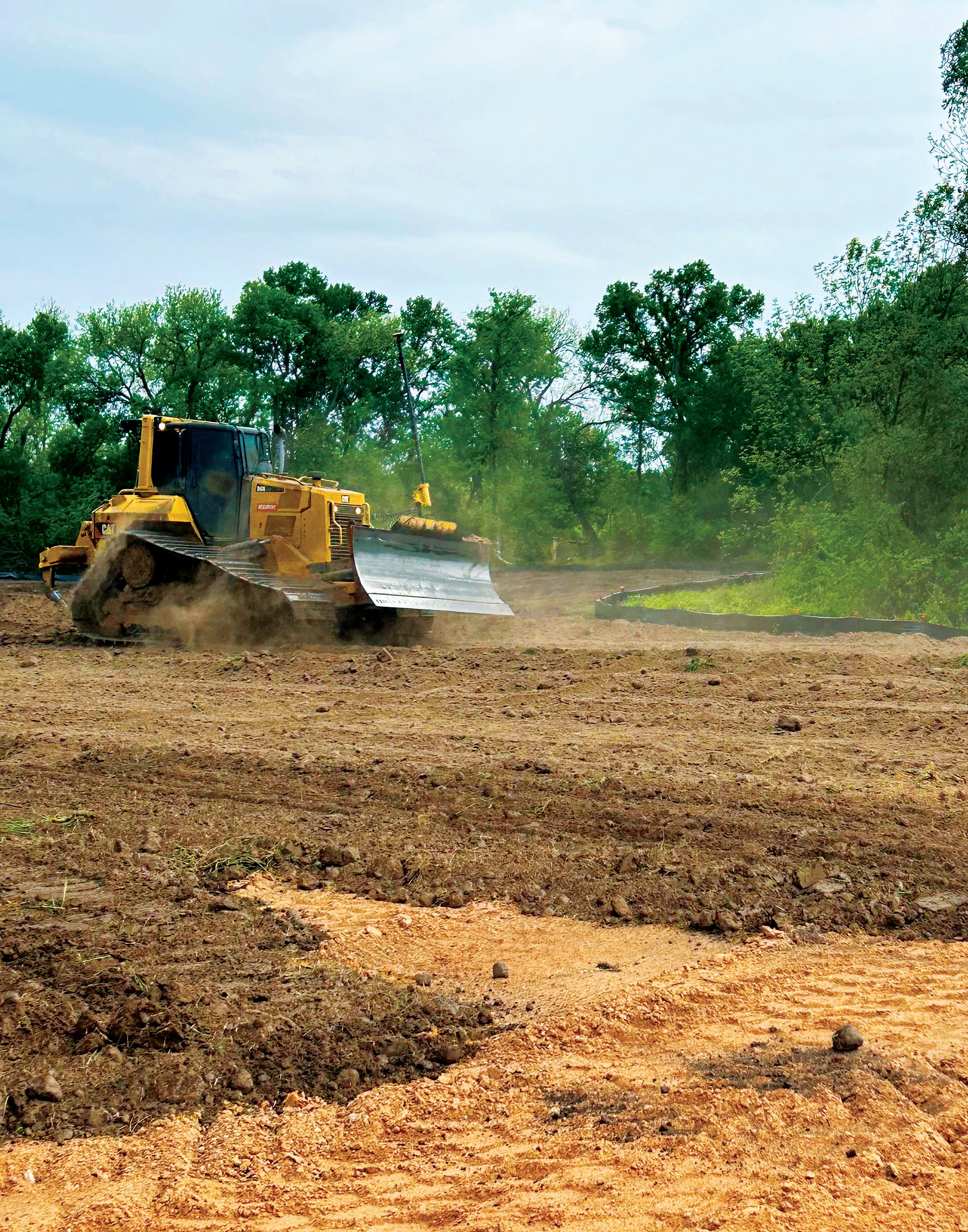
ENSURING PROJECT
STORMWATER PLANS
MAKE THE GRADE
8 SOLAR POWER WORLD MAY 2024 www. solarpowerworldonline .com OPERATIONS

Installing solar
at a large scale requires increasingly bigger plots of land to host acres and even miles of PV arrays on a single tract. Accompanying that growing scale of project scope is the responsibility to implement proper stormwater runoff measures to protect the environments and communities the projects are built in.
In any construction project requiring civil work, excavated land that isn’t seeded or is missing topsoil has higher risk for erosion. Stormwater runoff, like rainfall or melted snow, can take substances like pollutants and debris that are detrimental to local waterways and carry them into neighboring land and municipal sewer systems.
The National Pollutant Discharge Elimination System (NPDES) is a federally mandated permit program with measures for stormwater runoff remediation at construction sites. This permit is issued either directly by the Environmental Protection Agency or through an authorized state, which most are qualified as. From there, states can have their own requirements for stormwater runoff remediation at worksites.
Any construction project with land disturbance exceeding one acre is generally required to have an NPDES permit. It describes design parameters for building proper stormwater runoff management at a construction site and how to close the permit once a project is complete.
“The biggest challenge is managing stormwater to prevent any impacts off-site that could impact sensitive habitat,” said Christina Hebb, stormwater pollution prevention plan and vegetation senior manager at McCarthy Building Companies. “The permit language states that we have to do everything in our power during planning designs to really minimize the release of sediment off-site.”
There are many preventative measures that can be taken to curb stormwater runoff on solar projects. Hebb oversees solar project site preparations for McCarthy, a national construction company with a utility-scale solar installation arm. She said the most important part of preparing solar sites is establishing vegetation on the land before construction begins.
“Until you really get vegetation established, you’re not going to have a fully stabilized site,” Hebb said. “Any type of seeding we can do ahead of pile installation is going to significantly reduce your costs, it reduces your risk and it will increase production during construction because you’re not going to work on muddy soil conditions.”
Rooted plants stabilize topsoil — the first several of inches of dirt starting from the ground surface. As precipitation and runoff percolate and pass over that soil, the roots of plants prevent it from washing away. It’s nutrient-rich and the ideal place to sow native seed crop.
While ground-mount racking and solar tracker systems have become more adaptable to undulating topographies, there’s still the possibility that some grading at a solar project site will be necessary to install the array. If the land must be graded, Hebb implores contractors to save the topsoil they remove, because it can be replaced later.
9 SOLAR POWER WORLD MAY 2024 www. solarpowerworldonline .com BILLY LUDT | SENIOR EDITOR
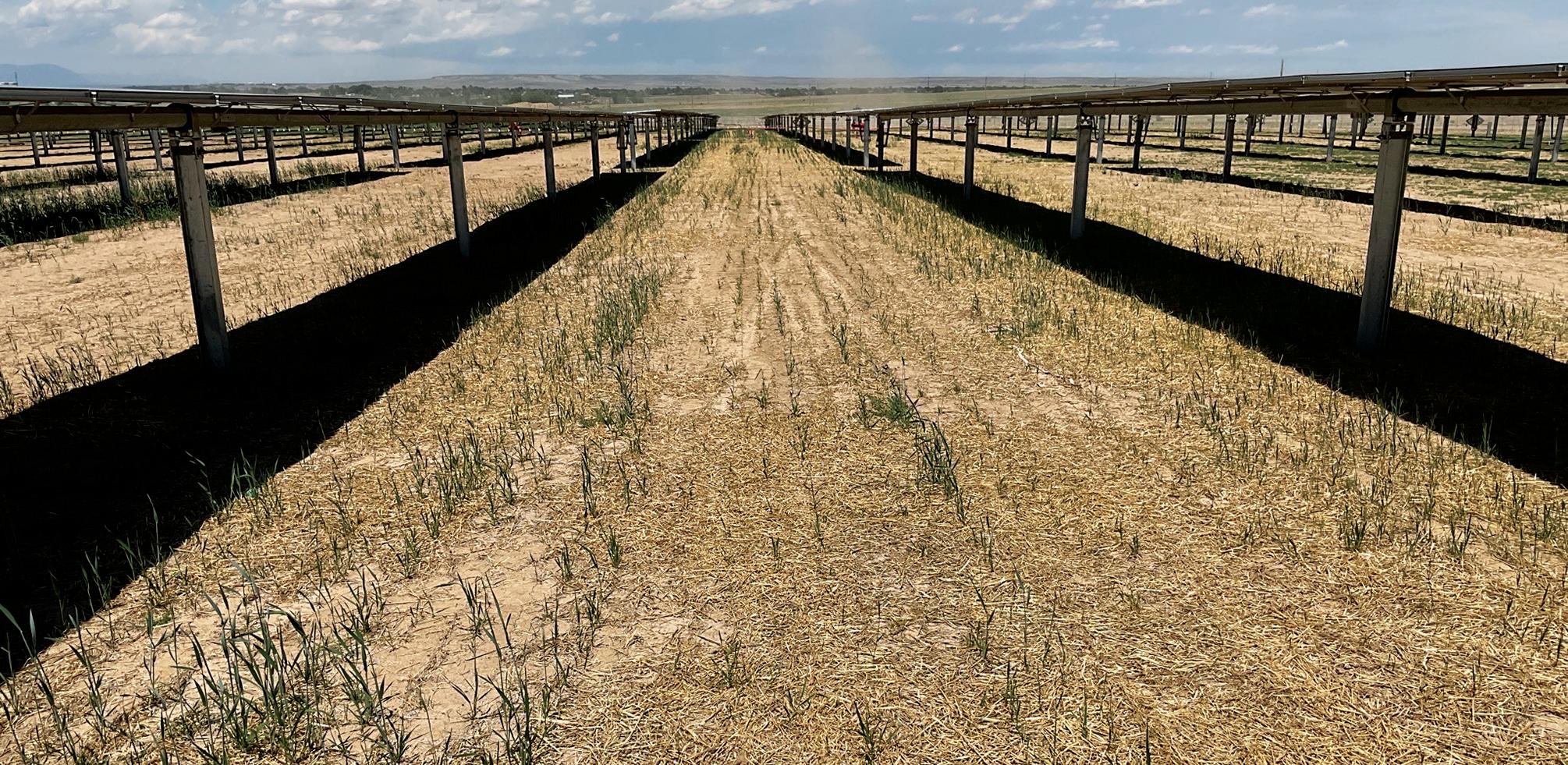
Failing to establish initial seeded topsoil can require additional ground amendments, soil compaction and possibly reseeding multiple times after construction to grow vegetation. Once a site has the proper vegetation in place, other methods can ensure stormwater runoff is properly managed:
• Sediment basins are dug out on construction sites to gather and pool water so the sediments within it can remain onsite and settle into the ground.
• Check dams are temporary structures made of stone placed along construction site water channels to stop sediment passing through. They’re used in combination with other runoff retention devices.
• Swales are dug channels with grasscover that act like topsoil and guide water flow. Water passing through a swale is exposed to grass, which catches sediment and encourages the water to infiltrate the soil along its route.
• Silt fences are installed on worksites during construction and until vegetation is grown. They are made of fabric that acts as a barrier to keep soil and sediment on a worksite.
“The idea is that we’re flowing water down in the arrays and then catching any sediment that might be moving, but really the perimeter and the basins are there to be that line of defense so that when water is leaving the site, it’s clear,” Hebb said.
Any tamped or graded land must be decompacted and loosened to promote future plant growth in that soil. Contractors should follow the natural drainage patterns of the land they’re working on and maintain those water routes throughout and after construction. It might seem like a lot of work up front, but in totality it pays off.
“We’re really only working on a project from start to finish for two years, including the planning and preconstruction design phase through operation,” Hebb said. “Solar projects are designed to last 30 years or so. In the scale of the project, the thing that
we’re doing in that window, you have such a significant impact on the success of the project.”
Solar stormwater conflict
Stormwater runoff controls on construction projects are required everywhere in the United States. But that doesn’t mean every state will issue the same regulations for each type of structure being built. That’s the case with stormwater controls on solar projects built in Virginia.
In Spring 2022, the Virginia Department of Environmental Quality (DEQ) issued an update to the Virginia Stormwater Management Program, amending that solar arrays are considered impervious surfaces. An impervious surface is one that doesn’t let water soak into the ground. DEQ considers sidewalks, streets, industrial buildings, lawns and now solar panels as impervious surfaces.
“There are no additional required stormwater controls specific to solar development over other land-disturbing activities,” said Mike Rolband, director of Virginia DEQ, in an email. “However, DEQ
OPERATIONS
10 SOLAR POWER WORLD MAY 2024 www. solarpowerworldonline .com
McCarthy Building Companies
does have guidance which requires that any solar project that does not obtain an interconnection approval by a regional transmission organization or electric utility by December 31, 2024, to consider all ground-mounted solar panels as unconnected impervious cover.”
DEQ purports that impervious cover is typically attached to stormwater controls. Solar projects are being considered “unconnected impervious cover” because precipitation falling from the modules must travel across the ground before reaching a stormwater channel. This change to postconstruction stormwater management could require developers to use more land for stormwater controls on their solar arrays.
Opponents to this change for stormwater controls on solar projects believe it’s unfair and a detriment to the industry in the state. Yet, Virginia has a history of issues with stormwater runoff, and the state has upped efforts to meet minimum erosion controls on construction projects.
“Without proper stormwater management and erosion control devices in place, erosion and sedimentation of natural receiving channels and waterways may occur,” Rolband said. “In addition, increased runoff due to the change in land cover conditions may result in increased flooding of downstream properties and resources.”
Not every state will regulate stormwater controls on solar projects like Virginia. Each region has individual environmental and regulatory characteristics that solar installers must abide by to keep the land they’re building on as green as the PV modules they’re installing. Starting with a baseline of proper topsoil and vegetation management and adding the appropriate stormwater channels can help developers keep the surrounding waterways clean during construction and the project’s entire lifespan. SPW
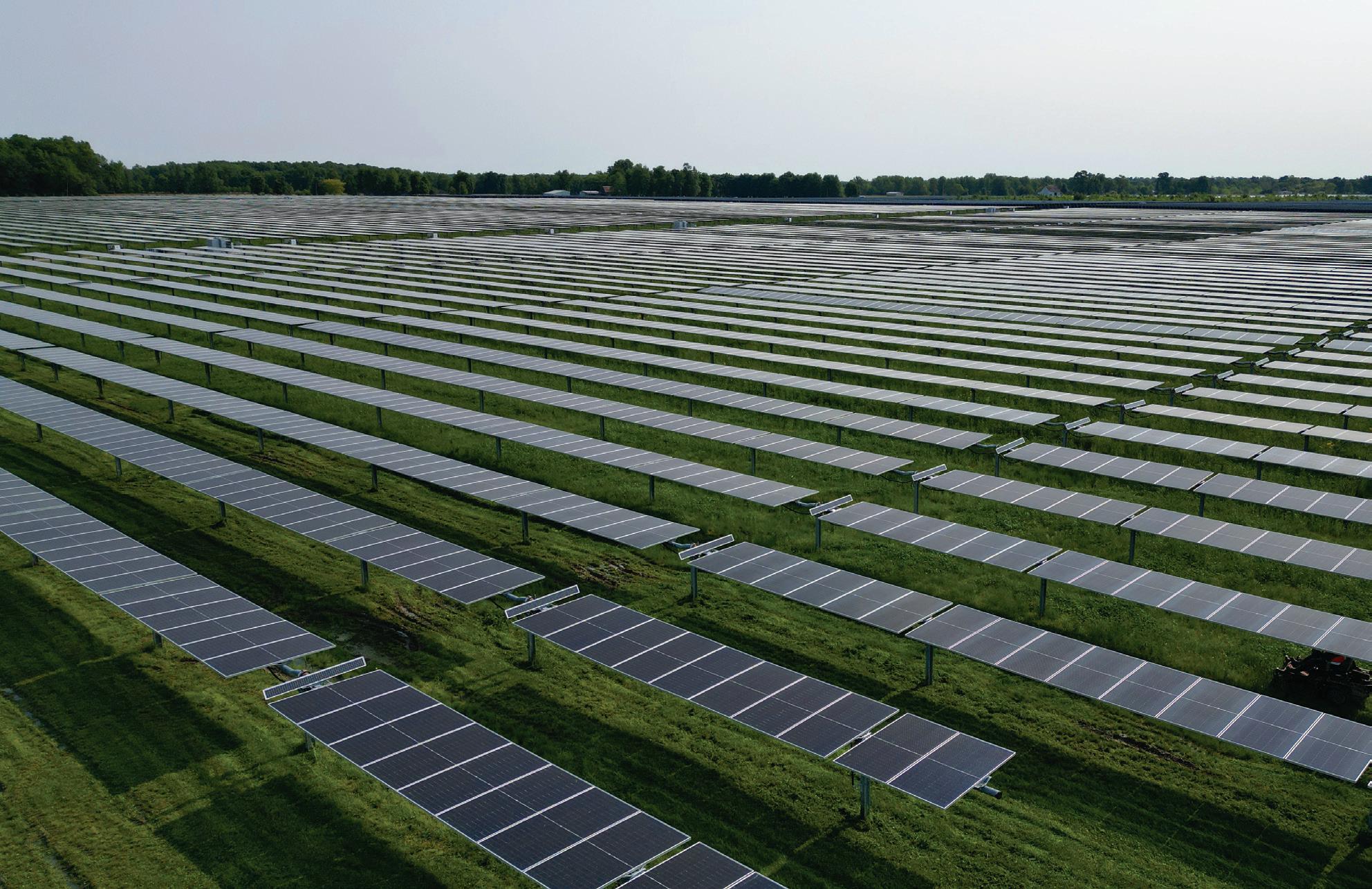

OPERATIONS
11 SOLAR POWER WORLD MAY 2024
McCarthy Building Companies

Visit Us at Booth #1916
May 6-9, 2024 | Minneapolis, MN | Minneapolis Convention Center
We’re delighted to be a part of Cleanpower! As a pioneering force in the renewable energy sector, we are excited to connect with fellow industry leaders like you and showcase how our innovative solutions are driving the transition to a sustainable future.
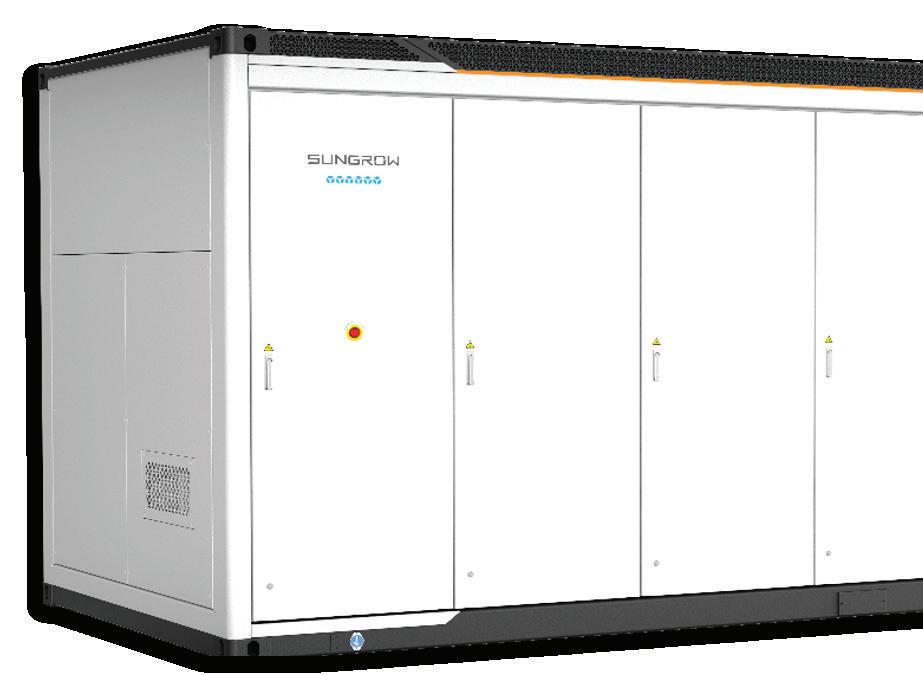

SEE YOU AT
us.sungrowamericas.com PowerTitan
CLEANPOWER!
2.0 Liquid Cooled Energy Storage System
HOW PREVENTATIVE MAINTENANCE KEEPS A CONNECTICUT SOLAR
PROJECT RUNNING SMOOTHLY
For solar projects to successfully operate beyond their warrantied lifespans, they must be built correctly and need to be faithfully maintained. Solar contractors that handle both construction and operations and maintenance (O&M) stay with a solar project for the long term to ensure the array is meeting all its milestones.
Greenskies Clean Focus, a Connecticut-based commercial and utility-scale developer, recently completed a solar project seven years in the making. The company’s in-house O&M arm is maintaining an 18.86-MW array in Waterford, Connecticut, that has some unique upkeep requirements.
“If you don’t have an active preventative maintenance program going around and looking at everything, you are going to have equipment failures, and they are going to be much more serious than if you had caught them in the act,” said Steve Martineau, Greenskies’ director of O&M.
The project, built on approximately 94 acres of hilly land, was interconnected in April 2023. Greenskies is checking the array monthly to keep it operating at its peak.
“It allows us to be proactive instead of reactive,” said
Chip Florio, director of project delivery at Greenskies. “If we’re reactive to these problems, it means that we’re scrambling to send people out, and everything becomes a fire drill. Being proactive vs. reactive allows us to better manage it.”
Preventing downtime at the Waterford solar project
A solar project of this scale is on the larger side for Connecticut and the greater New England region. The array is divided into five subsystems with different topographical and shading considerations. The first starts at the highest elevation on the site and the remaining four subsystems follow the topography downhill and then up a proceeding hill. The site was previously heavily logged and some trees unfit for logging had to be removed by Greenskies.
Sections of the land are laden with rock, so Greenskies opted to use a ground screw foundation from APA Solar Racking to work in the less-than-ideal soil conditions. The array also used APA racking and a mix of HT-SAAE and Canadian Solar panels with Yaskawa Solectria string inverters.
The Greenskies O&M teams focus on project monitoring

13 SOLAR POWER WORLD MAY 2024 www. solarpowerworldonline .com BILLY LUDT | SENIOR EDITOR
INSTALLATION
Greenskies Clean Focus
and protective and corrective maintenance of solar arrays. Martineau said each crew informs the next department along the maintenance line to keep arrays online and operating in peak condition. On the Waterford project, and every other array under Greenskies’ purview, O&M crews monitor inverter performance and open each unit for inspection at least once a year.
“Everything flows from financial institutions. So, there’s certain expectations that your financing partners have of us in an O&M facility,” he said. “It’s a collection of preventative maintenance and corrective maintenance.”
Heat detection is crucial on electronic components like inverters and switchgears because it can indicate future electrical issues on an array. O&M crews also monitor high-value components like transformers, because one malfunction will cause substantial production losses and take a lot of time to replace.
“In general, your biggest pain points come from those items that have the longest lead times when they
fail, so you pay the closest attention to them,” Martineau said.
Prior to interconnection, water breached one of the array’s combiner boxes. Luckily, installers managed to swap the component in time for interconnection.
Greenskies had 15 stormwater basins dug out near the project to prevent erosion and water runoff. There are two rivers running near the project, increasing the risk of stormwater runoff entering local waterways.
To ensure the basins are working properly, they were inspected once a week during construction, and they’re now inspected once a month. This monthly inspection routine will last for two growing seasons following the project’s completion in 2023.
“Between the weekly, monthly, and post-construction inspections, stormwater and erosion control measures are frequently overseen by multiple parties to ensure all necessary compliance,” said Florio. “It’s definitely a topic of importance.”
In addition to stormwater concerns, there are two basins on site that are fenced in to prevent local
amphibians from laying eggs within. These basins dry out in the early summer, so biologists will visit the project every March to relocate any amphibious eggs to safer ponds. A safety plan was also in place to work around an endangered snake species native to the area.
“Those are outside our normal electrical O&M on the systems, but they’re equally important,” Martineau said.
As an end-to-end solar developer and EPC contractor, Greenskies owns the projects it builds for the long term. Dedicating a segment of the company to O&M of arrays like the one in Waterford ensures inevitable hardware failures are addressed before they happen or before they’re a larger detriment to the system.
“O&M with Greenskies is a frontof-the-mind thought and not an afterthought,” Martineau said. “O&M gets a lot of input into our installation practices, which is a great place to be when you’re a company like us, because we’re not big, but we get a lot done.” SPW
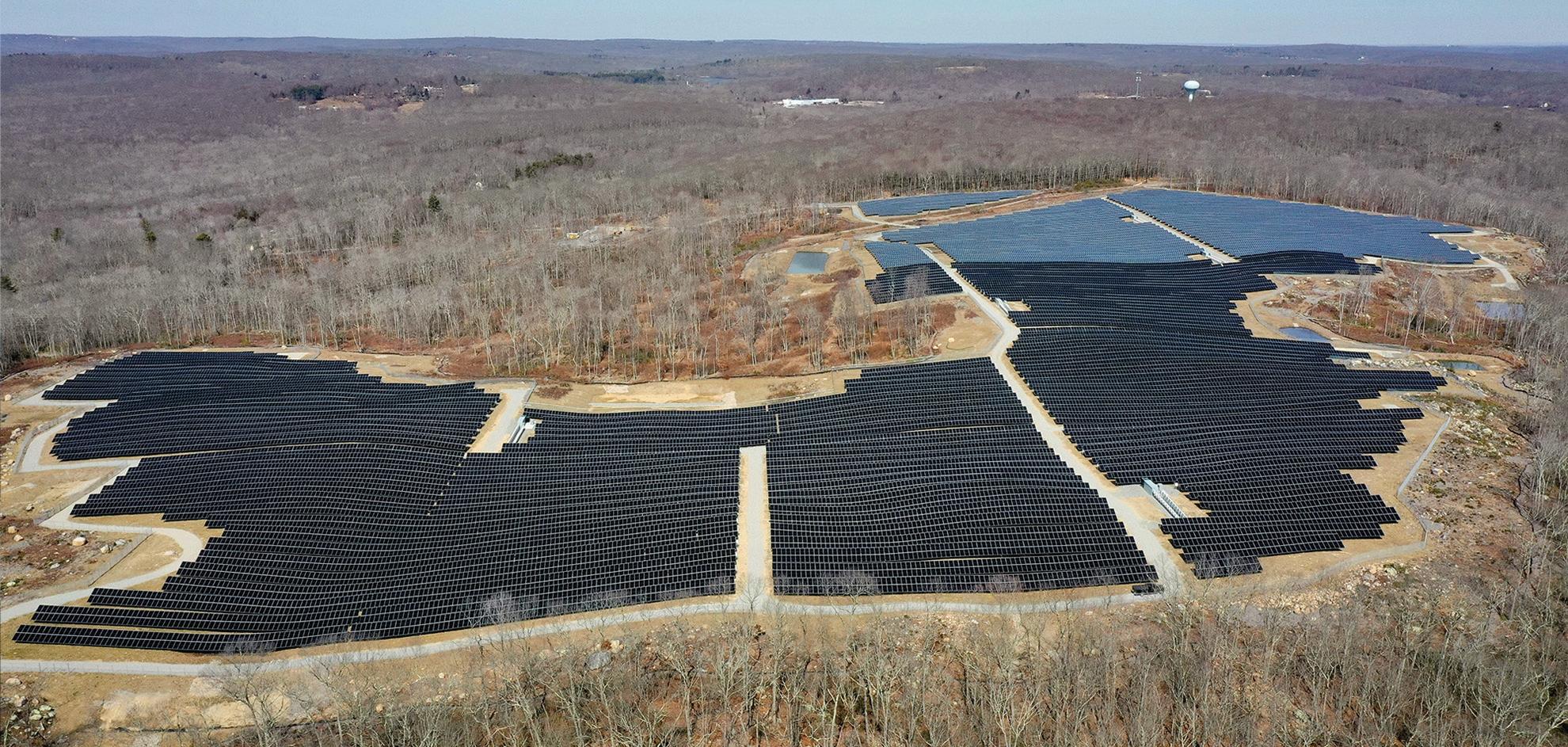
INSTALLATION 14 SOLAR POWER WORLD MAY 2024 www. solarpowerworldonline .com
Greenskies Clean Focus





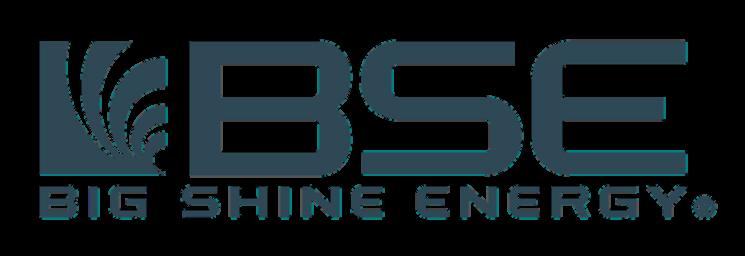

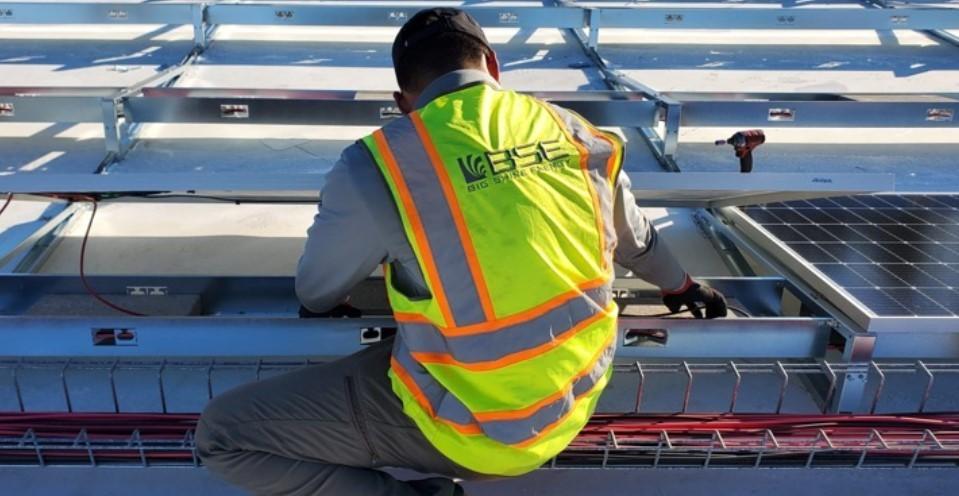

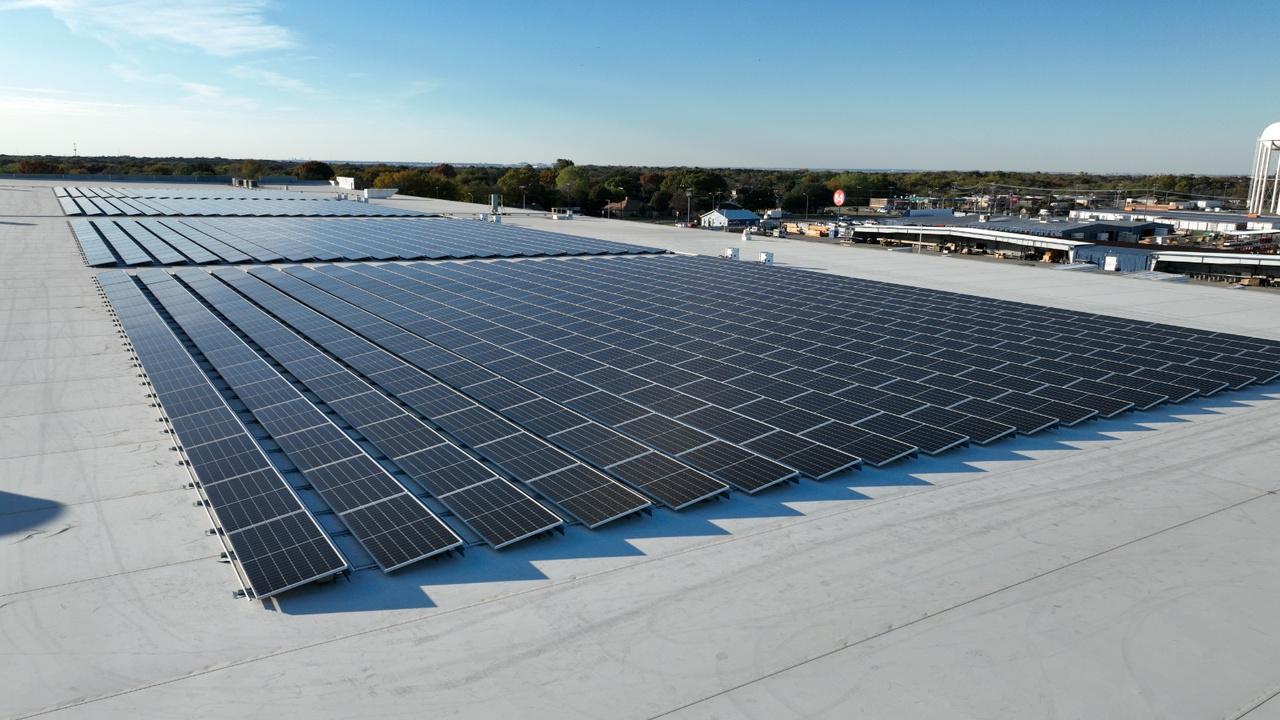
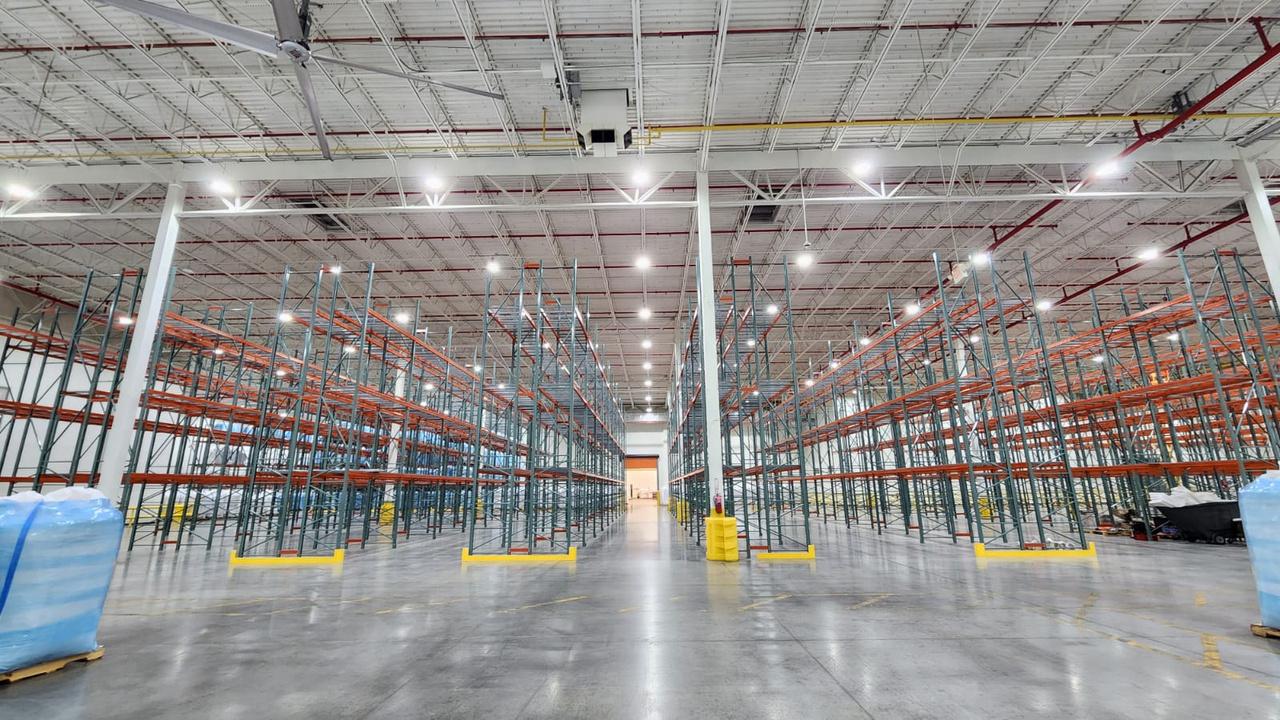
NEW TECHNOLOGIES
Discover
KEYNOTE SPEAKERS
BREAKOUT SESSIONS
Enjoy
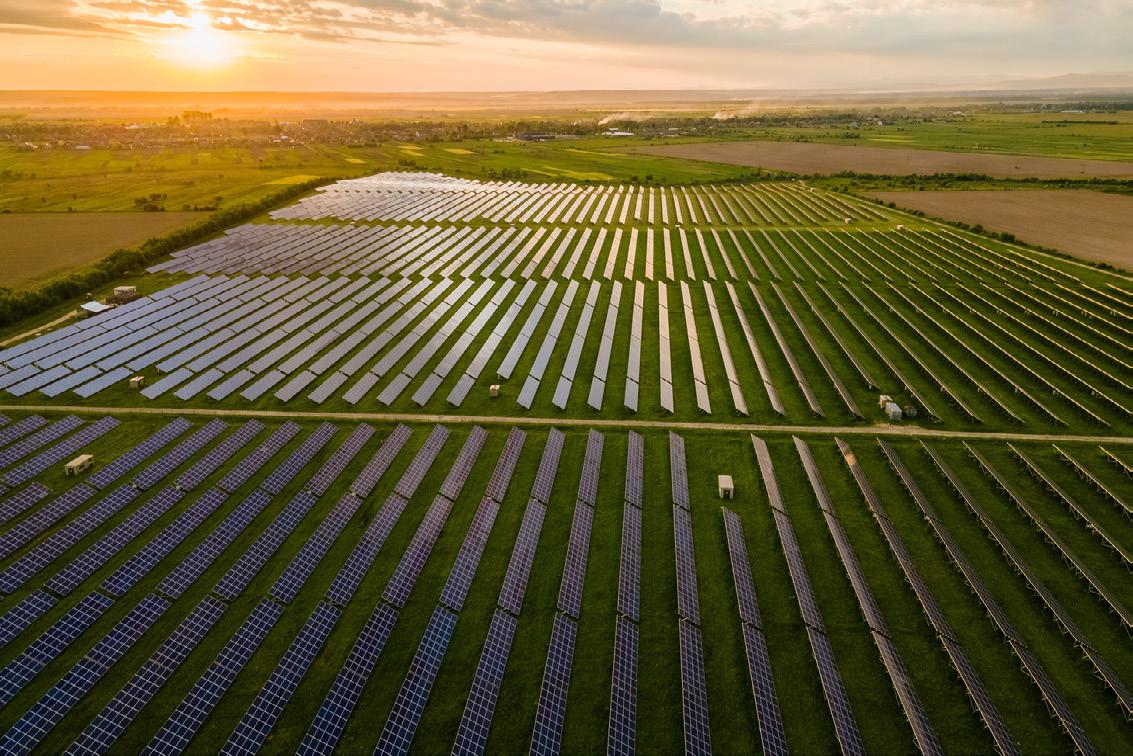

ENERGY SYMPOSIUM FOR C&I BUSINESSES SAAZ 2024 Join us at Big Shine Energy’s Sustainability Awards, celebrating corporations striving for carbon neutrality with a day of education, innovation, and discussions.
cutting-edge energy efficiency technology.
speakers leading the industry, delivering unparalleled expertise.
Keynote
informative break sessions while earning valuable CEUs. NEW JERSEY 12 JUN 2024 info@bigshineenergy.com 845-444-5255 saaz-2024.eventbrite.com
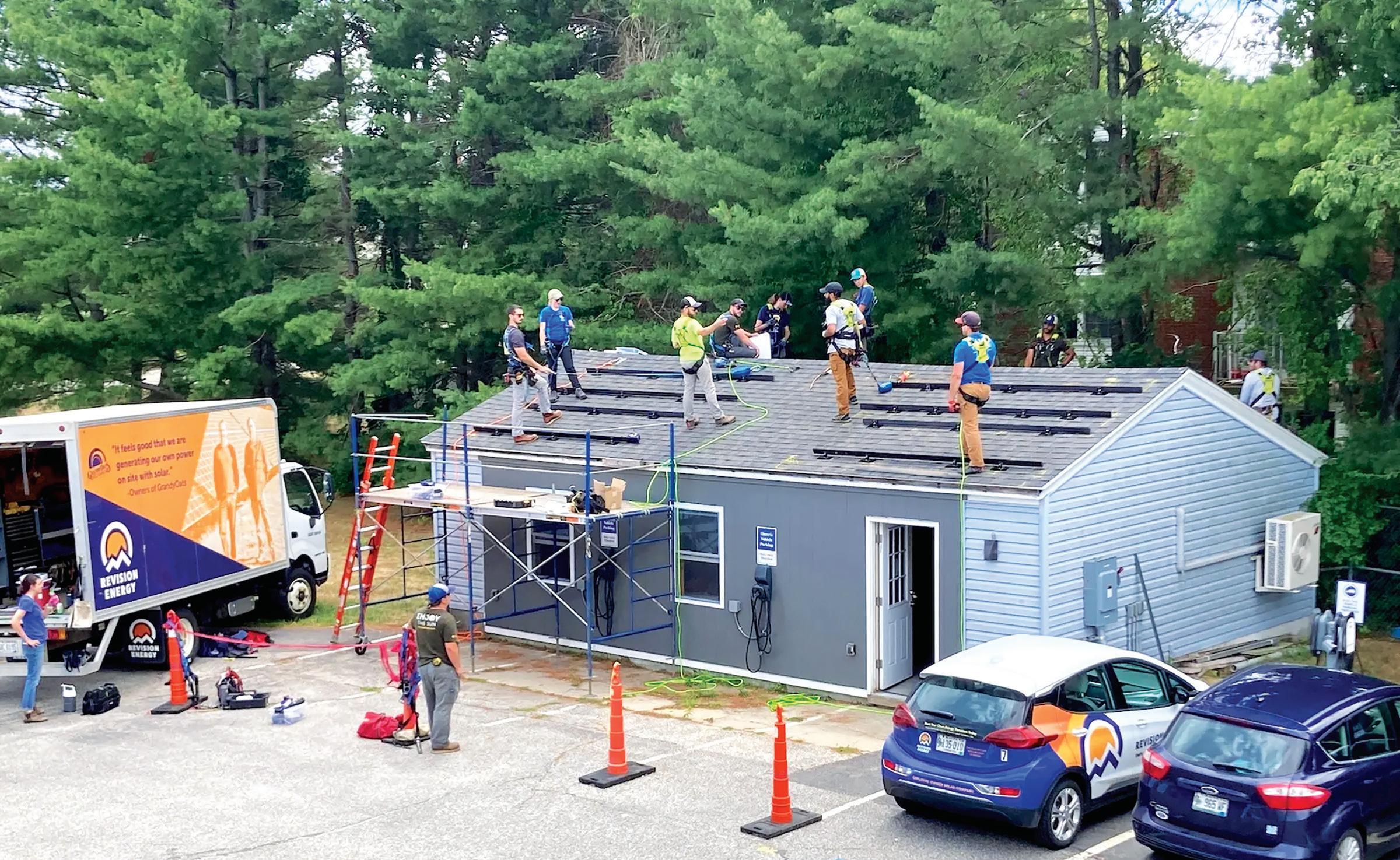
In-house apprenticeship programs help contractors capitalize on IRA tax credits
After the 2022 passage of the Inflation Reduction Act (IRA), demand for solar apprentices rose significantly. In order for 1-MW and larger solar projects to qualify for the enhanced value of the IRA’s tax credits, they must meet certain prevailing wage and apprentice (PW&A) requirements. Projects that comply with PW&A are eligible for a five-times enhanced credit.
While the U.S. Dept. of the Treasury has released guidance on PW&A, it can be a complex process to qualify. Apprenticeships in the solar industry are paid on-the-job training opportunities with the aim of qualifying participants to become electricians, operating engineers
and more. There are apprenticeship programs across the country offered by associations and educational institutions intended to cultivate a skilled clean energy workforce.
However, these programs may not be enough. Projects must have an adequate number of journeyman workers to fulfill the apprenticeship ratios, but there is an absence of registered apprenticeship opportunities geared to solar.
“We can no longer rely solely on existing electrician training programs at community colleges or trade unions. It’s clear we need a larger, more concerted effort to offer opportunities to obtain electric licenses,” said Brie O’Malley, director
of ReVision Energy’s Training Center.
A number of solar companies like ReVision are spearheading this effort.
Contractor programs that foster apprenticeship development
The ReVision Energy Electrical Apprenticeship Program (REEAP) is a four-year program that provides a combination of paid work experience and online classroom instruction, prepares apprentices for state licensure exams, and qualifies employee-owners for two apprenticeship positions at ReVision.
“It is a program that we envision being shared with other organizations to combat this problem at a more widespread scale,” O’Malley said.
17 SOLAR POWER WORLD MAY 2024 www. solarpowerworldonline .com
SARA CARBONE | FREELANCE CONTRIBUTOR
ReVision Energy apprentices go through training on a practice roof.
REEAP attracts a lot of talent from other countries as it offers paid opportunities for immigrants to earn their licenses and practice in the U.S. O’Malley pointed to one apprentice from Ukraine, Russell Liubychenko, who “is setting a record for how fast he’s going through this. As soon as his hours are completed, his talent as an electrician will be a great addition to any organization.”
Similar to ReVision, Blue Ridge Power takes a broad view regarding the potential impact of its PowerUp apprenticeship program.
“Our primary objectives extend beyond mere IRA compliance; we aim to foster responsible growth within our workforce as well as give young people the opportunity to participate in this fast-growing industry,” said Lee Spruill, workforce development program manager at Blue Ridge Power.
Blue Ridge also has a preapprenticeship offering for high schoolers that serves as a pathway to its apprenticeship program.
Ideal Energy’s apprenticeship program supports entry-level and experienced electrical apprentices
Ideal Energy apprentices work on a rooftop solar project.
through its paid certification process to become electrical journeymen and master electricians. It also focuses on employee retention. COO Amy Van Beek said some of the company’s longest-standing employees came from the program, pointing to Ideal’s master of record, Brian Robbins — its very first enrolled apprentice.
Best practices for creating an apprenticeship program
There are a few ways to ensure a company-run apprenticeship program is a success. Recruiting an adequate number of skilled masters and journeymen helps to provide the administrative oversight to keep quality high. Participants are more motivated when the program is structured so they have a financial investment. Clear criteria for program eligibility is vital as well.
“Typically, workers need to demonstrate qualities such as reliability and work ethic, mechanical aptitude, problem-solving skills, observance of safety protocols and the ability to perform well on a team,” said Ideal’s Van Beek.
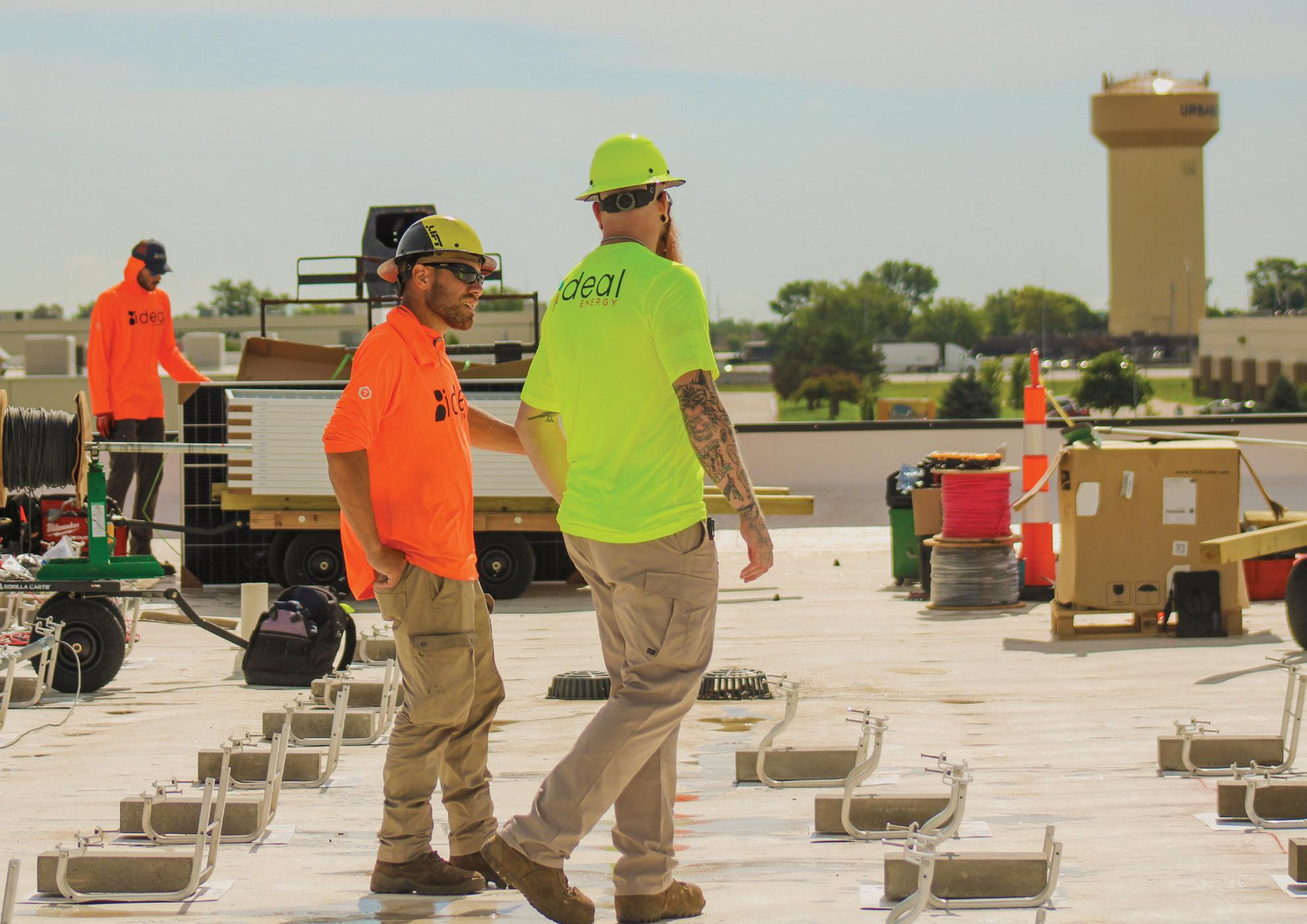
Spruill at Blue Ridge said consulting experts within the company when developing a program can ensure apprenticeship criteria is aligned with the skills required for success. He also recommended engaging with local education agencies to broaden recruitment efforts and ensure comprehensive training.
Attracting talent is a challenge too. O’Malley at ReVision suggested emphasizing that the program is a paid opportunity with benefits that gives participants consistent support from peers and instructors.
“Whether a participant is a career-starter or making a career shift, knowing that they will have a group to lean on makes the experience feel more accessible,” she said.
Upon completing the program, apprentices are co-owners at ReVision and can grow within the company, something that helps prospects recognize that the program will have broader implications on their careers.
Ensuring these apprenticeship programs can prepare workers for jobs even beyond solar power is another important feature for success.
“These programs have to prepare apprentices with the entire body of knowledge a certified electrician should have,” O’Malley said. “They need to have opportunities to practice all types of electrical work, not just the electrical work required at the company hosting the program.”
Additional barriers to leveraging the IRA’s tax benefits
Though these contractor-created programs help fill the need for apprenticeships required to qualify for IRA benefits, there still remain other difficulties when it comes to meeting PW&A mandates.
Reporting requirements are quite rigorous, resulting in additional paperwork, record-keeping and contract complexity. Van Beek pointed out that smaller or younger
POLICY
18 SOLAR POWER WORLD MAY 2024 www. solarpowerworldonline .com
companies without adequate human resources departments may have difficulty managing the requisite nuanced reporting.
Laura Cataldo, a director in tax firm Baker Tilly’s development advisory practice, explained that many companies do not have experience meeting project requirements set by the Davis-Bacon Act, nor do they understand how the IRA mandates differ. This has resulted in “a basic lack of understanding of who is covered by prevailing wages and how to calculate fringes and pay apprentices.”
To help with these challenges and ensure clean energy projects earn the extra tax incentives, Baker Tilly created an end-to-end compliance technology solution where users can establish and document PW&A and penalties. The compliance portal validates payroll information by connecting with the prevailing wage management system LCPtracker. The system then conducts all compliance testing, catalogs penalties, compiles recordkeeping and communicates with the contractors and the credit-seeker.
According to Cataldo, the need for PW&A compliance support will only grow over time as the industry evolves in the wake of recent legislation.
“Workforce goals and compliance requirements are becoming more standard in public projects stemming from the Infrastructure Investment and Jobs Act, the CHIPS and Science Act and the IRA, as well as private projects seeking to meet ESG goals,” she said.
Looking to the future of apprenticeship program growth
Both Ideal Energy and Blue Ridge would like to see some legislation that would promote proliferation of solar apprenticeship training programs. Van Beek said financial incentives going directly to solar companies would help expand training for the workforce through apprenticeship programs, including programs that focus
specifically on solar technologies.
Spruill said grant funding and guidance services for companies navigating the complexities of PW&A requirements for the first time would also help foster job growth and market expansion.
Regardless of further government assistance, companies will keep learning from each other to build successful training programs. Solar apprenticeships are a crucial tool for both achieving the full IRA tax credits and building the workforce needed to meet the country’s increasing demand for solar. SPW
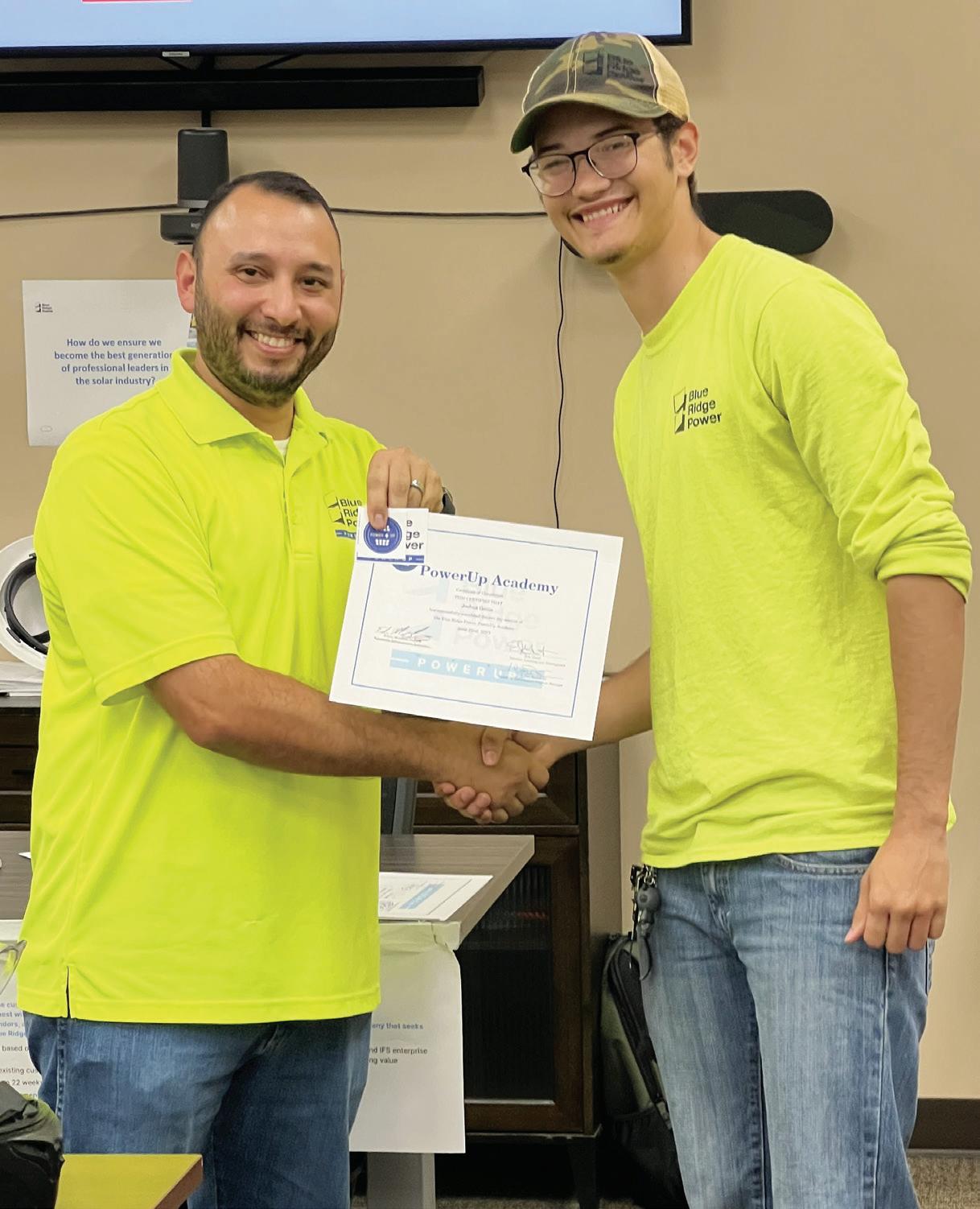







stock code:301278




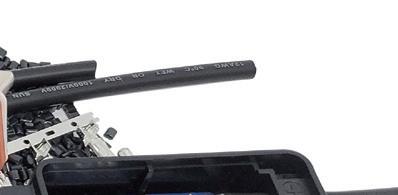

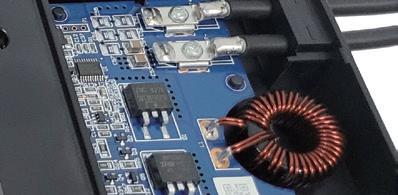

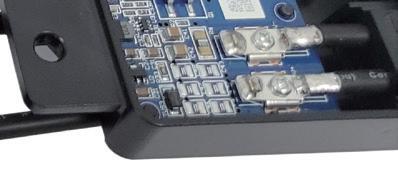


POLICY
market@qc-solar.com.cn +86 187 2403 3480 World’s Leading Manufacturer of PV junction boxes, RSD boxes, Cables, PV and ESS connectors QC Solar Corporation
19 SOLAR POWER WORLD MAY 2024
A graduate from Blue Ridge Power’s PowerUp Academy.
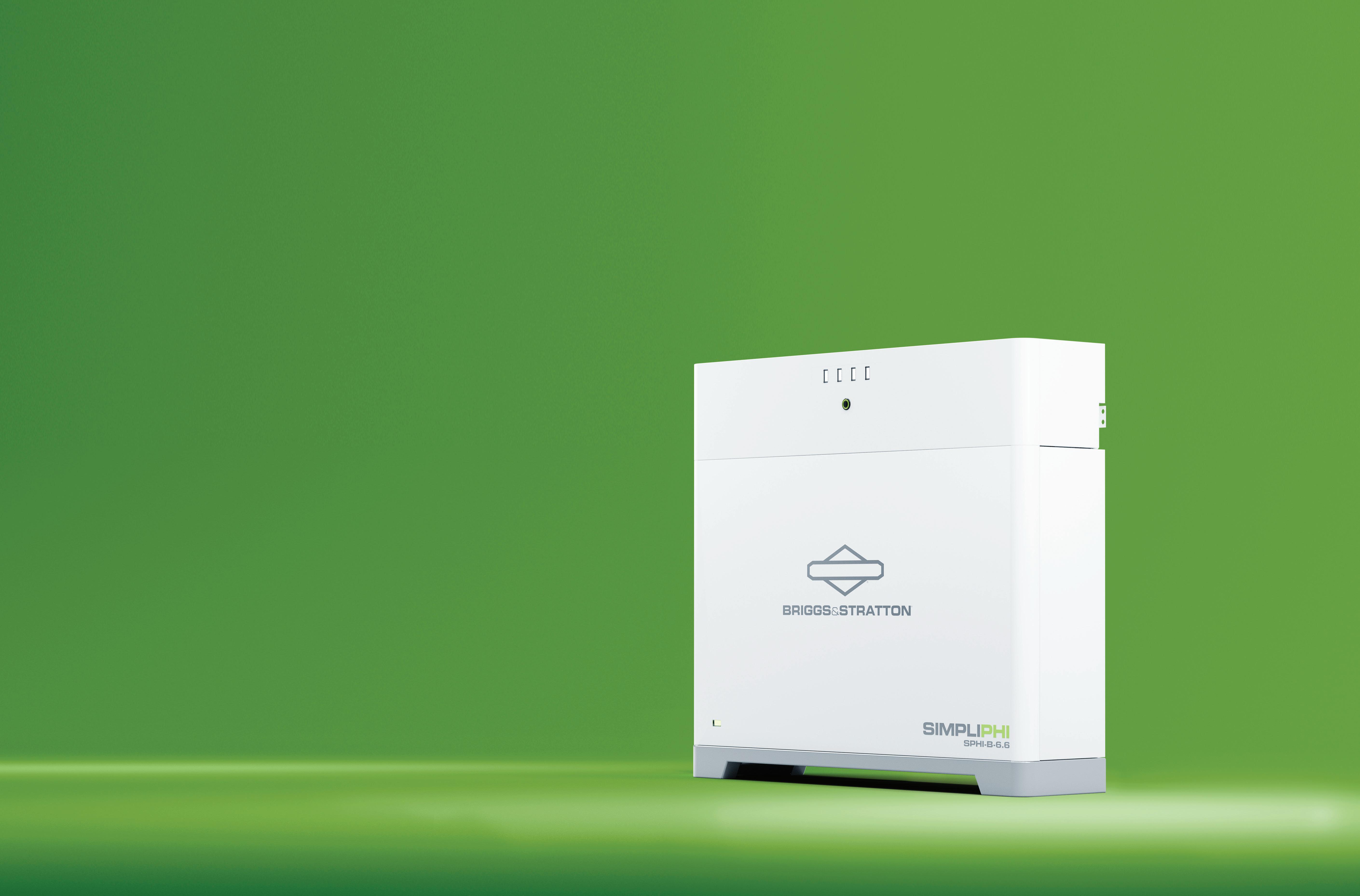

C M Y CM MY CY CMY K


© 2024 Briggs & Stratton, LLC.
HA nd L e WITH CAR e
HA nd L e WITH CAR e
THE DELICATE MATTER OF PROTECTING SOLAR PANELS DURING SHIPPING, HANDLING AND EXTENDED STORAGE.
For a product
made For
a
product made primarily of fragile glass, solar panels can absorb many stressors and still successfully function well beyond their 30-year warrantied lifespans. After passing a barrage of tests — including mechanical stress, hail stress and thermal cycling — solar panels are given their stamp of approval and can be installed with few concerns about performance in the field.
The real risk for panel damage lies somewhere between leaving the module factory and finally being installed on roofs or in fields. Accidental breakage and component damage are most common in the shipping and handling stage, and although still only a small chance, the potential for even 1% of product loss due to damage can really add up.
“We tend to find at every touchpoint in the supply chain 1 to 2% breakage,” said Philip Schwarz, CEO and co-founder of PVpallet, a supplier of sustainable solar panel pallets made of recycled plastic. “You’re talking a small percentage, but it adds up to several million dollars of broken panels every year that could be avoided.”
The risk for damage is seen where solar panels are palleted and how hands or equipment get those modules to the next point in the chain. Panels are usually flat-stacked or stacked vertically in landscape-positioning on wooden pallets, wrapped in plastic or cardboard and secured with strapping bands. In a typical warehousing situation, that storage arrangement is fine for panel protection, said Tristan Erion-Lorico, VP of sales and marketing at Kiwa PVEL, an independent testing lab.
KELLY PICKEREL | EDITOR IN CHIEF 22 SOLAR POWER WORLD MAY 2024 www. solarpowerworldonline .com
“Considering how many modules are stored in warehouses through the United States, we’re not getting calls for help with warranty claims because safe-harbored modules have selfdestructed,” he said. “Module breakage in the field is a much bigger issue than breakage in storage.”
This may be due to the disposable packaging that solar panels are stored and shipped in. Wooden pallets don’t have the most stable bases, and wrapping modules in plastic film does little for 360° of protection. As soon as wrapping is cut on vertically stacked panels, those 50-lb panels are at risk of toppling over. And with solar panels getting larger, heavier and more awkward in size, the chance for damage just by unloading the product becomes larger.
“I’m a tall guy and I wouldn’t want to be standing next to one of those pallets as you open it up and try to unload it,” Erion-Lorico said. “I don’t know how they hold the modules securely as you’re going through the pallet. Even on their side, that’s still a lot of weight.”
In addition to being a more sustainable choice, the recyclable PVpallet is a safer packaging option for both the panels and the humans moving them. The company’s flagship Series X product is an industrial HDPE pallet with a steel-reinforced base and removable sidewalls. It can be adjusted to fit various module sizes and prevents the domino-effect of unwrapped pallets.
“That’s a big breakage point: when people unband or are trying to unload and load pallets, and the stack falls over and breaks,” Schwarz said. “We have load management handles in our walls that slide along a rail, so if they want to ship partial loads, those handles can sandwich [the panels] very tightly together. That keeps them upright and keeps them from falling over and contributing to additional breakage.”
The PVpallet’s adjustability is ideal for warehouses, especially when
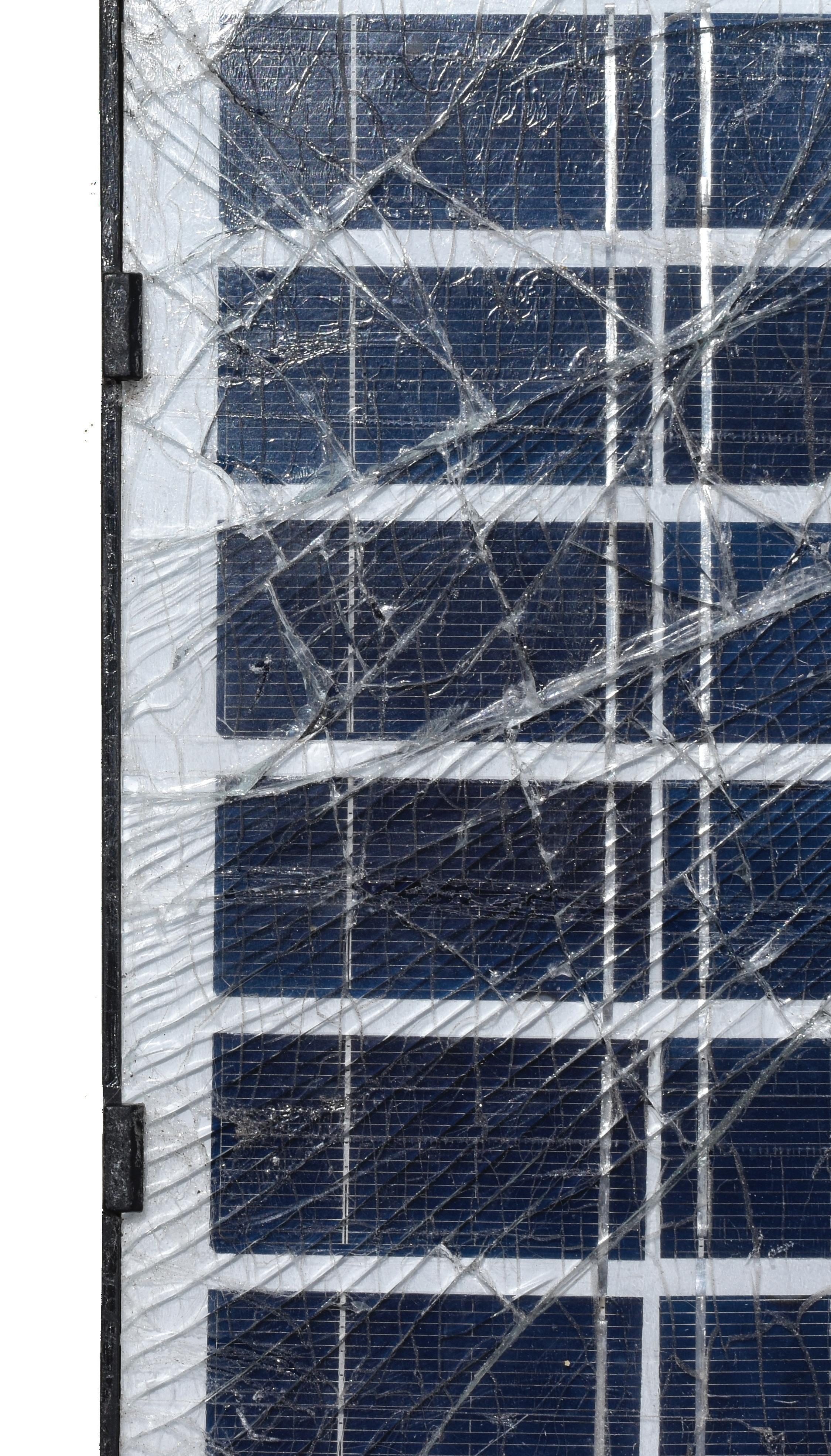
23 SOLAR POWER WORLD MAY 2024 www. solarpowerworldonline .com
TECHNOLOGY
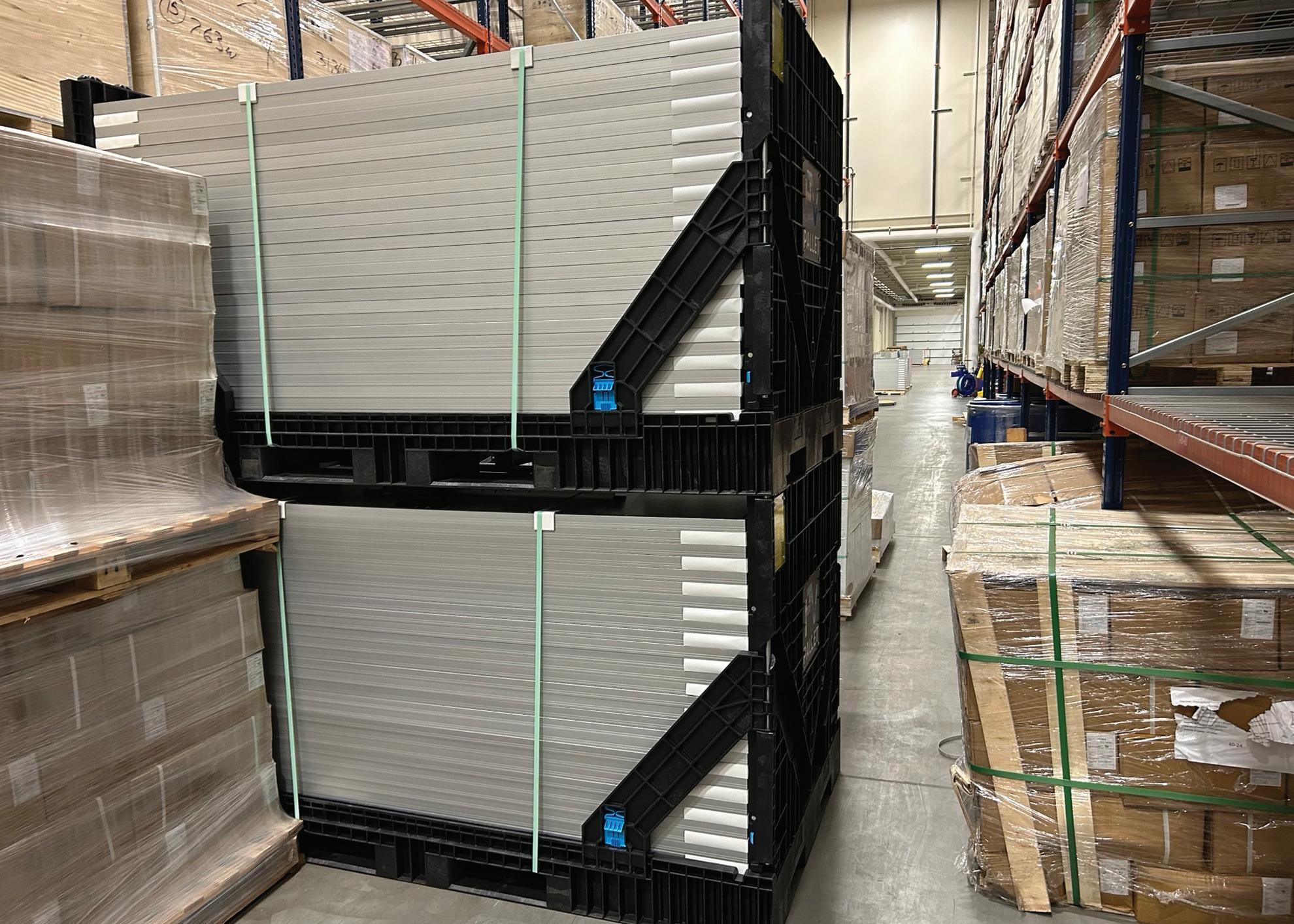
loose panels from multiple pallets must be re-grouped. The plastic pallet is also beneficial to large-scale installers working down long panel rows over many weeks or months in varying weather conditions. Solar panels situated on wooden pallets and wrapped in cardboard aren’t very well protected from the elements.
“Months of sitting out in the elements, the issue is the pallet falling over and there may be some glass breakage. But it’s also contaminants getting into connectors, and connectors not being shipped with caps,” ErionLorico said. “Pallets aren’t weather-tight. Sure, vertically stacking traditionally is safer from a microcracking perspective, but now you’ve got every cable at the bottom, sitting in a pallet that could be collecting water. The cardboard is decomposing, creating fibers that go into the water and into the connectors. That would be my biggest concern.”
Right now, there aren’t too many solutions for preventing shippingand-handling damage to solar panels besides using common sense and the utmost care. There is a an International Electrotechnical Commission (IEC) code
for testing the security of panels during the transportation of pallets. Although IEC 62759-1 largely tests how modules react to long-term truck transportation vibrations, increased industry scrutiny on this testing method could establish better practices for unloading panels using various packaging materials.
PVpallet would like its pallets in
more warehouses and at the end of manufacturers’ lines. The company has an agreement with Minnesota panel manufacturer Heliene to load panels onto PVpallets for Heliene’s builtto-order panel supply agreements. Schwarz said PVpallet is focusing on more domestic panel manufacturing relationships, especially as the market grows. The company hopes to create a circular economy to cut down on waste and save a lot of broken panels in the process.
With so many imported panels now sitting in warehouses across the United States, more touchpoints will be happening as panels exchange hands more frequently before finding their end-customer. PVEL suggests testing modules at their first warehouse point to have the data that they’re working and being protected.
“Even in a non-temperaturecontrolled warehouse, [panels are] probably fine for an extended period,” Erion-Lorico said. “But even if you’re going to warehouse modules, doing procurement due diligence and testing the factory audits, having that data will make them a more fungible commodity.” SPW
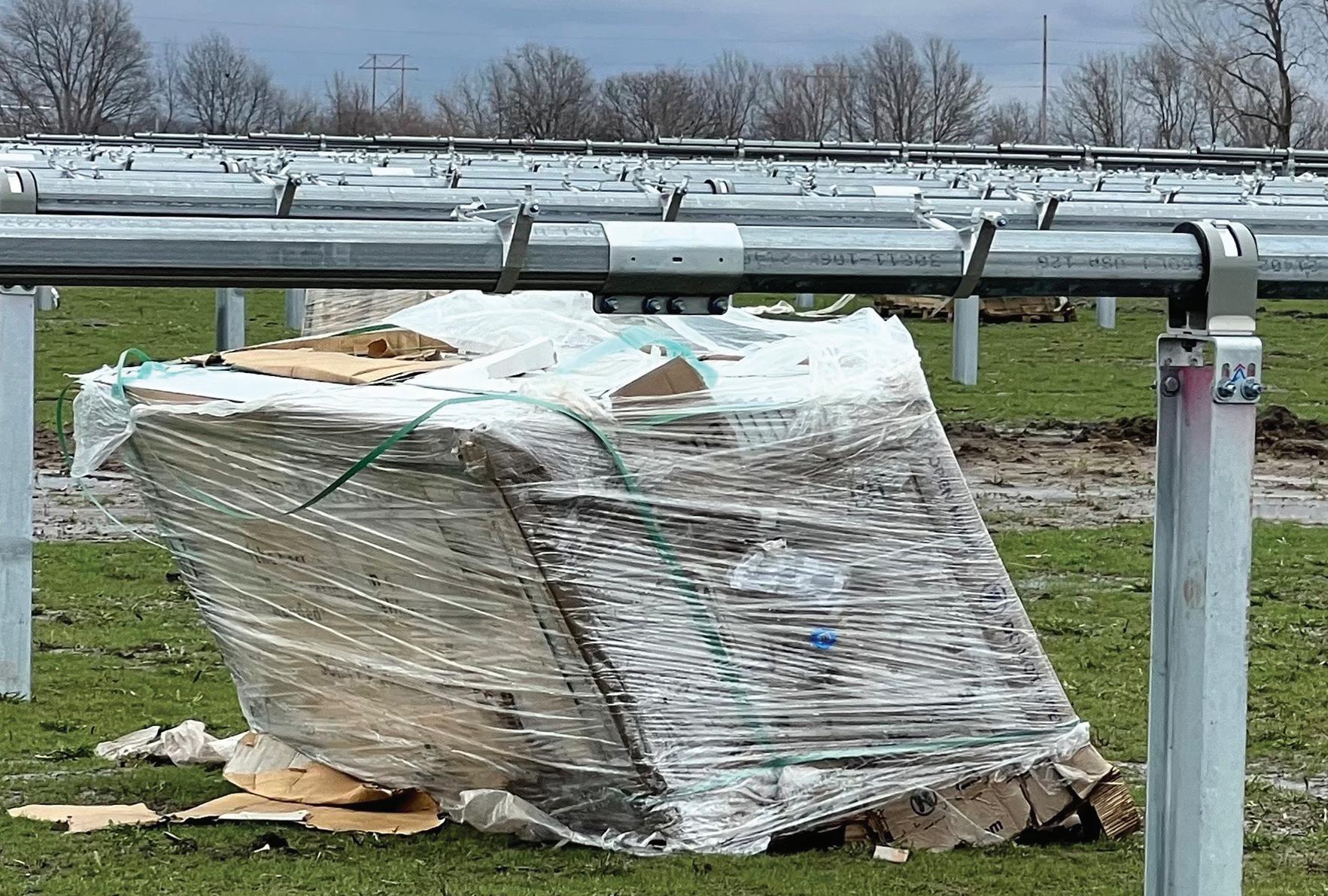
TECHNOLOGY
PANEL
24 SOLAR POWER WORLD MAY 2024 www. solarpowerworldonline .com
Solar panels flat-stacked in a Series X PVpallet.
Poorly handled panel pallets in the field.
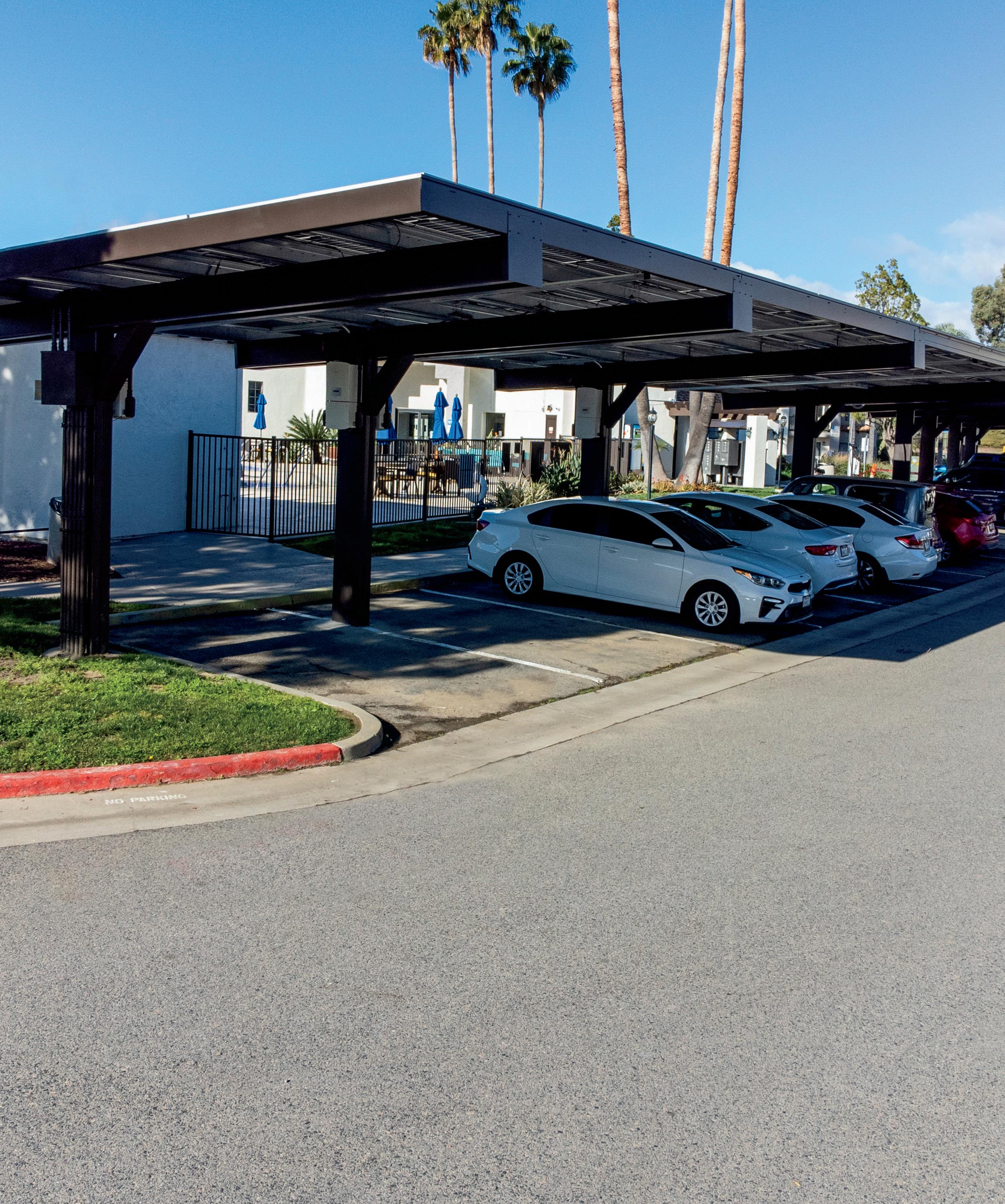
DESIGNED | ENGINEERED | SUPPLIED | INSTALLED 1.800.366.9600 : baȷacarports.com : ewf@baȷacarports.com Design-Build Since 1981 • Built better in the USA for over 40 years by our own unmatched baȷa-Certified Construction Teams • Fully integrated solutions with in-house baȷa Engineers for faster, easier projects • Pre-Fabricated Framing Systems with Bolted Connections – No field welding • Snow Loads from 20psf to 100psf –Wind Speed rated to 170MPH • Over 40MW built per year VISIT US IN BOOTH #106 AT RE+ TEXAS - MAY 14-15 - HOUSTON, TX
Inverter insights: Repowering older solar projects
While solar panels generally come with 25-year warranties and can continue generating power well beyond three decades, the technology behind inverters and other balance of system components may become outdated much more quickly. The easiest fix to ensure solar projects are working at their peak is to replace inverters in a repowering situation. Solar Power World talked with Igor Mogilevski, product and solutions director for inverter manufacturer Solis, about repowering efforts and the small details one must consider before taking on this operational expense.
SPW: What is repowering?
Mogilevski: Repowering addresses the widespread aging of solar sites developed with central inverters about 10 or more years ago, and it is needed to maintain production on these sites. It
is a particularly good option for system owners looking to get power back online while keeping costs low. Many repowering projects are focused on inverter replacement, as solar panels can maintain performance longer, but it can include upgrading additional system components.
What are the challenges for repowering projects?
Lack of spare or replacement parts and lack of warranty support, especially in situations where OEM companies have gone out of business. Compatibility can also be a huge issue. New central inverters often have significantly higher power capacity and voltage ratings compared to older models (1,500-V vs 600-V).
Central inverter alternatives, such as string inverters, can offer the flexibility you’ll need but require
rewiring mainly on the AC side, which could be a significant challenge for owners due to additional labor cost and physical site limitations.
When does repowering make financial sense?
It’s all about weighing the capital expenditure (CapEx) cost of repairs against the potential revenue loss. Typically, only a portion of the site may underperform, prompting owners to evaluate repowering as a cost-effective option — here, labor is almost always the main cost and deciding factor. Therefore, the decision balances technical solutions with implementation labor.
What is the best way to select an inverter?
There are many factors to consider, but inverter selection is ultimately based
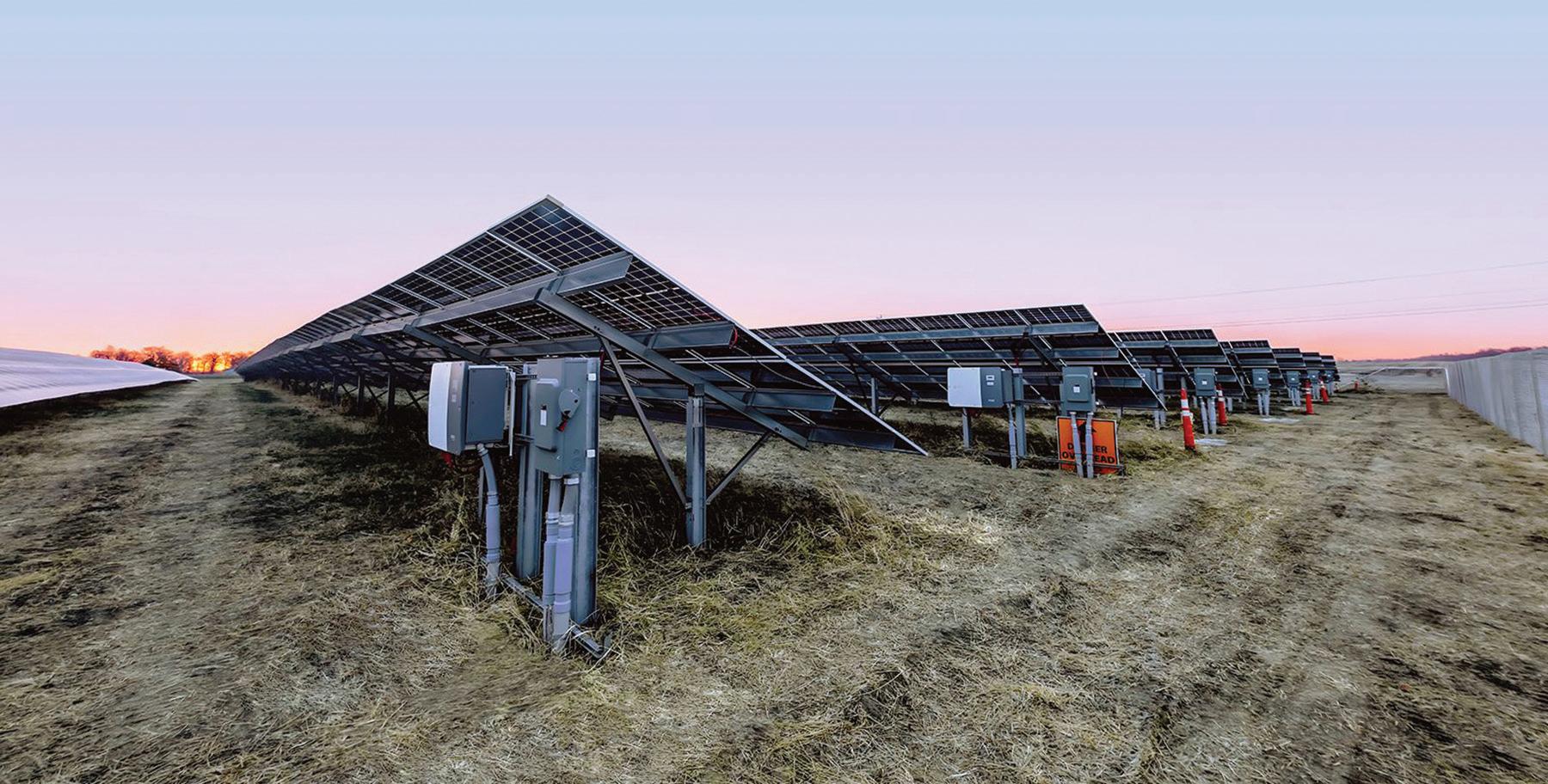
26 SOLAR POWER WORLD MAY 2024 www. solarpowerworldonline .com INVERTER TECHNOLOGY KELSEY MISBRENER • MANAGING EDITOR
A solar installation in Ohio using Solis inverters. Solis
on power and AC voltage requirements. For AC voltages ranging between 360 to 480, we would opt for our 75- to 100-kW series inverters; for 208 or 200 V, we’d use the 30to 60-kW series inverter; and for higher voltages like 690 to 800, we will typically utilize our 255- or 350-kW inverters.
At the end of the day, the grid voltage determines the type of inverter needed for connection.
What are the advantages of a string inverter over a central inverter when repowering?
A very big advantage, which almost goes without saying, is the plain fact that more string inverters and their components are available on the market right now — which also makes them easier to repair.
With central inverters, spare parts and repairs may no longer be available, leaving owners to handle issues independently, which can be especially challenging for non-technical people.
Meanwhile, string inverters offer a flexible solution for various voltages and configurations, making them suitable for a wide range of applications and sites.
What are the advantages of swapping central inverters in a repowering situation?
It’s actually a very straightforward install process. With central, existing components can often remain in place, and the inverter is replaced in a one-to-one manner, which simplifies the whole thing.
Any disadvantages to replacing old central inverters with newer versions?
I’d say limited flexibility and availability. Current central inverter technology does not have the same kind of inverters for drop-in replacement, as they usually have a lot more power than older inverters. Custom-developed products are an option, but this can be very costly and result in long periods of reduced or halted power generation.
What are the benefits of a backward-compatible string solution?
String inverters have a history of being backwardcompatible, unlike central inverters, which often require significant rewiring between generations. For example, our older generation 100-kW series is backward-compatible with our current series, simplifying replacements. This obviously cuts down on costs related to labor and equipment.
Can you give a brief overview of a repowering proposal scenario?
At Solis, we simplify the process. With just an existing single-line diagram, our engineers can build a technical/ commercial proposal for repowering projects, including quotations for equipment-only situations that don’t have labor or other project costs, which are typically handled by the owner or EPC. We also assist in recommending products and configuring designs, ensuring each project’s unique needs are met.
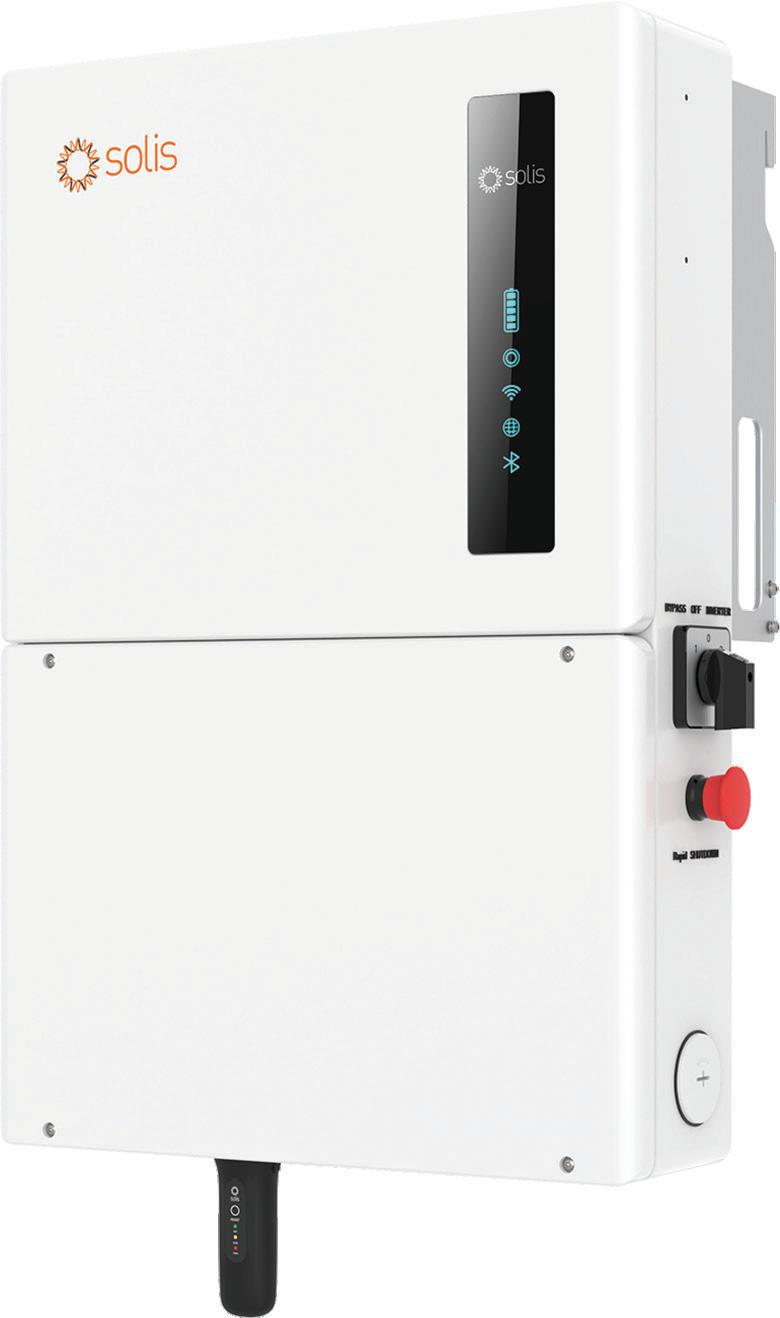
Supply chain issues seem to be a common concern when looking to repower. How does Solis ensure supply?
I get it. The anticipation of a surge in repowering due to the aging of so many utility systems coupled with the competition for new installation resources only underscores this concern. However, because Solis has an annual manufacturing capacity of 80 GW, we are well-positioned to overcome any potential supply chain constraints. Plus, the automated nature of our manufacturing process ensures a steady output of products that are high in efficiency and reliability. In my opinion, it is a big reason Solis stands out in terms of resilience. SPW
INVERTER TECHNOLOGY 27 SOLAR POWER WORLD MAY 2024 www. solarpowerworldonline .com
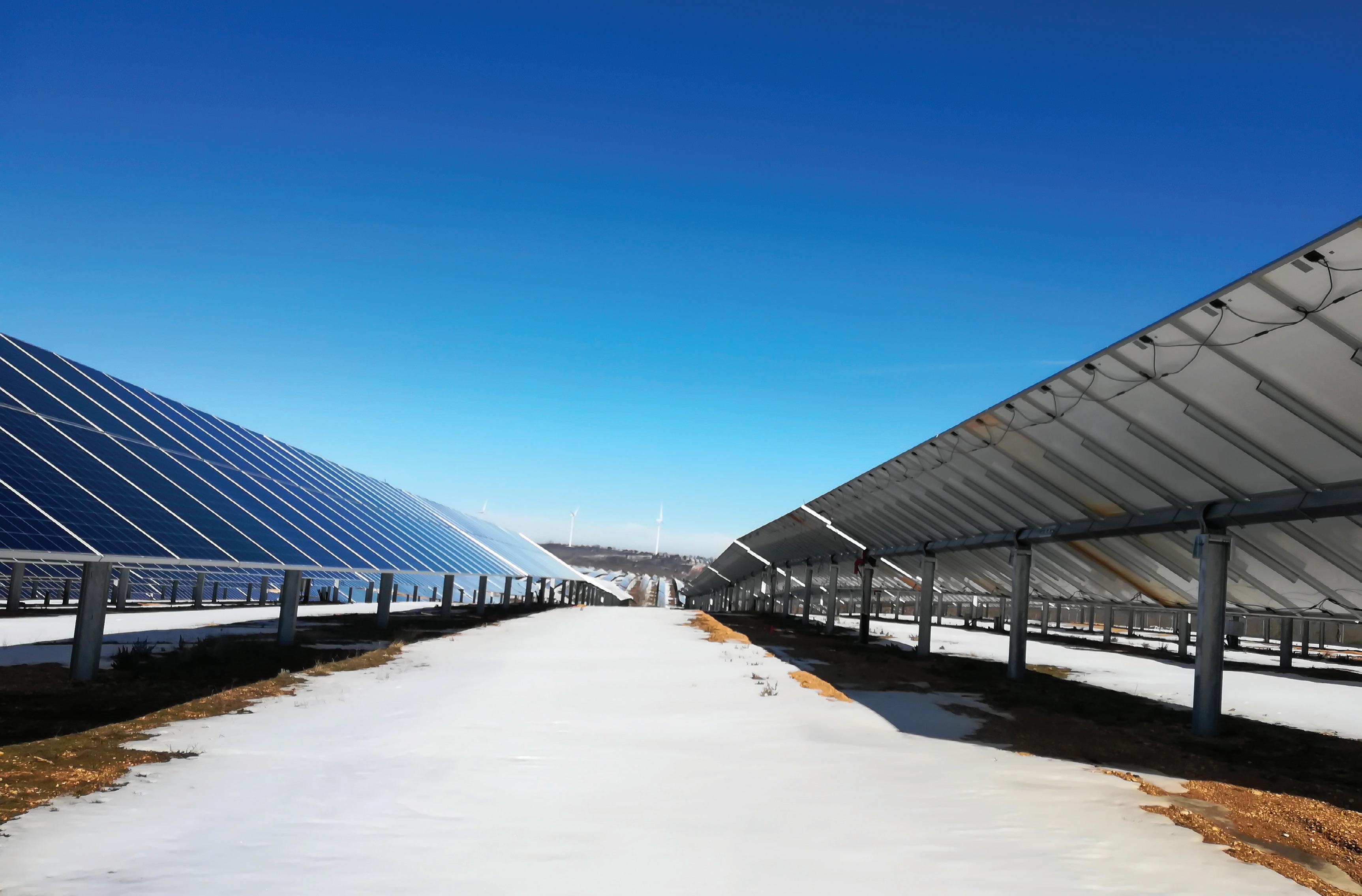
Reducing extreme weather damage risk for solar tracker projects
As the global temperature continues to rise, so does the severity of weather events occurring annually. Hail, high winds, snow and floods are all risks to ground-mounted solar projects, and companies producing solar trackers are actively addressing how these kinetic racking systems can avoid damage from adverse weather conditions.
“We can’t move [our foundations]. We are where we are, so we’re experiencing the conditions that are at that site,” said Aaron Gabelnick, chief strategy and technology officer for Array Technologies. “We have to be actively pursuing ways in which to mitigate the potential damage that can occur from severe weather.”
Automated weather response and atmospheric sensors may come
standard on solar tracker operating systems, but advances in other solar products — like solar panels growing in size — make predicting how arrays react to weather events a trickier exercise. Luckily, the solution to preventing weather damage on solar tracking systems is mostly about finding the right angles.
De-risking severe weather
Weather damage mitigation starts with understanding the environment in which a solar project will be built. Northern climates will likely have annual snowfall, Southeast states may experience hurricanes and there’s not a single site immune from wind issues. These factors determine a solar tracker project’s design, down to the thickness
of the steel used for racking and foundational posts.
“[Solar trackers] are novel structures to major infrastructure,” said Colin Caufield, VP of sales at Soltec, a singleaxis solar tracker manufacturer. “Having a moving post and beam structure is not something that was really thought of when these design codes were made however many decades or even centuries ago in some cases.”
Wind is the most common weather exposure for trackers. Strategies for curbing damage from oncoming wind on single-axis trackers have shifted from stowing solar module rows at a flat, 0° angle to pointing them at an angle closer to 45°. Studies and field testing have shown that modules stowed flat on these trackers were at risk of torsional
28 SOLAR POWER WORLD MAY 2024 www. solarpowerworldonline .com
MOUNTING TECHNOLOGY
• SENIOR EDITOR
BILLY LUDT
Soltec
damage. Tilting the modules instead of stowing flat so the leading edge is lower than the farther edge can reduce that oncoming pressure, causing wind to fly above or below the module with less movement in the tracker itself. Dual-axis trackers can still stow flat to mitigate wind pressure, because they are typically installed atop poles, which have lower wind resistance than single axis foundations.
Solar trackers manufactured for projects in snowy regions should account for the weight of snow resting on solar modules. The common solution for dealing with snow is tilting panel rows down to one side to shed snow accumulation.
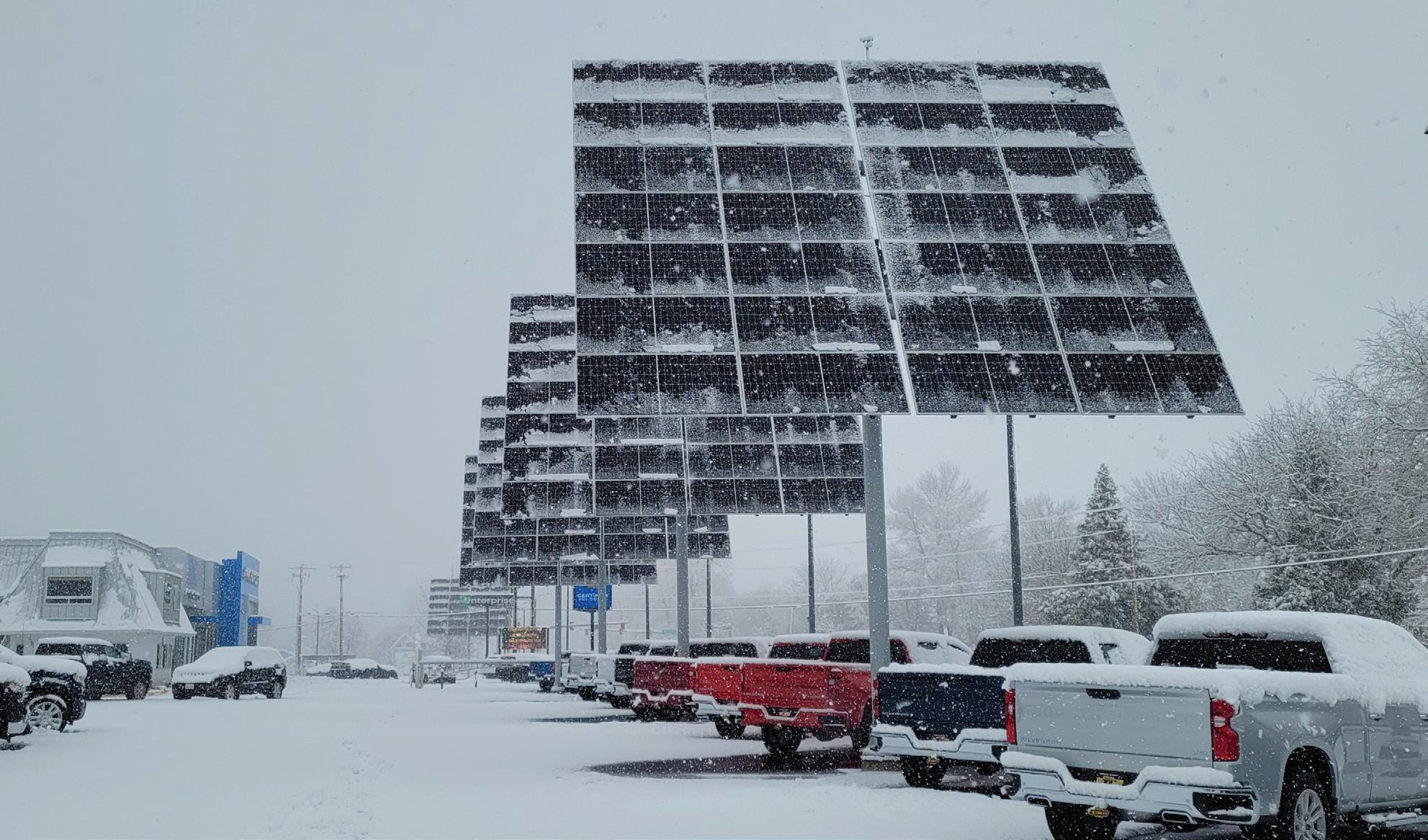
However, snow shed isn’t the only risk snow presents to trackers. On sites with windy conditions, snow drift can pile beneath a solar tracker row and affect its tilt clearance. And with a freeze-thaw cycle, piled snow can harden enough to be detrimental to tracker arrays. Overcurrent protections can keep trackers from crashing into obstructions, functioning like a garage door that won’t close if it detects something underneath it.
“If a tracker is tracking into that hard surface and it doesn’t have some type of overcurrent protection, motors can be damaged, modules can be damaged, because the tracker just keeps tracking down into an obstruction,” Caufield said. “It’s much like having a truck parked underneath a tracker.”
Additionally, in northern geographies, solar trackers should have tolerances built in for physical expansion and contraction in warm and frigid temperatures. Low temperatures can affect system movement and how electronic components perform.
Heavy rainfall isn’t an issue for a solar tracker until it begins to pool beneath the system. Arrays can be outfitted with flood sensors to direct trackers to stow panel rows above the water surface if flooding levels climb too high. In floodprone areas, trackers can be produced with elevated post heights to anticipate rising water levels.
“Modules can be submerged, according to manufacturers, but by and large, we’re asked to design our system such that the clearance is above floodplain,” Caufield said. “So, the leading-edge height is still above floodplain even at a wind-stow tilt.”
“The relatively recent issues around hail that have been catastrophic for some projects out there have put pressure on all manufacturers to come up with mitigation strategies,” Caufield said.
To anticipate hailstorms, it’s advised that operators use atmospheric sensors and subscribe to weather services to predict weather conditions. The common method to reduce
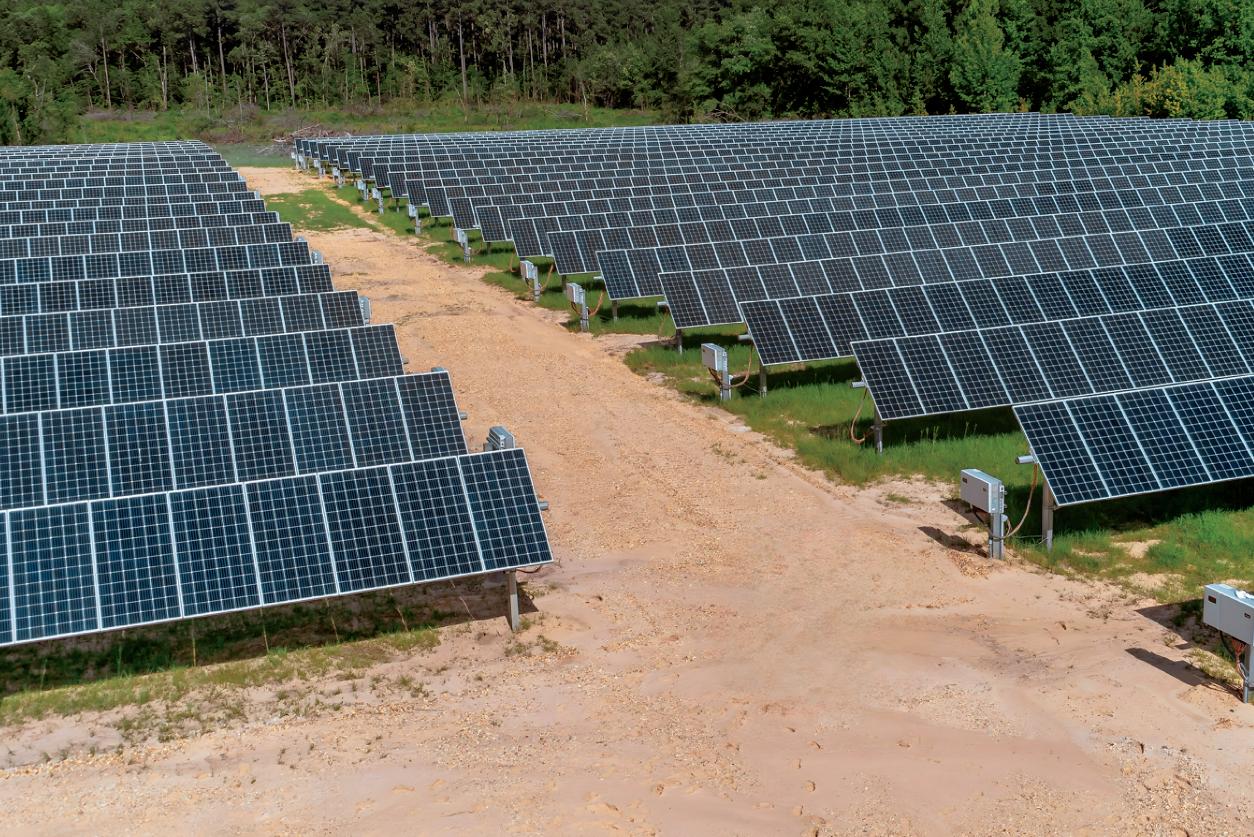
Then there’s the danger posed by hail. In the last few years alone, hail has caused hundreds of millions of dollars in damage to solar projects. These balls of ice hurtling from the sky are the greatest risk to the panes of glass encasing solar cells.

29 SOLAR POWER WORLD MAY 2024 MOUNTING TECHNOLOGY
COOPERATIVE OWNED COMMUNITY FOCUSED 501.438.0031 todayspower.com AS A TOP-TIER PROVIDER OF RENEWABLE ENERGY SOLUTIONS, TPI IS COMMITTED TO ADVANCING COMMUNITIES THROUGH COMPREHENSIVE SERVICES THAT INTEGRATE SUSTAINABLE ENERGY PRACTICES AND ENVIRONMENTAL SOLUTIONS. SOLAR | BESS | EV CHARGING| O&M | CONSULTING
Stracker Solar
damage to modules from falling hail is to create as steep an angle as possible so the pellets just graze the surface of the solar panel. Pointing the front of a module perpendicular to the fall path of hail makes it more susceptible to damage.
Soltec has experimented with directing modules so their backsides are exposed to hail, but that requires more structural reinforcement with additional components like dampers, since solar trackers are typically built to take wind head-on. Array Technologies developed a proprietary Hail Alert Response system to help its solar trackers preempt and reduce damage from hailstorms.
“All this stuff has been designed to satisfy insurance agents and financial institutions to protect the asset,” Caufield said. “But I venture to say that it’s impossible to achieve 0% risk on any of these jobs, especially the ones that are in the ‘Hailstorm Alley’ of West
Texas to Mexico and going north into the Colorado Plains, where it’s so common.”
All weather events that could be detrimental to solar systems are accompanied by high winds too, so it often comes down to operators to determine what to prioritize protecting against. Each weather event poses a specific risk to trackers.
“When it’s hailing, if there is wind, you prioritize wind against hail,” said Hadi Hajimiri, CEO of Stracker Solar, a dual-axis tracker manufacturer. “With hail, you may have damaged solar panels, but with wind, you may have entire system damage and potentially harm for your surroundings, because you don’t want the tracker to be bending and falling off.”
Although extreme weather is on the rise, safety measures can ensure trackers keep projects online and spared from damage. Using the latest operating
systems driven by safety algorithms and atmospheric sensors can better predict and defend projects against the elements. These are automated systems controlling miles of tracker rows following the sun throughout the day, capable of reacting to the slightest change in wind speeds.
Companies making solar trackers plan to keep preparing these moving PV projects for a changing climate and hope to one day be the solution for solving it.
“It’s incredibly important that we continually advance our capabilities in severe weather control, because your insurance premiums go up, the likelihood of damage increases, the levelized cost of energy goes up,” Array’s Gabelnick said. “Everything goes up, and solar becomes less competitive against some of the other renewable energies that are out there.” SPW
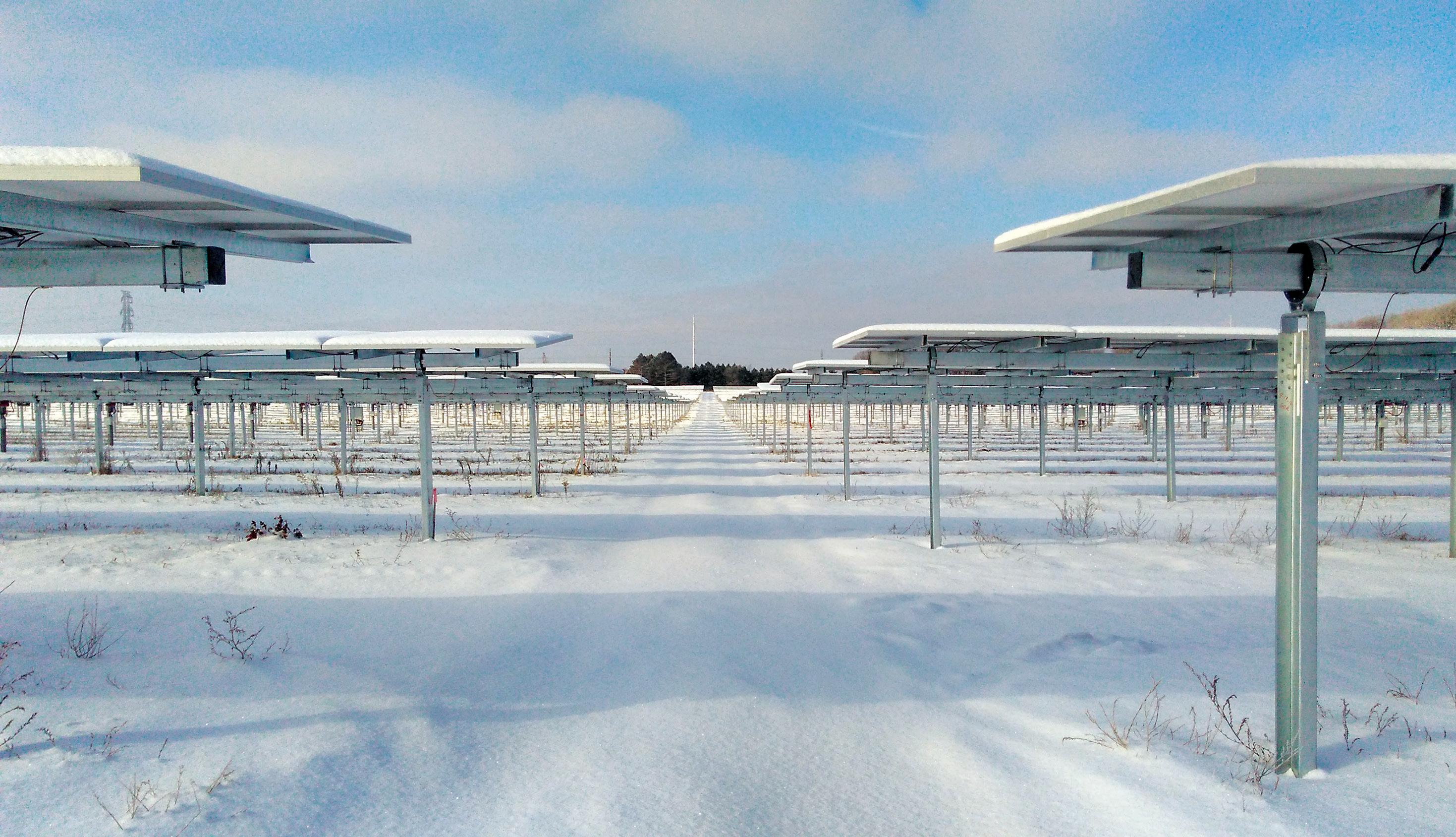
MOUNTING TECHNOLOGY
30 SOLAR POWER WORLD MAY 2024 www. solarpowerworldonline .com
Soltec


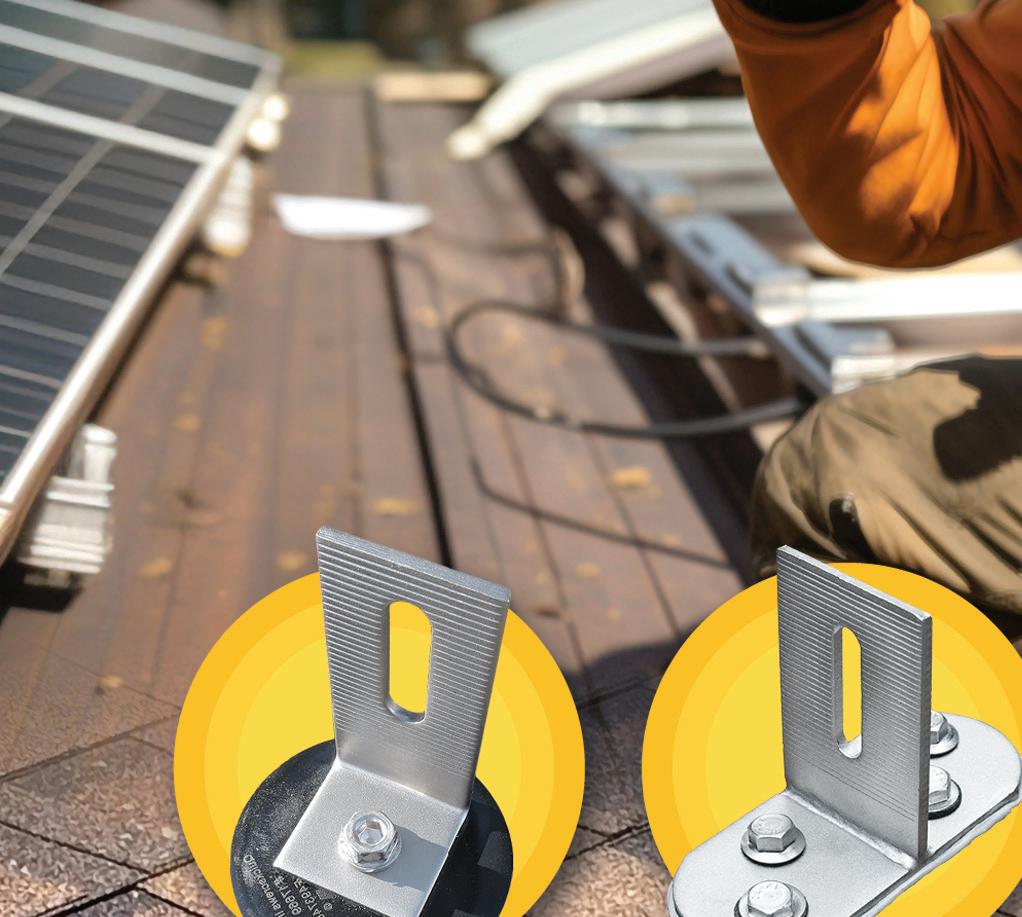


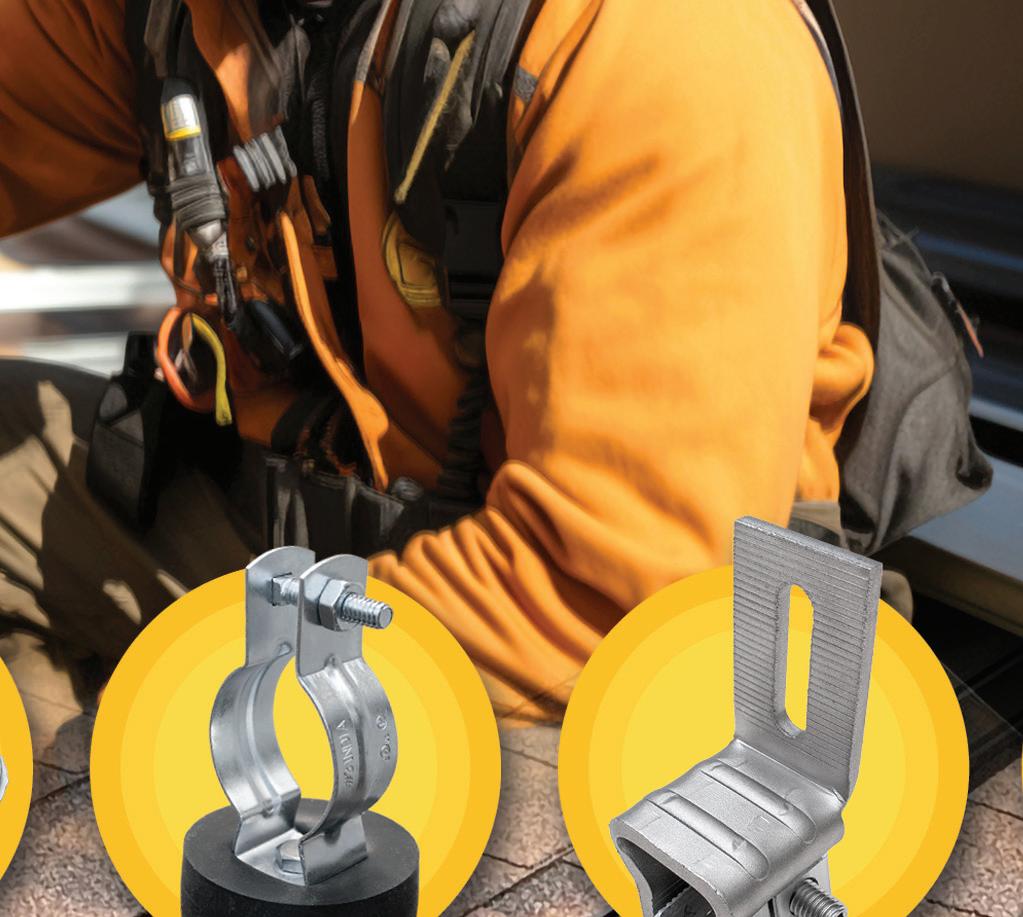



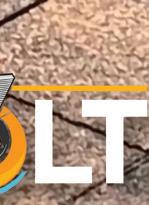






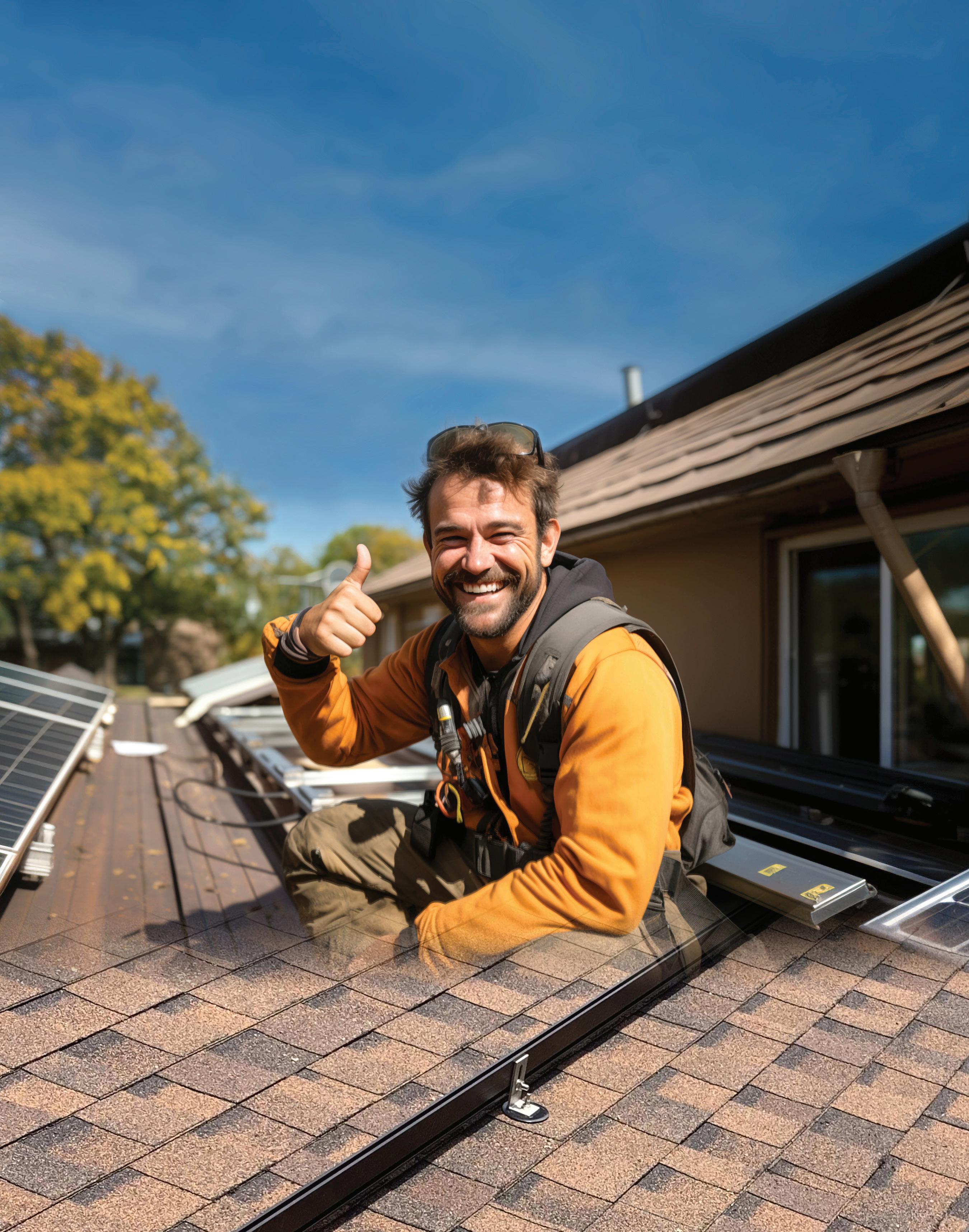


Large-scale battery O&M considerations
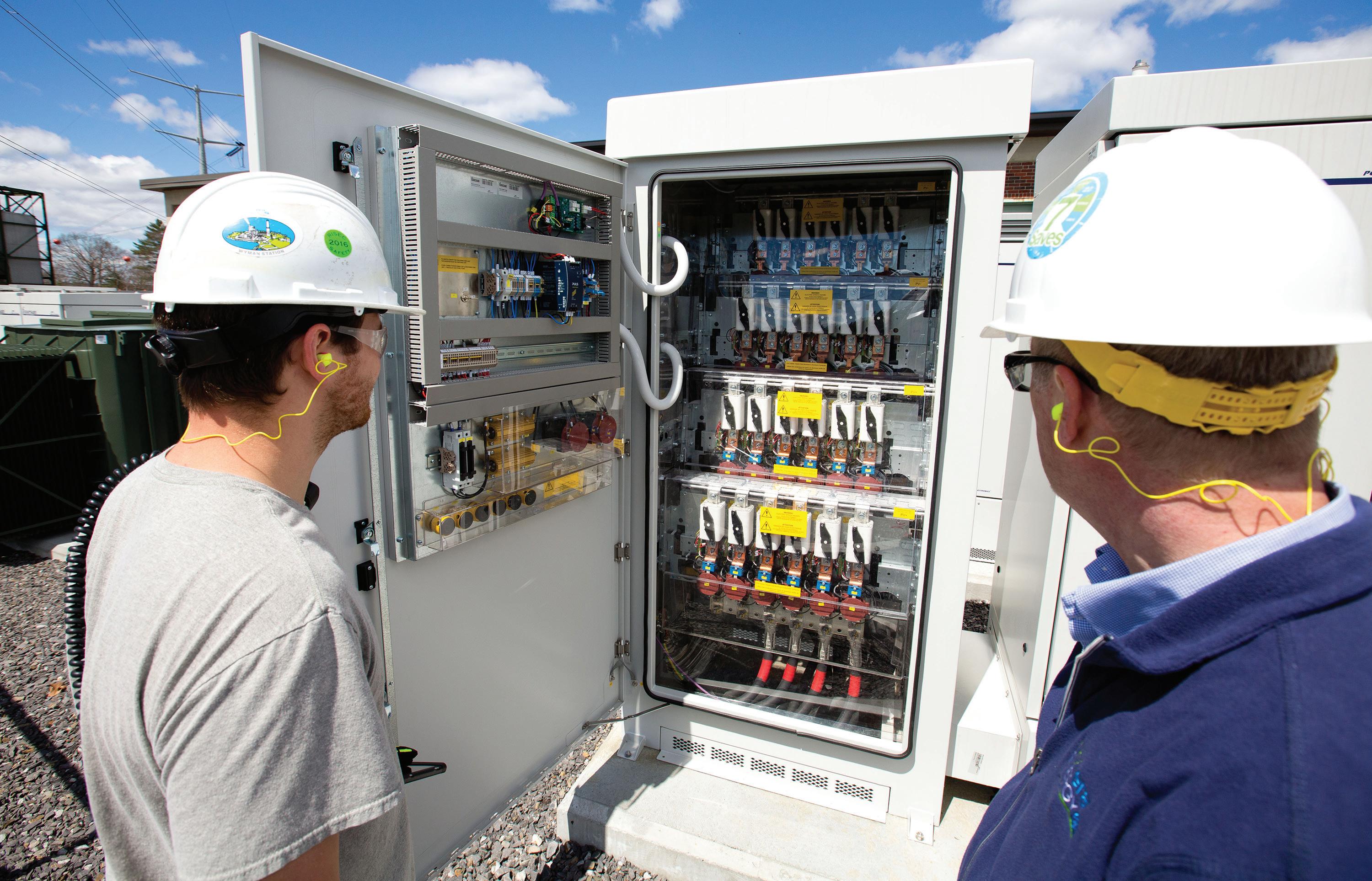
The operations and maintenance (O&M) of a utility-scale solar project is largely obvious — keep solar panels clean, monitor inverter health, maintain the grounds and check tracker mechanisms for wear. Maintaining large-scale lithium battery energy storage system (BESS) installations takes a different skill set, although they’re largely hands-off and don’t require any weather-related upkeep. But that doesn’t mean there isn’t anything to monitor, since BESS projects actually generate an enormous amount of data. Asset managers can help portfolio owners sift through the mountains of data to ensure batteries are working at their full ability.
Software provider Power Factors optimizes its customers’ project
portfolios through data-driven products. The company’s Unity Performance Management product helps BESS project owners and operators with O&M tasks, improving uptime and yield. Solar Power World talked with Robert Johnson, global VP of sales solutions at Power Factors, about the asset manager’s work in the BESS space.
SPW: What kind of maintenance is regularly performed or monitored on large-scale lithium BESS?
Johnson: Maintenance activities fall under two broad categories: corrective maintenance and preventive maintenance.
Corrective maintenance involves activities like replacing faulty BESS modules (the components that
encompass a set of cells), BESS racks (the components that encompass a set of modules), inverters or inverter components, balance of system (BOS) components like HVAC systems and distribution panel breakers, or fire and safety-related components.
Preventive maintenance involves activities like replacing filters, refilling liquid-cooling systems, calibrating sensors, replacing modules that indicate excessive degradation, checking fire suppressant systems, recalibrating state of charge (SOC) estimations and much more.
However, the ability to perform these activities effectively rests on having a solid O&M strategy and the underlying data and tools to execute the strategy.
32 SOLAR POWER WORLD MAY 2024 www. solarpowerworldonline .com STORAGE TECHNOLOGY KELLY PICKEREL • EDITOR IN CHIEF
NextEra Energy
What are some recommendations you have for O&M strategies for these systems?
Acquiring the data is key, and it’s not always easy. BESS systems involve a lot of data, and in some cases can represent a step-change in the volume of data from more familiar asset classes like solar and wind. It’s critical for owners, operators and O&M providers to understand the importance of this data and to develop a strategy for securing access to it. That means understanding your network capacity for continuously transmitting it, having the right communication gateways to collect it and the right upstream systems to process, store and retrieve it.
Once you have your data under control, the next best strategy is to develop a capacity to foresee system failures so you can proactively address them before they occur. This helps avoid costly truck rolls and downtime incidents, which reduce revenues and may incur liquidated damages depending on the underlying contractual agreements. The key to foreseeing system failures is predictive alerting. Power Factors provides a growing library of early fault detection (EFD) alerts and events.
For example, we detect imminent
cooling system failures, which allows operators to intervene well in advance of significant degradation or damage. On a recent occasion, one of our customers dispatched a field technician after receiving a cooling failure EFD event. When they arrived on site, they discovered the liquid-cooling system had not been returned to service after a recent maintenance activity. Luckily, they were able to return the system to service before any damage was done and avoid the expensive headache of having to litigate who was responsible for the mishap.
How does Power Factors acquire the data needed to support these strategies?
We get data from the battery management system (BMS) provided by the BESS integrators, as well as from power plant controllers (PPC) and supervisory control and data acquisition (SCADA) systems. We acquire data from systems using communication gateways, which are typically deployed onsite. However, we can also acquire data from sites remotely over a secured network. We can also acquire and exchange data with other central data aggregators via APIs (application programming interfaces). In many cases, Power Factors is the provider of the PPC and
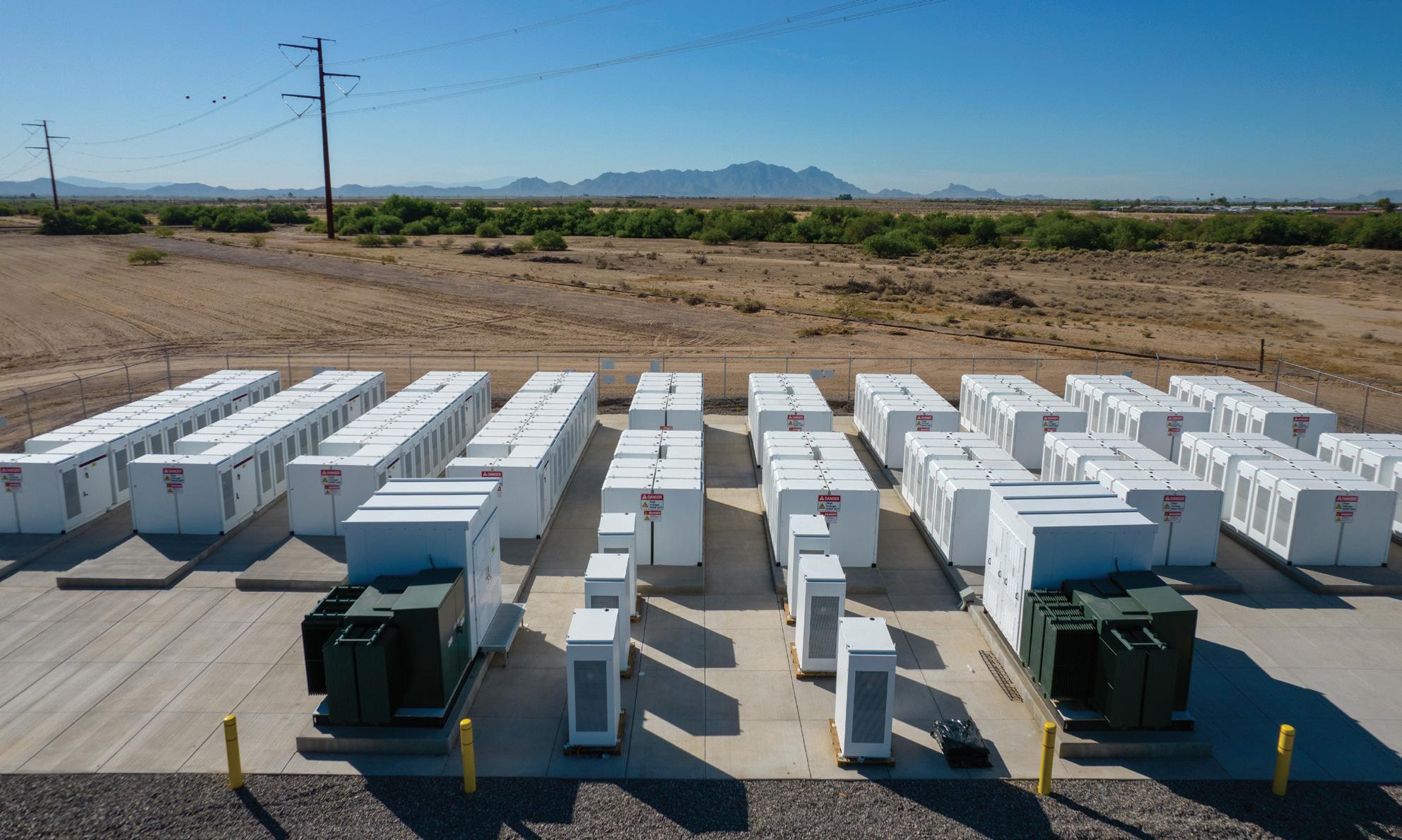
SCADA, which greatly simplifies the data integration process.
From BMS, we acquire string-level sensor measurements of temperature, voltage and current, as well as any digital error and fault codes. We can also read this data directly from equipment like inverters, meters and relays. We then use all this data to determine if systems are operating within their nominal parameters. If they are not, our event management system generates important information that helps to answer questions like: Which device is impacted? What is the severity level (how urgently do I need to act)? What is the ongoing revenue impact? Am I nearing any compliance or warranty thresholds? Who is responsible for fixing this issue?
It’s easy to see how important this type of information is. If you’re operating just one large BESS or if you have just a couple sites with the same OEM, you can probably get by using the BMS or energy management system (EMS) for your monitoring needs. But as soon as you have a few systems or more, and especially if they involve different OEMs and integrators, managing the torrent of information is daunting, let alone trying to build and sustain a coherent operations and maintenance strategy.
Which data is most important for BESS O&M?
Let’s start with the cooling system. Knowing the status and health of the cooling system is critical because temperature is such an important factor on a battery’s health. The more analog readings and digital codes we have related to temperature, the better.
Cell imbalance is also particularly important due to its negative impact on system performance. These imbalances are generally the result of variations in manufacturing quality or temperature impacts from thermal management system design flaws, which lead to unbalanced power distribution on the shared DC bus and can quickly
STORAGE TECHNOLOGY
33 SOLAR POWER WORLD MAY 2024 www. solarpowerworldonline .com
Energy
NextEra
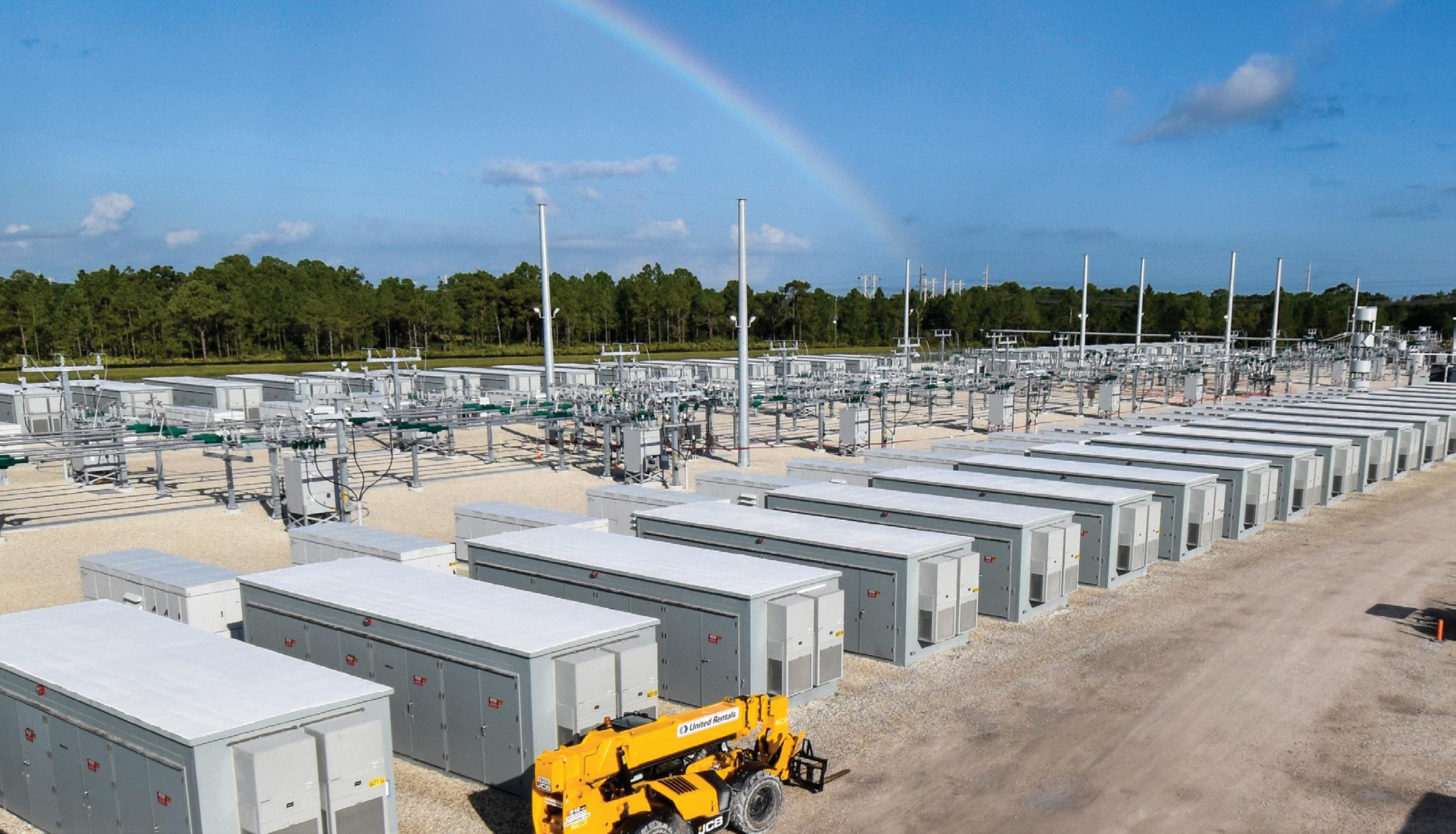
pull down the performance of adjacent strings. String-level sensor-based measurements from the BMS are necessary for these diagnostics.
State of charge also warrants special mention. SOC indicates a battery’s capacity to discharge, and for lithiumiron phosphate (LFP) chemistries, which are predominant

today, they can be notoriously difficult to estimate. Power Factors provides advanced diagnostics that help operators understand the accuracy of the native BMS SOC estimations, and we’re hoping to soon to have the capability of providing SOC estimations that are more accurate than those provided by the BMS itself.
Other important system indicators include state of health, round trip efficiency, cycle counts and depth of discharge.
How does O&M monitoring differ for BESS installed in New York vs. Arizona?
The most significant difference is probably their differing weather profiles. Arizona is generally hotter most of the year, while New York sees a lot more snow and cold weather.
For sites in Arizona, operators might focus more on failure signatures related to high temperature conditions and then tune their alarming thresholds accordingly. They might have more liquid- than air-cooled systems because they are more efficient, so they will have telemetry specific to those systems. And they may be more concerned with dust, so they may have a more frequent filter replacement regimen. In New York, they’re likely planning for severe cold weather and perhaps even hurricane or flooding conditions. They may be especially interested in telemetry and forecasts from specialized weather data providers.
It’s important to note here that many BESS have service obligations, such as reserve capacity agreements, that require them to support the grid precisely when these extreme weather events are happening, so owners and operators need to be especially prepared. This is also another reason why it’s so important to have confidence in your SOC levels.
On top of that, most revenue for BESS assets comes from just a fraction of the days in a year. It’s critical for an owner/operator to know which days those are likely to be and then plan maintenance accordingly. This will look different between Arizona and New York due to their contrasting market and weather dynamics. SPW
STORAGE TECHNOLOGY 34 SOLAR POWER WORLD MAY 2024
860-385-8877 .COM by TM railless Fastest installing Pre-assembled components Save money - go railless! Available patented slide-pin clamp
NextEra Energy


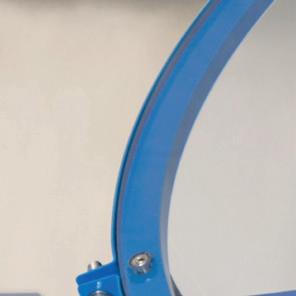
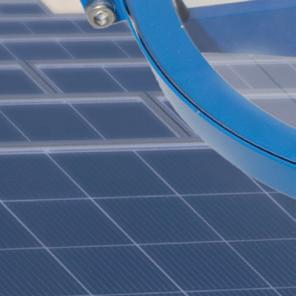



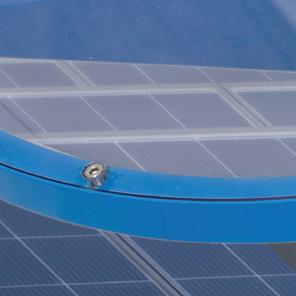
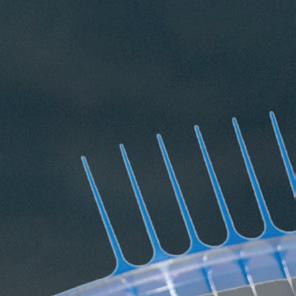
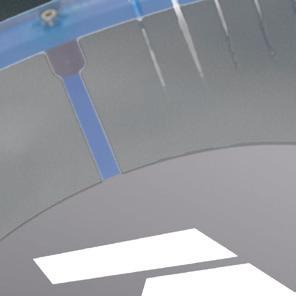

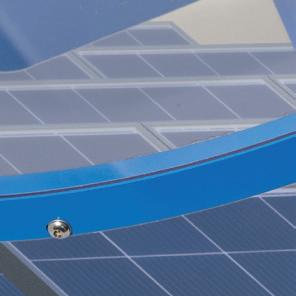


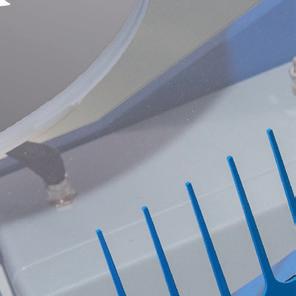
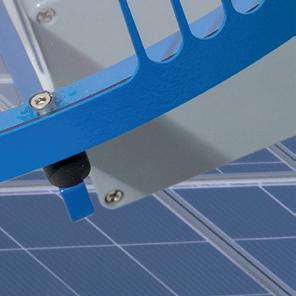

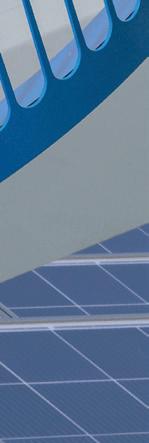
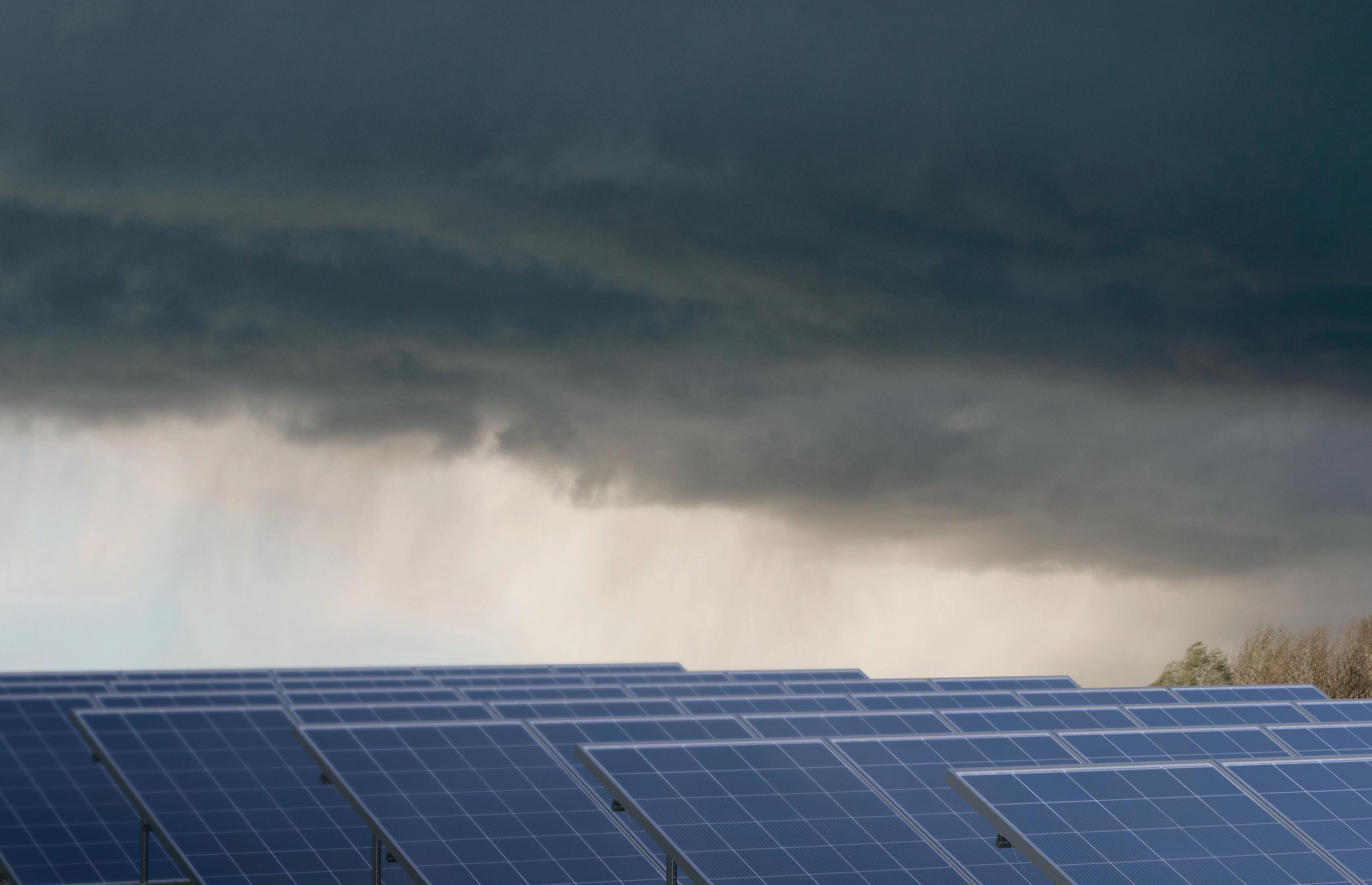

Contact us now: +1 512 993 1941 sales-hsa@kisters.net kisters.net/hailsens-iot
hail events. Protect solar assets. Quantify hail damage.
time measurement of hail size, intensity and distribution. Rapidly identify damage, minimize downtime, expedite insurance claims. HailSens IoT + 360 Forecast – your 24/7 sentinel. Visit us at RE+ Texas Booth 816
Forecast
Real
JULY 18-19, 2024
PHILADELPHIA, PA
Join conversations with industry buyers, suppliers, distributors, consultants, and more to explore solutions, exchange ideas, and discover new technologies within the industry.
REGISTER TODAY | RE-PLUS.EVENTS/MIDATLANTIC

US SOLAR MANUFACTURING STARTS UPHILL CLIMB
Incentives in the Inflation Reduction Act have encouraged more solar manufacturers to set up operations in the United States, whether through contract manufacturing or via their own brands. Announcing manufacturing plans is the easy part — now these ambitious panel, inverter and mounting companies have to actually build sites and hire thousands of Americans to make solar products. Solar Power World focuses this special section on the difficult journey the domestic solar market is just beginning on its path away from global import dependency.
37 SOLAR POWER WORLD MAY 2024 www. solarpowerworldonline .com
2024 MANUFACTURING NEWS ITEMS
New solar panel manufacturing sites that have begun production in 2024: Canadian Solar (Texas), LONGi (Ohio), Qcells (Georgia), Sirius PV (Texas).
Heliene is the first U.S. silicon solar panel manufacturer to secure a supply of American-made cells after signing a three-year supply contract with Suniva.
Suniva is restarting its cell manufacturing factory in Georgia and expects to produce 1 GW of cells each year. Heliene currently operates a similar-sized panel factory in Minnesota.
Array Technologies broke ground on its second manufacturing plant in Albuquerque, New Mexico. The company has worked in ABQ for over 30 years and expects to hire 300 new workers to produce, assemble and design solar tracker components when the factory is complete.
$344 MILLION
3,000
Amphenol’s new solar panel junction box factory is now operational in Mesa, Arizona. The first line produces approximately American-made junction boxes each day. Two more lines are being added, and the facility can accommodate at least a dozen lines to support a full annual capacity of around 4.8 GW of junction boxes.
LG Energy Solution has begun construction on two battery factories in Arizona — one making EV batteries and the other producing LFP batteries for stand-alone energy storage systems. The ESS factory will eventually reach 17 GWh of annual production by its opening in 2026, making it the largest ESS factory in the United States.
JA Solar has been approved to work within Phoenix’s Foreign Trade Zone (FTZ). The company is building a
2-GW solar panel assembly facility
in Arizona and will take advantage of the various tax benefits of working in an FTZ. A federal board is also currently reviewing an application from Trina Solar, which is trying to get its 5-GW solar panel assembly plant in Texas approved to work within the Dallas/Fort Worth Airport FTZ.
Solar panel recycling outfit SolarCycle announced it would spend on a solar glass manufacturing facility in Georgia. The company will use recycled materials from retired solar panels to make new glass. Panel manufacturer Silfab, which has an assembly plant in Washington and is building a cell and panel factory in South Carolina, has signed an agreement with SolarCycle to purchase domestically made solar glass.
Enphase decided to halt its microinverter manufacturing operations at a contract manufacturer in Wisconsin, instead shifting its full U.S. manufacturing capability to its two facilities in South Carolina and Texas. Enphase has a worldwide manufacturing capacity of per quarter, of which 5 million are established in the United States. The company hopes to begin manufacturing its energy storage products at the Texas plant later this year.
7 MILLION UNITS
MANUFACTURING UPDATE 38 SOLAR POWER WORLD MAY 2024 www. solarpowerworldonline .com
Welcome to Texas: The new Solar Valley
The state is opening its arms to solar manufacturers, but will they find success?
By Kelly Pickerel
Perhaps capitalizing on the recognized technological prowess of “Silicon Valley,” an industrial area in eastern Germany dubbed itself “Solar Valley” in the early 2000s after several solar manufacturers employed thousands just off main road Sonnenallee (“Sun Avenue”). Two decades later, Solar Valley in Thalheim, Germany, has lost its desirability, with companies leaving the area just as quickly as they set up. Now, a new Solar Valley is forming in a surprising place — the largest oil and gas hub in the Western Hemisphere.
The United States has become an attractive place recently for solar manufacturing, thanks to the Inflation Reduction Act. But no state has seen more manufacturing activity than oilrich Texas. Take your pick — Dallas, Houston or along the road in between — more inverter, mounting system and solar panel manufacturers are headed to the Lone Star State. Lured by favorable tax advantages and plenty of open space for huge factories, solar companies are taking a chance on Texas. But will they succeed?
Why Texas?
A red state with fossil fuel interests isn’t the first place one would think to find the new solar hotspot, but Texas offers businesses several good reasons to set up manufacturing bases within its borders, including sales tax exemptions for manufacturing equipment and no corporate or personal income tax. The state also offers solar manufacturers specifically an exemption from franchise taxes. Add a civilian workforce of more than 15 million that is among the youngest in the nation and Texas appears to be the best place to set up solar manufacturing operations.
According to Solar Power World data, the state boasts 10
solar panel manufacturers (four operating, six announced), three inverter manufacturers (two operating, one announced) and six mounting manufacturers (five operating, one announced). Houston will soon be the most concentrated area in the United States for solar panel manufacturing, with at least four companies expecting to begin panel assembly in the next year, employing nearly 3,000 people.
Sirius PV is one of those companies. The panel manufacturer, supported by Elin Energy in Turkey, is outfitting a 250,000-ft2 factory in Brookshire that will have a 2-GW annual capacity. Sirius ultimately wants three shifts of workers, but is finding the onboarding process more difficult than expected.
“We are trying very hard to find the right people, but it’s not easy. It’s been a challenge in Texas, and we were not expecting this,” said Ercan Kalafat,
Sirius PV CEO. “We can overcome the challenge because we have tools for that, but we were hoping it would be easier.”
Sirius brought in experienced workers from its Turkish factories to train new hires in Houston. Due to the lengthy education process, the company is operating one shift currently and expects its second shift to be fully trained by the end of Q2. Kalafat said the biggest obstacle is the lack of experience in solar manufacturing in the area. While Texas is well-versed in advanced technology manufacturing, even an automated solar panel assembly plant requires specific skills.
“I’m not saying solar manufacturing didn’t exist, but it was very limited [in the United States]. There is no ecosystem where you have people who know this job,” he said. “Can we adapt from other manufacturing? Yeah. But it’s a very specific job to be a stringer

MANUFACTURING UPDATE 39 SOLAR POWER WORLD MAY 2024 www. solarpowerworldonline .com
OPERATING ANNOUNCED

operator or a laminator operator. Once we are fully ramped up, this will be a 500-person operation. We have to take care of this now so we can have that many talented people in the future.”
Canadian Solar is building a 5-GW panel assembly factory in Mesquite, a suburb of Dallas. Thomas Koerner, corporate senior VP at Canadian Solar, said the company has found a strong labor pool in the area but acknowledges the benefit of having an established global manufacturing footprint. Like Sirius PV, Canadian Solar is leaning on employees from its existing factories to train the American workforce.
“We’re the most internationalproducing manufacturer, so we know how to make it work,” Koerner said. “We can send [new workers] to Thailand, train them there for two to eight weeks, and then bring them back and be the trainers [in the United States].”
Canadian Solar expects to employ 1,500 people at its 753,000-ft2 factory
and posts new job openings online every day. The company has shipped its first American-assembled panels but will only function as the country’s largest silicon solar panel manufacturer if it fills every open position.
Community support
According to the 2023 Solar Jobs Census, solar manufacturing employment reached 33,473 jobs in 2022, representing 13% of total solar jobs in the United States. A survey
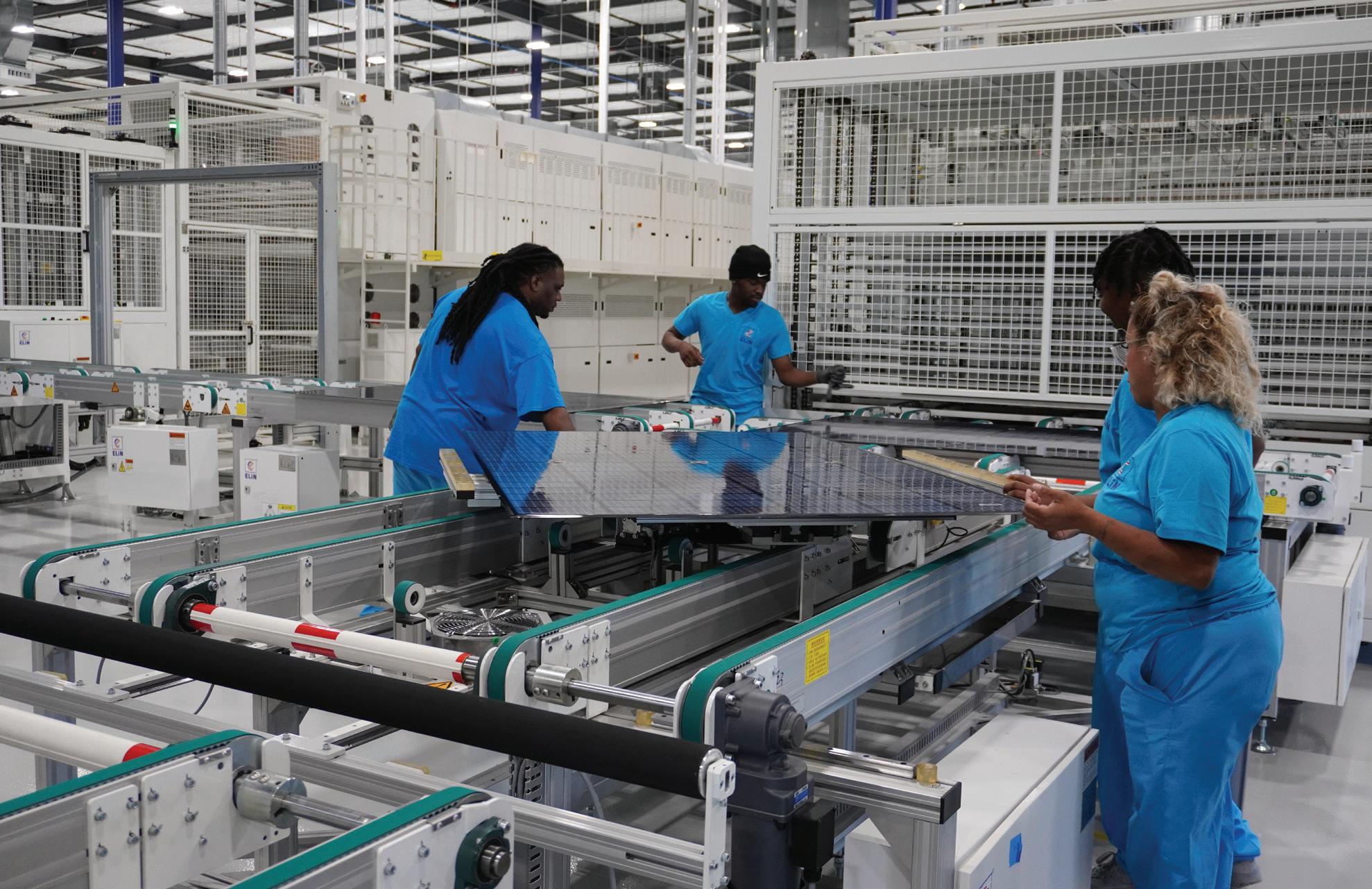
MANUFACTURING UPDATE 40 SOLAR POWER WORLD MAY 2024 www. solarpowerworldonline .com
Paso Corpus Christi San Antonio Austin Waco S-5! Nevados Nextracker Mission Solar GAF Energy Array Technologies Canadian Solar Enphase Dallas Trina Solar Panasol
Amarillo El
PV Houston
Sirius
& Terre Imperial Star Solar Power Electronics PVH SEG Solar Sirius PV Thornova TMEIC Waaree Houston Expanded
Ciel
MANUFACTURING
of respondents revealed that 73% of manufacturing employers were finding it difficult to hire qualified workers — and that was before the IRA boom of announced manufacturers.
While much recent attention has been placed on developing job training for the installation sector, there are still thousands of workers needed in manufacturing. Community organizations across Texas have been assisting that effort.
Project QUEST, a nonprofit that connects adults to in-demand, livingwage employment training, has served the San Antonio area since 1992, and its model has been adopted throughout the state and into surrounding areas. Francisco Martinez, Project QUEST president and CEO, said the nonprofit doesn’t provide any training but instead acts as a bridge between local citizens and the workforce in need of laborers.
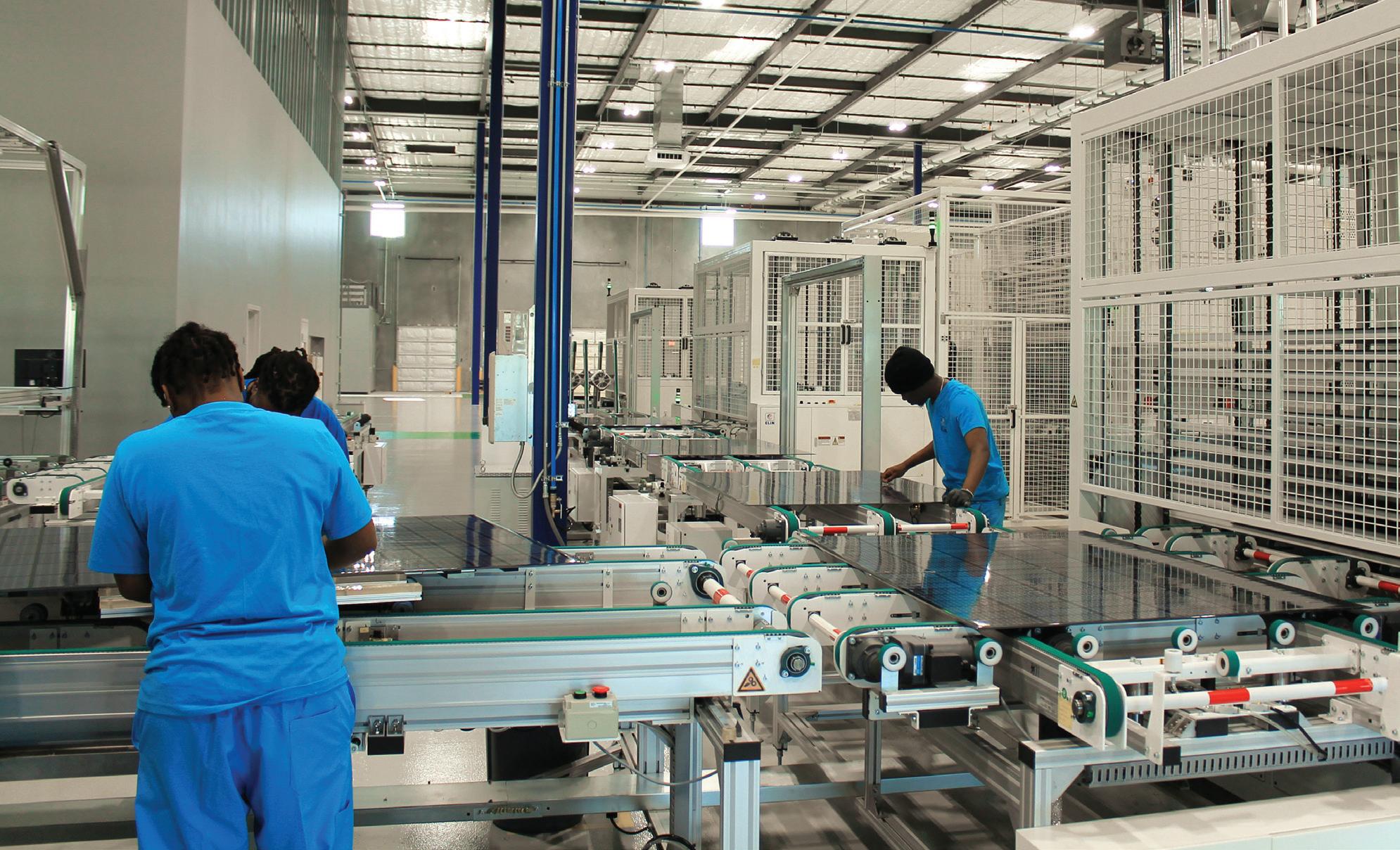
“Over the years, the definition has changed of which career tracks in which areas, but recently, there’s been a big push for advanced manufacturing, and
our partnership with clean jobs has been growing,” he said.
Project QUEST is working with OCI Solar Power to increase solar job
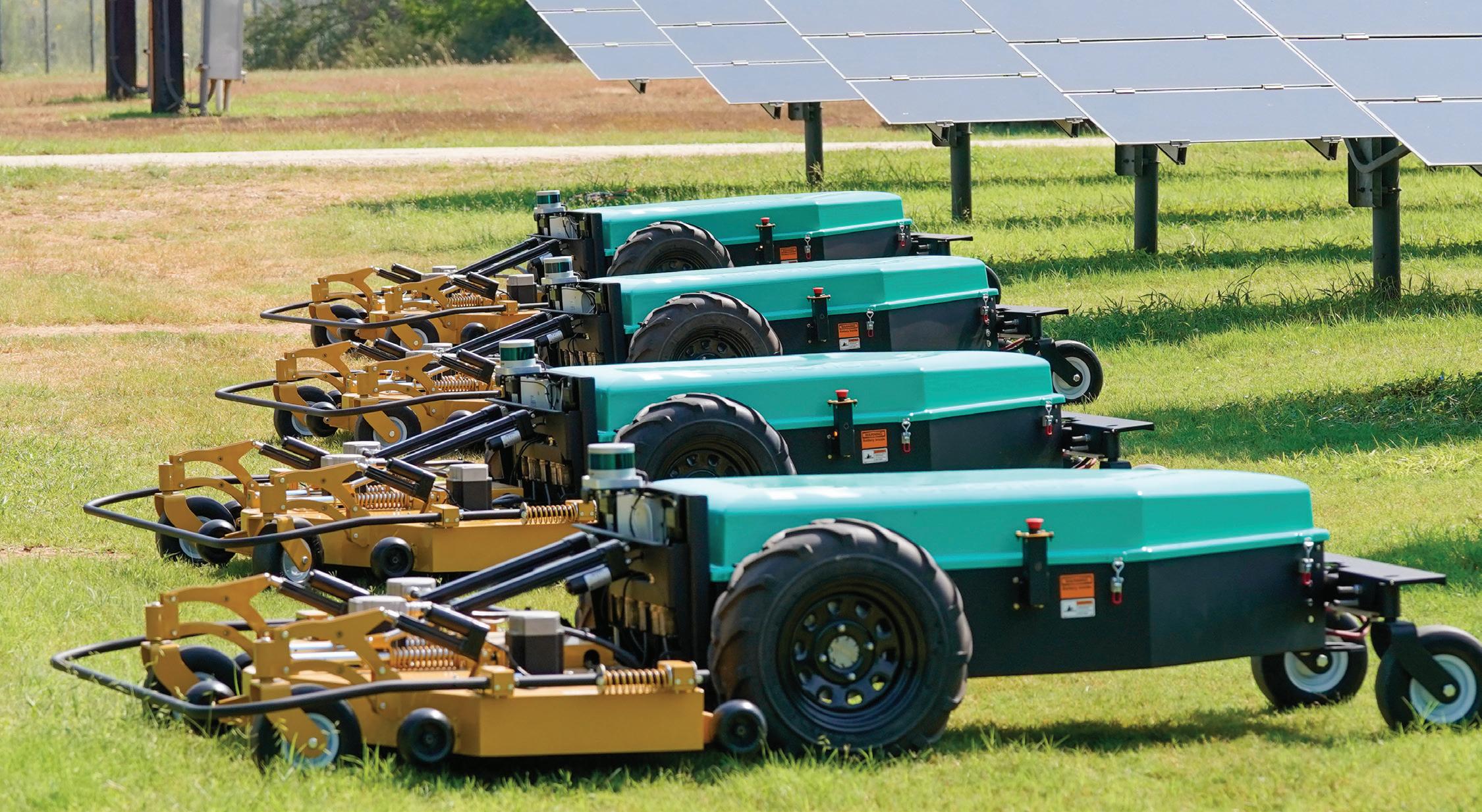
A MOWING CREW
A MACHINE THAT WORKS LIKE

UPDATE
WWW.RENUBOT.COM
Sirius PV
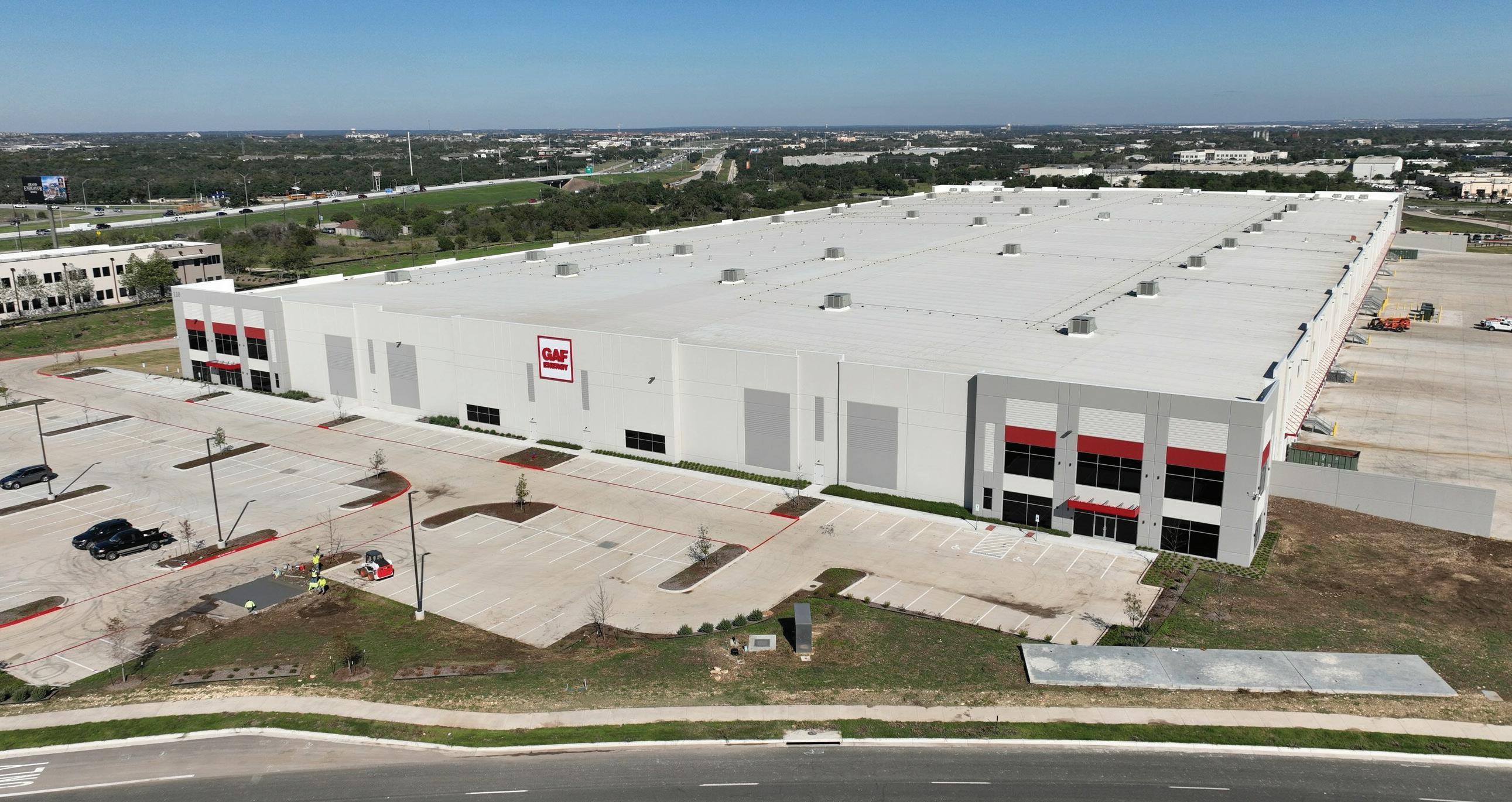
training through St. Philip’s College in San Antonio. OCI and its companies, including panel manufacturer Mission Solar Energy, have committed $500,000 over three years to the college to support students going through the solar training program.
“We’re optimistic to develop and continue to grow that field,” Martinez said. “We’ve been in advanced manufacturing and other trades before, but nothing as unique as this solar opportunity.”
He said there’s often a struggle to get individuals to recognize careers in new fields because they weren’t exposed to those job opportunities when growing up.
“We try to make sure that those folks who may be a good fit for these programs have an entryway and access to those career training opportunities,” Martinez said. “Many folks may not know about solar jobs, so in partnership with OCI and St. Philip’s, we do our best in educating individuals about the career field. They’re pioneers in
the sense that no one in their family has done this before. There isn’t that second-generation solar professional. We provide those support services to motivate them and encourage them to continue to persist.”
GAF Energy, which opened its 250-MW capacity solar shingle manufacturing facility a half-hour outside of Austin in late 2023, is training first-generation solar professionals in even more unique job skills. Timberline Solar shingles are one row of halfcut solar cells laminated onto TPO roofing material that are nailed to a roof when installed. GAF products include traditional solar manufacturing tasks, like stringing, laminating and flash-testing, but adding the roofing materials required extra training for new employees at the Georgetown plant.
“We’ve added a significantly higher amount of robotics and automation to what we do, since we have operations that just don’t exist in standard panel manufacturing,” said Ralph Robinett, senior VP of manufacturing and supply
chain for GAF Energy. “There’s not a lot of solar-experienced people, and that was really heavy in our decision-making for why we’re located in Austin — just looking at similar industries that we can draw talent from and then supplement with our own knowledge.”
Robinett said GAF Energy has been focusing most of its recruiting efforts on military servicemembers transitioning back to civilian life at nearby Fort Cavazos (formerly Fort Hood).
“The city has provided some incentives around job creation that help with development,” he said. “We do job fairs for transitioning military. We’re focusing on that scope, having people familiar with the rigors of a 6 a.m. to 6 p.m. workday, and a lot of background with maintenance and machinery operation.”
GAF Energy is adding shifts as more people are trained and is currently operating on a seven-day schedule with over 100 employees. The company first sent new hires to its original solar shingle factory in Silicon Valley for
MANUFACTURING UPDATE 42 SOLAR POWER WORLD MAY 2024 www. solarpowerworldonline .com
GAF Energy
training, and now it has an experienced training team that comes to Texas to get new shifts running. Robinett said GAF Energy has no regrets setting up its second manufacturing plant in Texas.
“Georgetown has been a really welcoming community and a collaborative city government. We have conversations about how we’re going to work together to benefit everyone,” he said. “That collaboration is really strong in Texas.”
It’s a new era for both solar jobs in the United States and manufacturing career opportunities in Texas. Martinez with Project QUEST said local communities are ready to lead the way.
“That’s where QUEST comes in, with the opportunity to level the playing field and make sure the true population demographics of our community that have historically been underserved or under-resourced have the same access and ability to enter the workforce in these new, innovative career fields,” he said. “There’s an understanding that the future is coming, and it’s coming fast. Either you’re going to see it pass you by or you’re going to be a part of it.” SPW

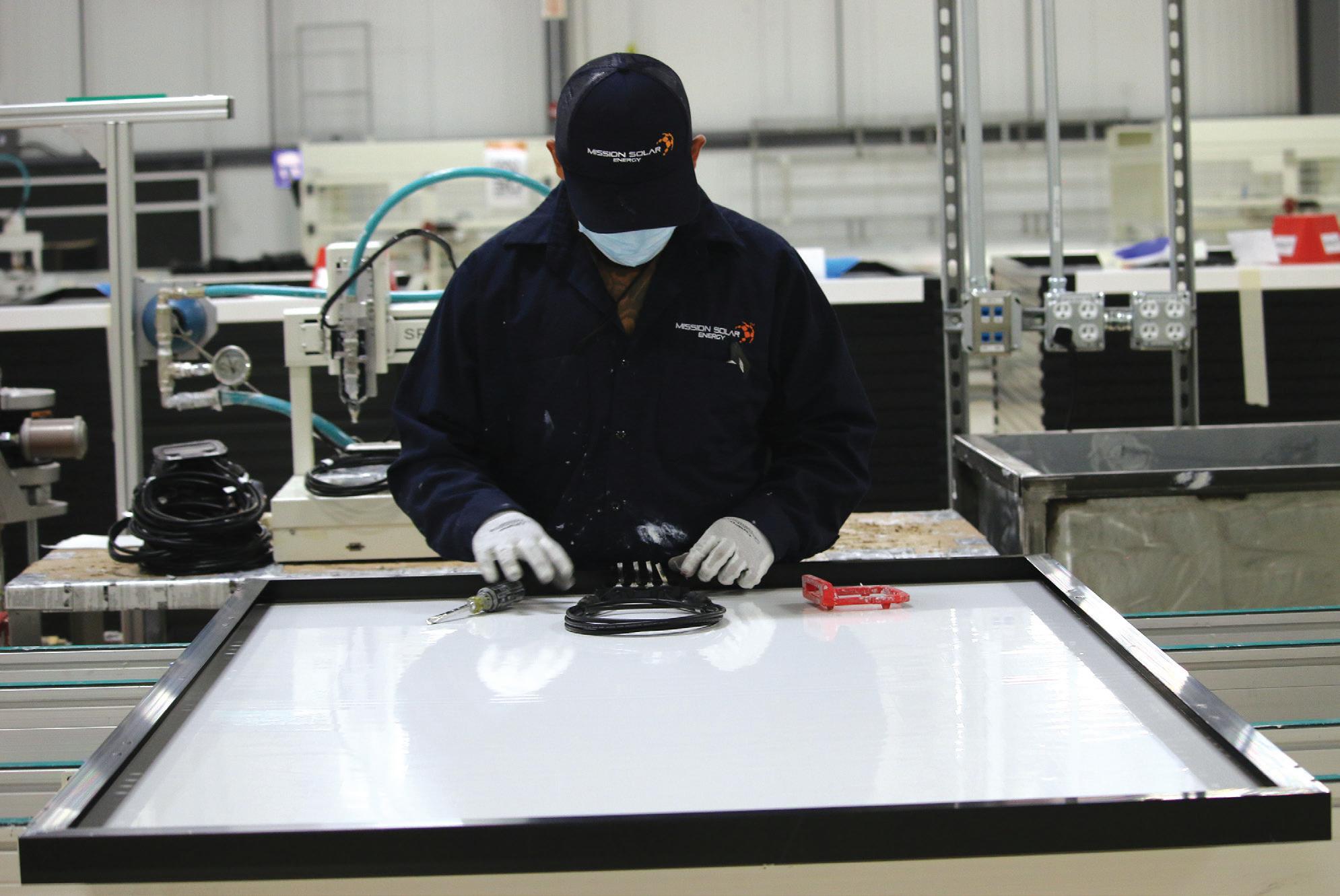

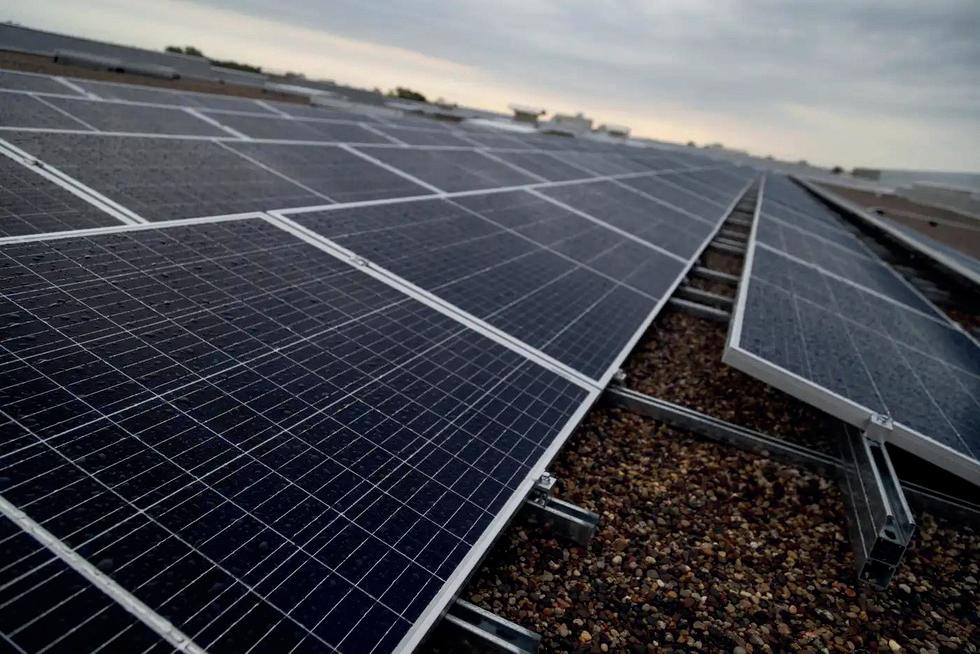
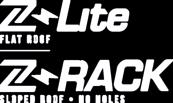


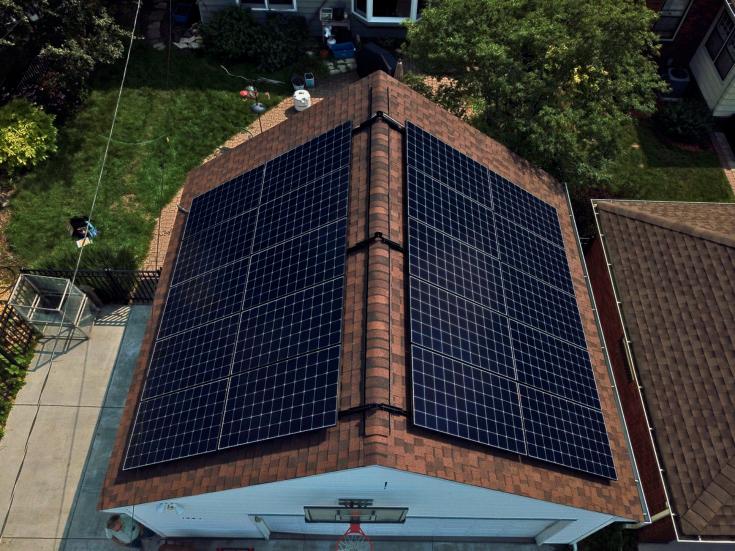


MAY 2024 MAKERS OF Z-RACK BENEFITS Zero Penetrations Roof Agnostic Reduce Install Time No Fossil Fuels UL2703 Listed Wind and seismic tested to ASCE CONTACT US 763.404.7580 sales@mysolarpod.com www.mysolarpod.com www.zsolarsolutions.com E474752
MANUFACTURING UPDATE
See SPW 's coverage of domestic manufacturing updates online!
Mission Solar
Contract manufacturing makes production possible for some solar hardware
By Billy Ludt
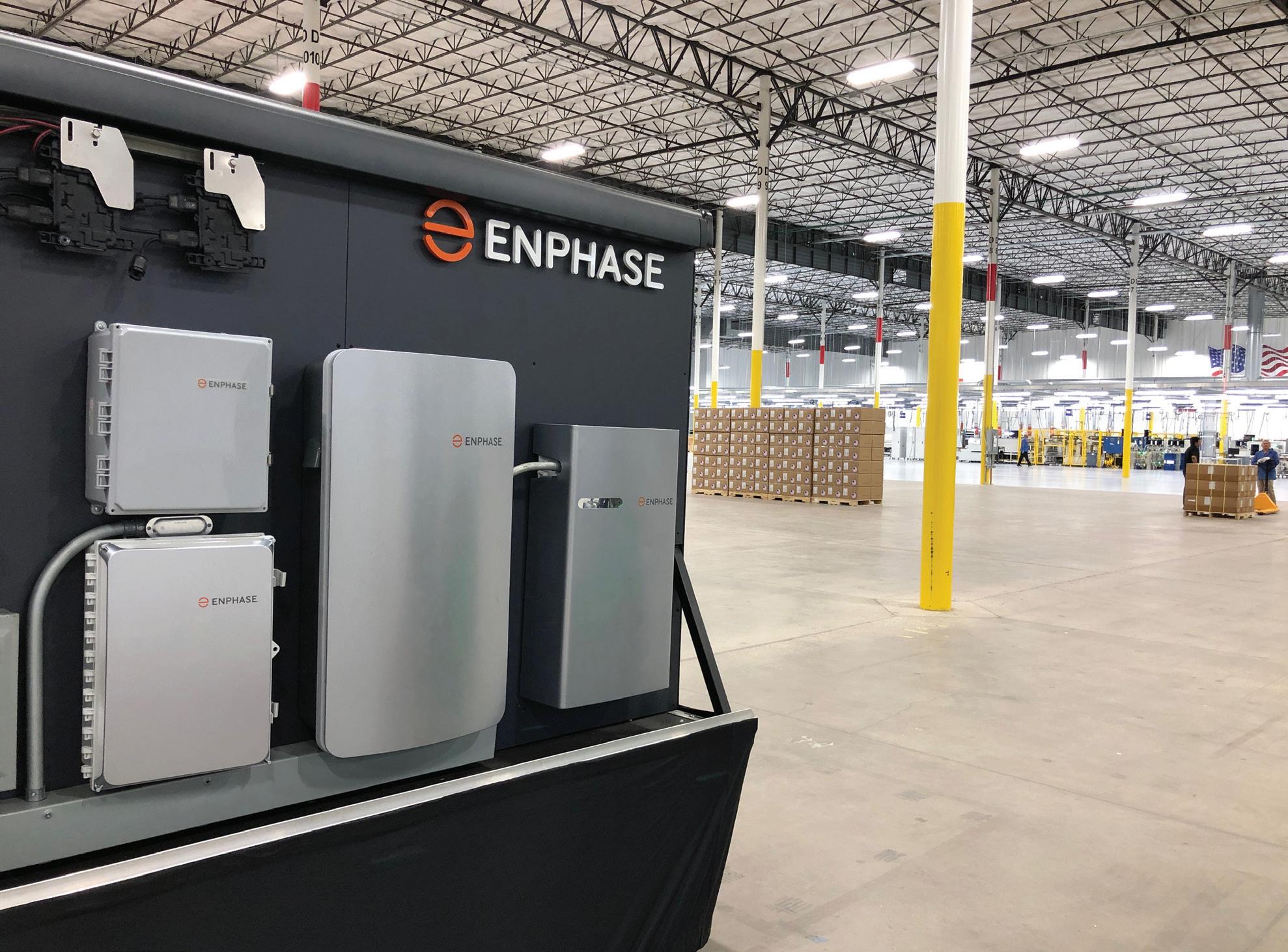
Domestic solar manufacturing is seeing an unprecedented boom as the industry reaps the tax benefits of the Inflation Reduction Act. To meet the demands of electrifying and decarbonizing the American grid with products made within its borders, companies are expanding operations in the United States.
However, not every solar company producing hardware has the knowhow, staff or facilities for inhouse manufacturing at scale. To make products without expanding operational bandwidth, companies can work with contract manufacturers — specialized third-party fabricators that produce components to the specifications of the originating company.
Contract manufacturing arrangements vary by a company’s needs. They can be short-term, or in the case of many solar companies, they can start entire factories or new
manufacturing lines dedicated to producing individual pieces or whole products.
“As a technology company, you’re best at developing technology, proving that the technology works,” said Raghu Belur, co-founder and CPO of Enphase. “Manufacturers, contract manufacturers in particular, are very good at contract manufacturing; that’s their role, their own skills. You’re bringing two best-inclass functions together.”
Enphase develops its advanced microinverter technology at its Silicon Valley headquarters while leaning on contract manufacturing relationships in Asia and throughout the United States to make its products. The company has designed its microinverters to be simple to manufacture, with operating systems placed on a single printed circuit board. Accessory components are mounted to the board using an automated “pick and place” method.
Working with a contract manufacturer frees a company to instead focus on fine-tuning and advancing its products. Upfront capital expenditures when working with contract manufacturers are smaller than starting a whole factory. Plus, factories run by contract manufacturers are often outfitted with automated manufacturing lines, cutting down on labor costs.
Belur said Enphase works with a few contract manufacturers across the globe to better serve its local customer bases. Multiple manufacturing locations also allow factories to expand capacity when needed. Belur said Enphase’s contract manufacturers have been able to add new manufacturing lines or factories in six to 12 months.
“It’s really important for us from the standpoint of how you service your customers,” he said.
Citing fluctuations in market demand, Enphase recently halted operations at a Romanian plant and shifted capacity from Wisconsin to other locations in the United States. The company still has contract manufacturing arrangements with Flex in West Columbia, South Carolina, and Salcomp in Arlington, Texas. Enphase was able to adapt to the market and continue production because of its contract manufacturer setups. No Enphase-branded factories were closed.
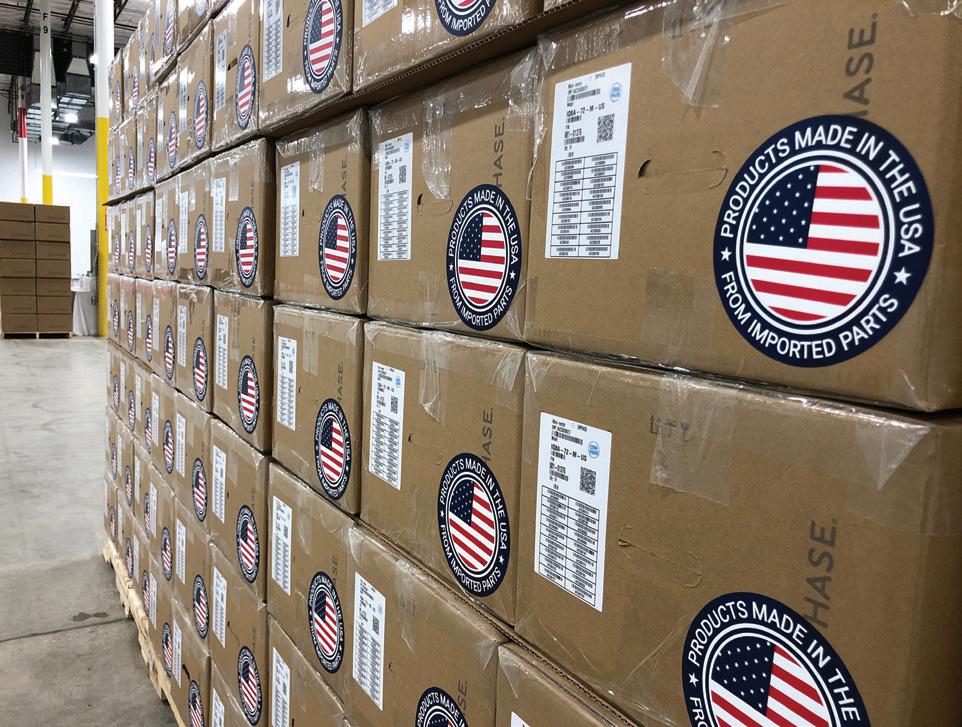
MANUFACTURING UPDATE 44 SOLAR POWER WORLD MAY 2024 www. solarpowerworldonline .com
Enphase
Enphase
MANUFACTURING UPDATE
Growing with a contract manufacturer Nevados of Oakland, California, produces the All Terrain Tracker, a solar tracking system capable of installing on difficult topographies. Initially, Nevados had production arrangements with thirdparty companies that would outsource manufacturing services to other international factories. The company had to station inspectors in those factories to ensure the tracker components were produced to its standards and contend with meeting the demands of its clientele on an international supply chain.
Even before the IRA incentives, Nevados was considering moving tracker production to the United States to increase the reliability of its supply chain. In November 2023, the company partnered with Priefert Steel on a new production line at a factory in Mt. Pleasant, Texas. It wasn’t a hard choice for Nevados to opt for a contract manufacturer arrangement.
“It’s very simple — I’m not a manufacturer,” said Scott Troy, VP of operations and global supply chain at Nevados.
Priefert is a third-generation steel fabricator that has historically served the agricultural industry. Troy purchased tracker torque tubes from Priefert on his first solar project with Nevados.
Today, Priefert is fabricating torque tubes, brackets, cradles, mechanical assemblies and bearings for Nevados’ All Terrain Tracker. The manufacturer maintains several tube rolling lines, one of which is dedicated to Nevados trackers.
“There are manufacturers, such as Priefert, who’ve been around for 63 years, who have been successful in manufacturing,” Troy said. “They have all the tooling, they have all the machines, they have the space, they have the relationships with the mills to buy the material. They also have a full manufacturing engineering staff that I don’t have.”
Mt. Pleasant, where the factory is located, has a population of just over 16,000 people. When the Nevados line
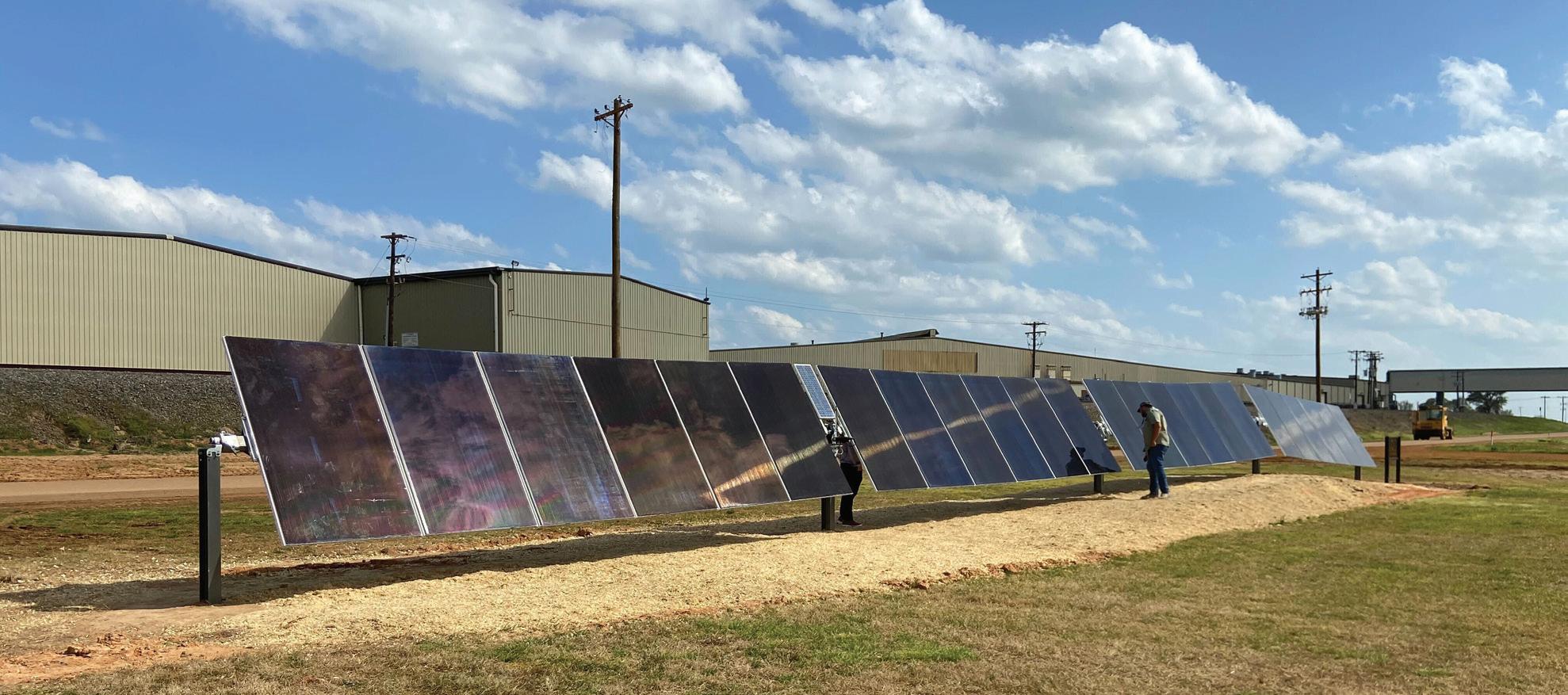
opened, Priefert employed about 900 people, 100 of which make Nevados tracker components.
Working with steel for this long and understanding the tenets of assembly, Troy said Priefert has helped redesign certain elements of All Terrain Tracker to make it simpler to manufacture. Priefert sources steel from the state’s many suppliers, and when components are ready for field deployment, they can be shipped from Texas to anywhere in the country in three to four days.
“I did not need to go to Priefert and say, ‘change your business model for Nevados,’” Troy said. “We were able to go to them and say, ‘here’s an opportunity to grow together, which has mutual benefit.’ They can expand their operations, they can create more jobs, they can obviously have more revenue. But at the end of the day, it was all about expanding.”
How tax credits work with contract manufacturing
While many solar companies have stated interest in bringing production to the United States, the manufacturing tax credits within the IRA have been a catalyst for driving domestic solar production.
The advanced manufacturing production credit (section 45X) provides manufacturers with a tax credit for producing components related to solar module, inverter, battery/energy storage and tracker technologies. However, in a contract manufacturing scenario, who can claim these tax credits?
Section 45X states that the actual producer of eligible solar products is the entity to receive the tax credit, but solar hardware companies typically enter into agreements with the contract manufacturers to share those credits.
Nevados has such an agreement with its partner Priefert. Troy said both companies are eligible, but only one may claim 45X. Nevados negotiates and splits that tax credit with the contract manufacturer after it has been claimed to benefit both parties.
“In my opinion, some of that tax credit should go back to the people who are doing the work — the hardworking individuals that are actually investing into this — so they can improve their factories, so they can improve their work-life balance for their employees, so that they can create a great environment for their employees to work,” Troy said.
These investments into domestic solar production through contract manufacturing will likely continue. Since the IRA passed, Nextracker has opened torque tube production lines for singleaxis trackers with contract manufacturers in five states, with another set to open in April. This summer, Siemens will start rolling string inverters off a production line in Kenosha, Wisconsin, through manufacturing partner Sanmina. Contract manufacturing arrangements like these help boost Americanmade solar tech and give installers more options for collecting their own domestic tax incentives. SPW
45 SOLAR POWER WORLD MAY 2024 www. solarpowerworldonline .com
Nevados
Bombard Electric
Electrical contractor and solar developer rides wave of large-scale energy storage growth.
Utility-scale solar is experiencing a particularly exciting boom lately, with SEIA reporting an increase of 22.5 GWDC of capacity in 2023, a 77% increase over the year before. Installation companies are capitalizing on this growth, bolstered by supportive federal policy and innovative technological developments.
Bombard Electric is a Las Vegasbased full-service electrical contractor with expertise in utility-scale solar and battery energy storage. The company currently has over 600 MW of solar installed in Nevada.
In this edition of our Contractor’s Corner series, we talk to Cliff Brooks, solar division manager at Bombard Electric, about how technology is improving installations, the role of energy storage and recent developments in utility-scale solar.
How does your company stand out from competitors?
Bombard Electric has had a renewable energy division since 2004 and is a proud International Brotherhood of Electrical Workers (IBEW) union contractor. The fact that we utilize IBEW labor for all of our renewable installations and have been doing it since 2004 separates us from most of our competitors.
How has the Inflation Reduction Act (IRA) changed your business?
The passing of the IRA has leveled the playing field and allowed Bombard Electric and other union organizations to have a larger presence in the utilityscale solar/BESS sector as well as the utilization of higher apprentice-tojourneyman ratios.
What’s one way you’ve cut soft costs at your company?
Our continual effort in safety has reduced some of our soft costs such as insurance premiums and out-ofpocket expenses associated with safety incidents and accidents. We have also utilized pre-fabrication processes that allow us to pre-build certain assemblies in a climate-controlled environment, then ship said assemblies to the project.
What solar technology improvement has made installations easier or better?
Although solar technology has come a long way, I believe that improvements in solar design software have been the most valuable improvement to our field. Some of today’s solar design software include things such as light detection and ranging (LIDAR), string configuration
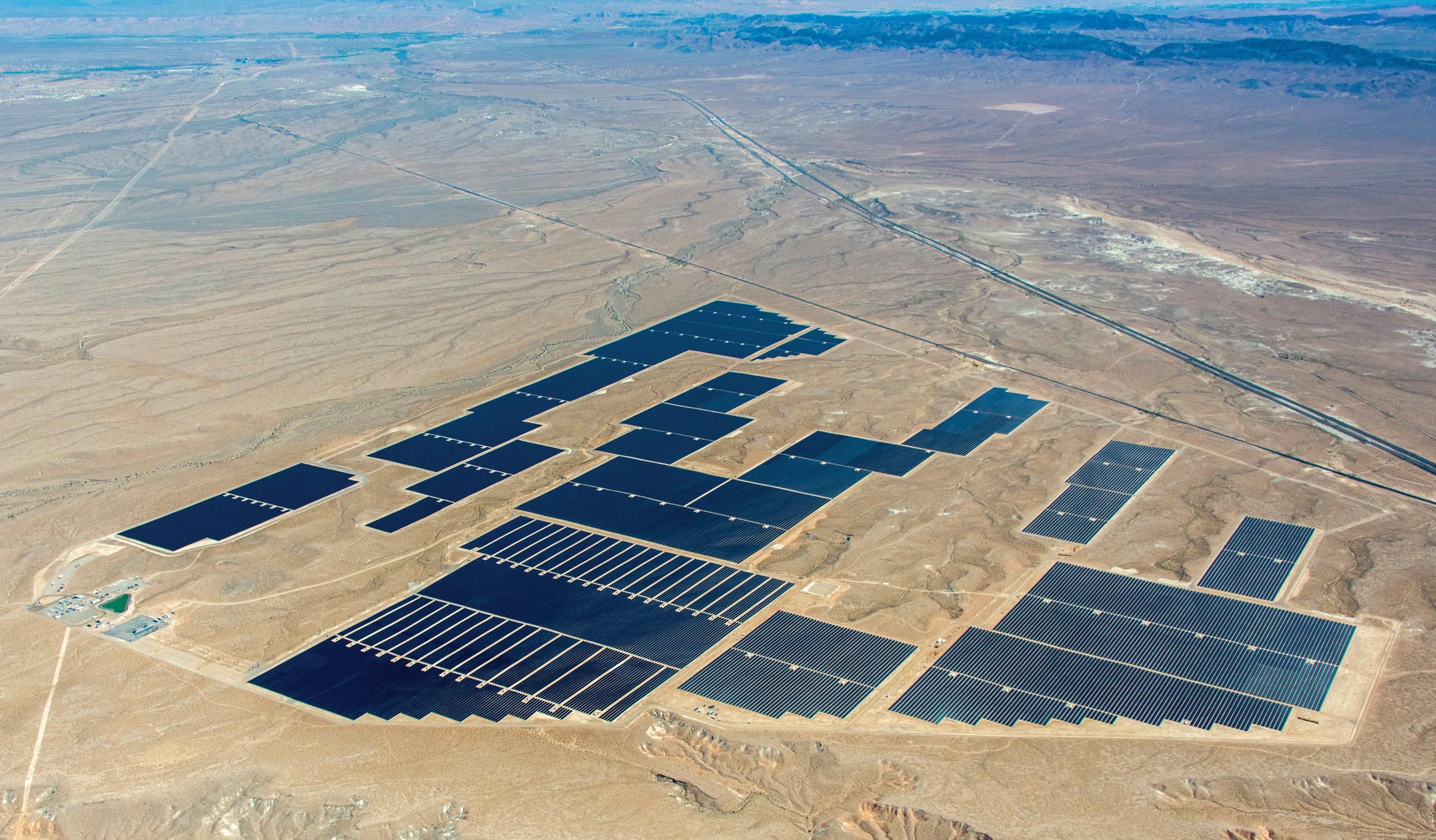
CONTRACTOR'S CORNER
46 SOLAR POWER WORLD MAY 2024 www. solarpowerworldonline .com SARA CARBONE • FREELANCE CONTRIBUTOR
assistance and detailed shading analysis allowing for better production expectations and more accurate solar designs.
How have recent changes in utility-scale solar impacted your business?
Outside of the IRA, I believe the most recent change we see from old to new utility-scale projects is the addition of BESS systems being a key component of the projects. The BESS element of the solar projects allows companies like Bombard Electric to expand our work portfolio and make affordable peak demand energy possible for all the power consumers in Nevada.
What’s your view of the future of the U.S. utility-scale solar sector?
The utility-scale sector in the United States is only going to expand. As more coal powered power plants are decommissioned and natural gas continues to hit all-time highs, the need for an alternative form of energy for the masses must be available. SPW
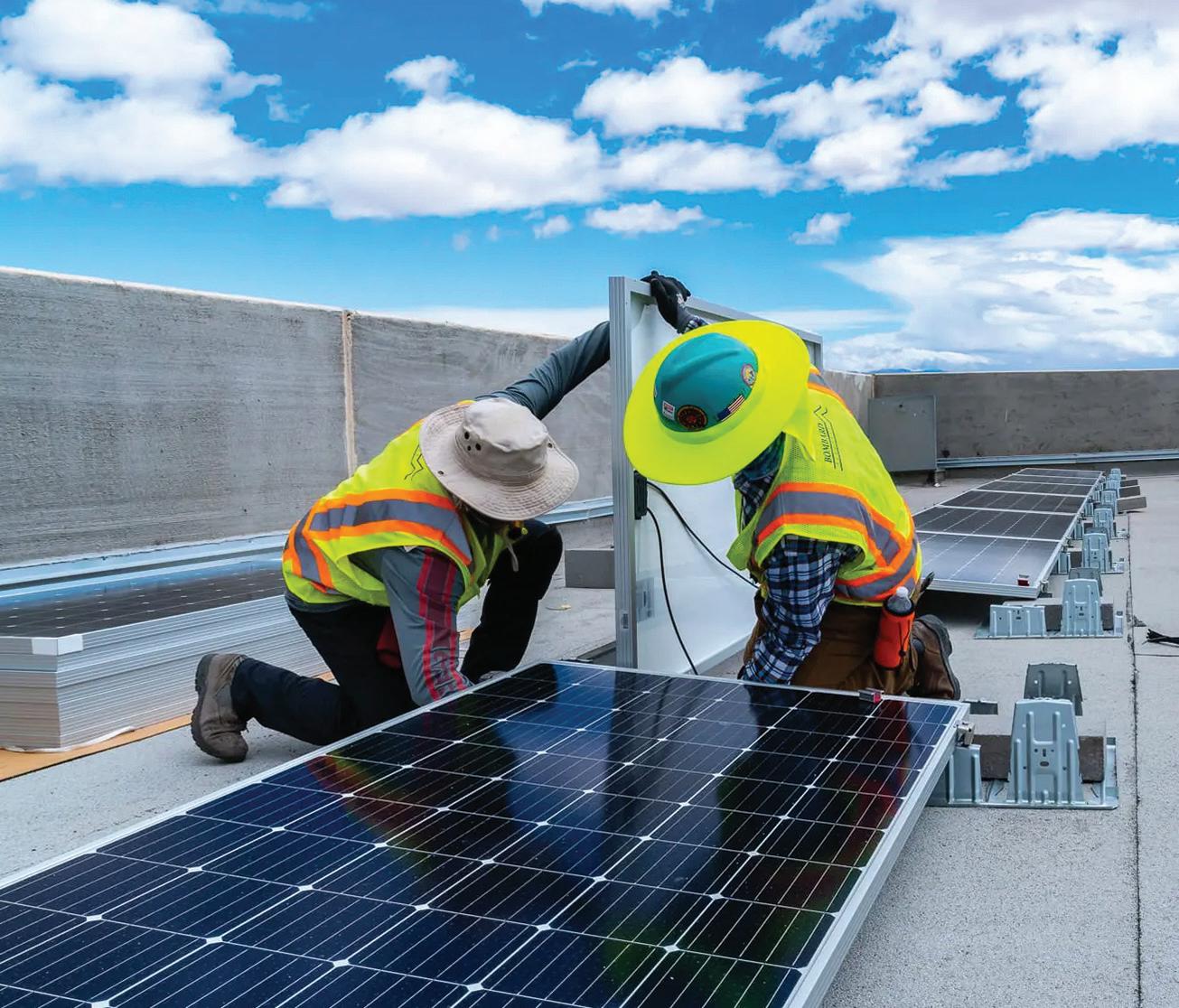
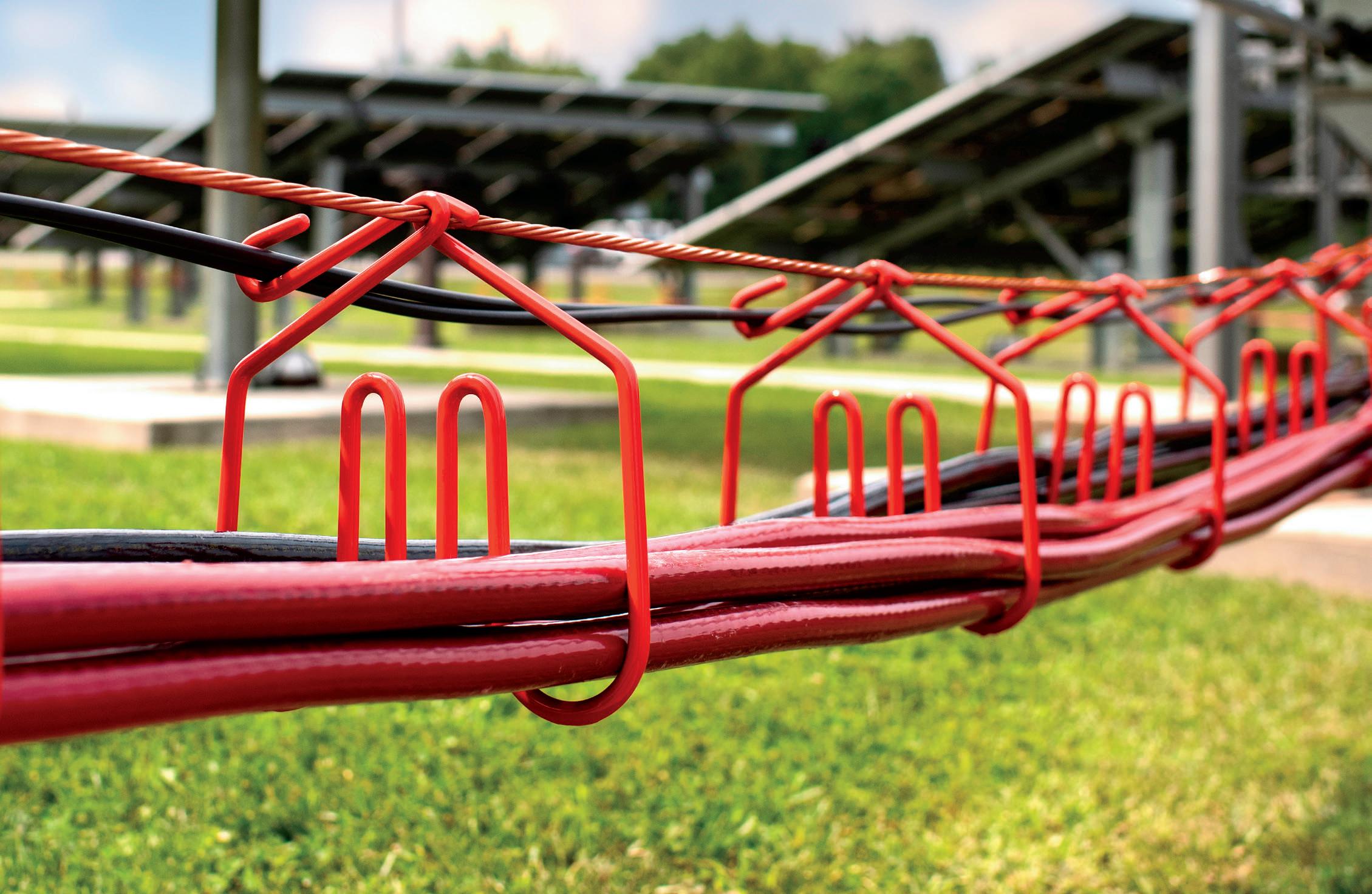

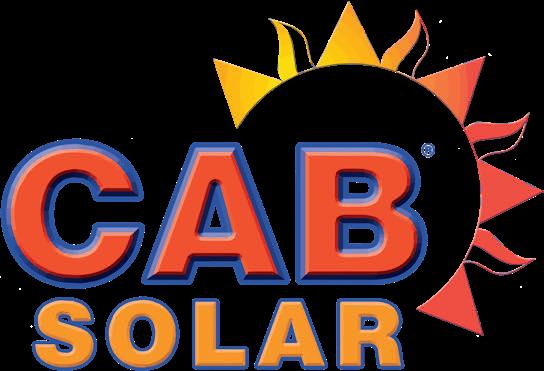
CONTRACTOR'S CORNER
The Patented Above-Ground Cable Management System with Integrated Grounding. www.cabsolar.com Patent Protected: www.cabproducts.com/patents


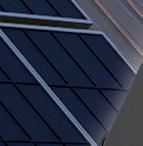








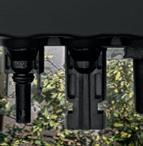





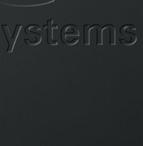

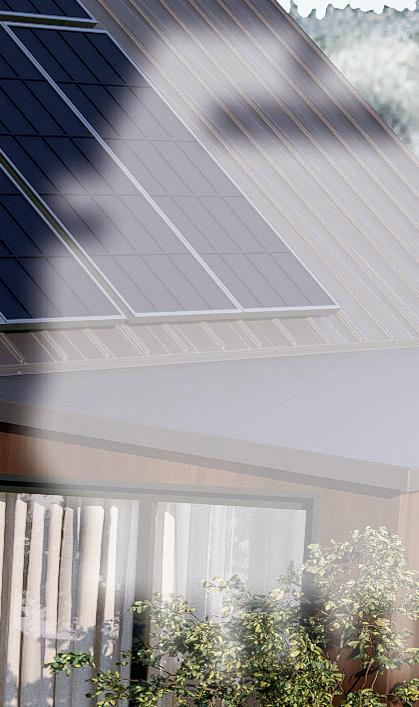
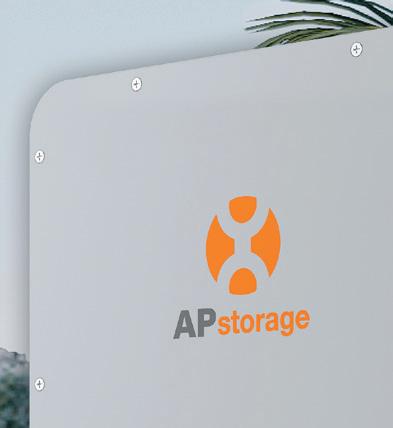













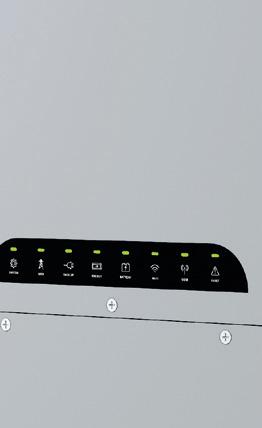

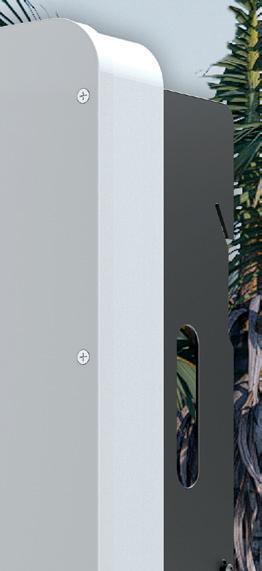



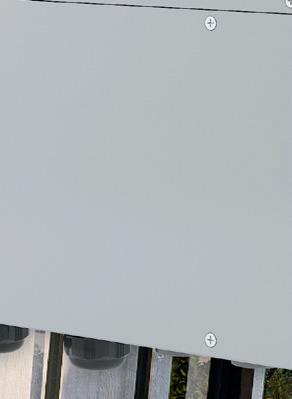

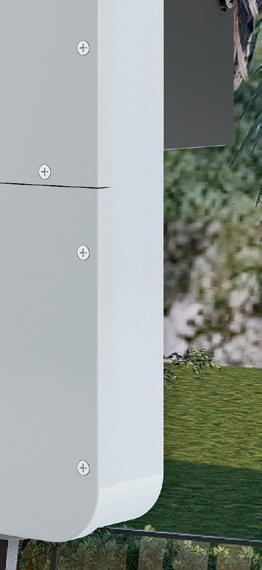



WHOLE HOME ELECTRIFICATION

We chose APsystems because of their top notch product support, design and engineering support along with a tried and true product.”
Eric Hinckley,
Sustainable Living Innovations

H LEADING THE C RGE
APsystems products are powering more than 10 million solar panels around the world
1ST M3
The original multi-module microinverter manufacturer

Entire system offering: microinverters and energy storage


Maximized power output for system owners





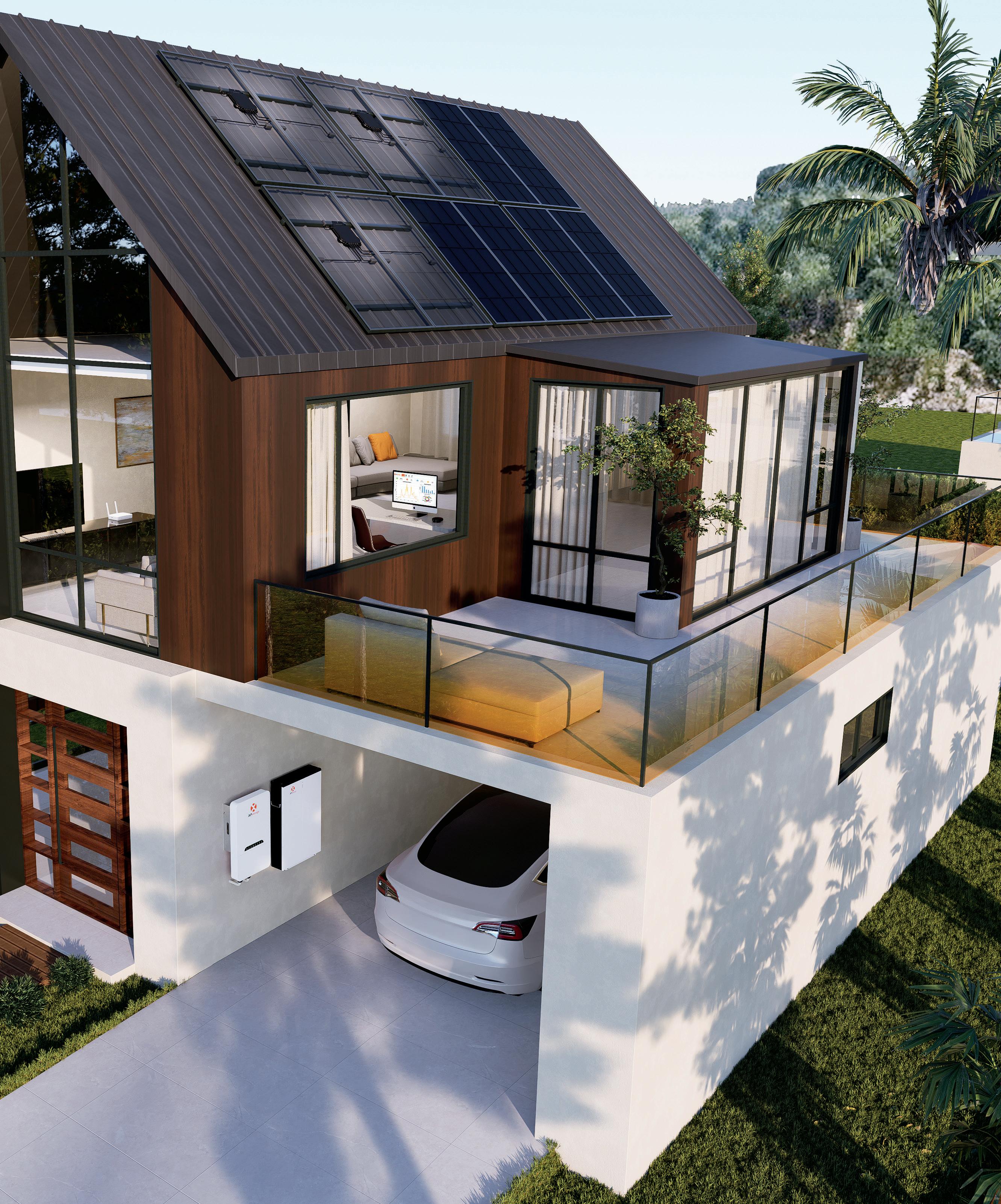


‘‘

